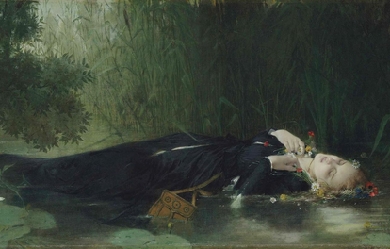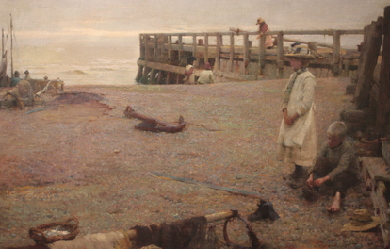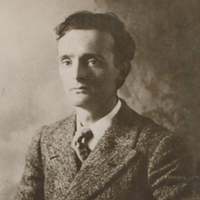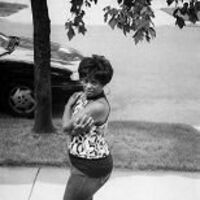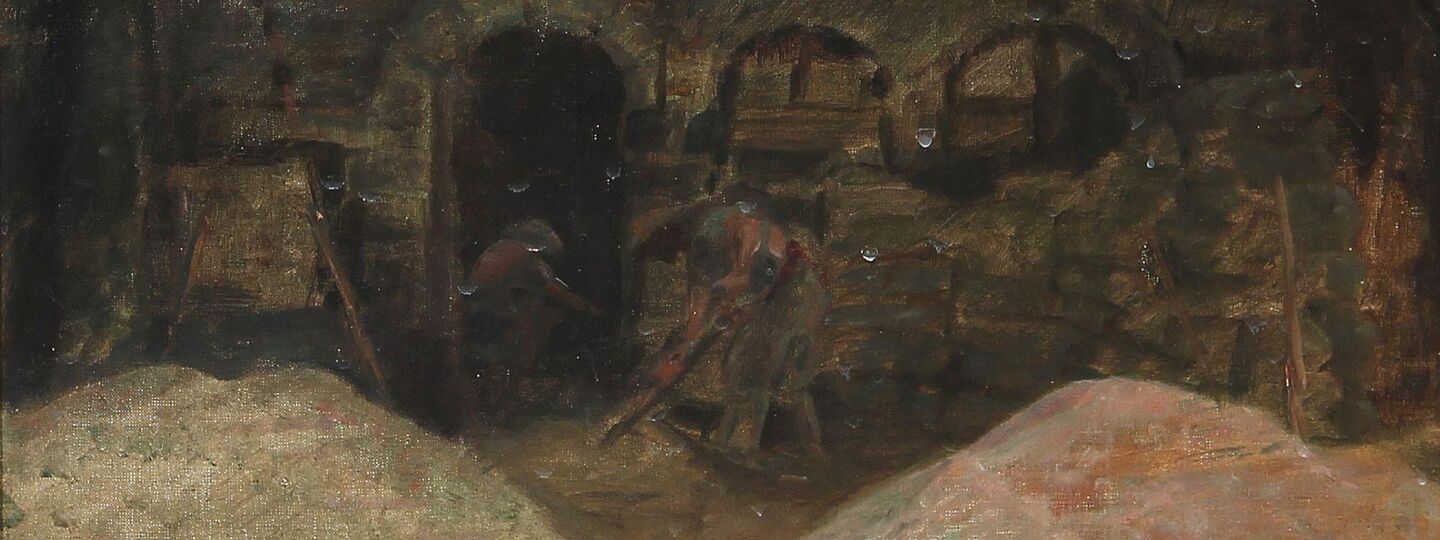
Info

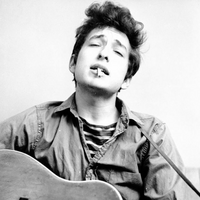
Bob Dylan (born Robert Allen Zimmerman; May 24, 1941) is an American musician, singer-songwriter, artist, and writer. He has been an influential figure in popular music and culture for more than five decades. Much of his most celebrated work dates from the 1960s when he was an informal chronicler and a seemingly reluctant figurehead of social unrest. A number of Dylan's early songs, such as “Blowin’ in the Wind” and “The Times They Are a-Changin”, became anthems for the US civil rights and anti-war movements. Leaving behind his initial base in the culture of the folk music revival, Dylan’s six-minute single “Like a Rolling Stone” radically altered the parameters of popular music in 1965. His recordings employing electric instruments attracted denunciation and criticism from others in the folk movement.
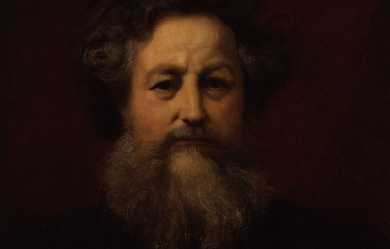
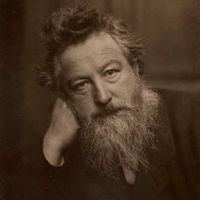
William Morris (24 March 1834 – 3 October 1896) was an English textile designer, poet, novelist, translator, and socialist activist. Associated with the British Arts and Crafts Movement, he was a major contributor to the revival of traditional British textile arts and methods of production. His literary contributions helped to establish the modern fantasy genre, while he played a significant role in propagating the early socialist movement in Britain.

We are asleep. Our life is a dream. But we wake up, sometimes, just enough to know that we are dreaming." — Ludwig Wittgenstein I've spent a lot of time researching religions, history, diffrent points of view, exploring conciousness and life, tring to find the truth for why the world is as bad as it is. This westernized society we live in has corrupted many people and has them living a lie. I know because I was living in it for a long time until i started to see the full spectrum of things. I see a lot of people running from what's inside of them and I see a lot of people caught up in the "matrix". With a lot of my poems I try to help bring people closer to the truth and achieve overall happiness in their lives. I dont expect for many to understand, but I'm here to help the best I can. Helping my brothers and sisters is what I love to do. Because shit, I am you. Liberating minds a rhyme at a time.
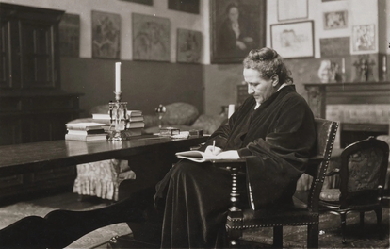

Gertrude Stein was born in Allegheny, Pennsylvania, on February 3, 1874, to wealthy German-Jewish immigrants. At the age of three, her family moved first to Vienna and then to Paris. They returned to America in 1878 and settled in Oakland, California. Her mother, Amelia, died of cancer in 1888 and her father, Daniel, died 1891. Stein attended Radcliffe College from 1893 to 1897, where she specialized in Psychology under noted psychologist William James. After leaving Radcliffe, she enrolled at the Johns Hopkins University, where she studied medicine for four years, leaving in 1901. Stein did not receive a formal degree from either institution. In 1903, Stein moved to Paris with Alice B. Toklas, a younger friend from San Francisco who would remain her partner and secretary throughout her life. The couple did not return to the United States for over thirty years. Together with Toklas and her brother Leo, an art critic and painter, Stein took an apartment on the Left Bank. Their home, 27 rue de Fleurus, soon became gathering spot for many young artists and writers including Henri Matisse, Ezra Pound, Pablo Picasso, Max Jacob, and Guillaume Apollinaire. She was a passionate advocate for the "new" in art, her literary friendships grew to include writers as diverse as William Carlos Williams, Djuana Barnes, F. Scott Fitzgerald, James Joyce, and Ernest Hemingway. It was to Hemingway that Stein coined the phrase "the lost generation" to describe the expatriate writers living abroad between the wars. By 1913, Stein's support of cubist painters and her increasingly avant-garde writing caused a split with her brother Leo, who moved to Florence. Her first book, Three Lives, was published in 1909. She followed it with Tender Buttons in 1914. Tender Buttons clearly showed the profound effect modern painting had on her writing. In these small prose poems, images and phrases come together in often surprising ways—similar in manner to cubist painting. Her writing, characterized by its use of words for their associations and sounds rather than their meanings, received considerable interest from other artists and writers, but did not find a wide audience. Sherwood Anderson in the introduction to Geography and Plays (1922) wrote that her writing "consists in a rebuilding, and entire new recasting of life, in the city of words." Among Stein's most influential works are The Making of Americans (1925); How to Write (1931); The Autobiography of Alice B. Toklas (1933), which was a best-seller; and Stanzas in Meditation and Other Poems [1929-1933] (1956). In 1934, the biographer T. S. Matthews described her as a "solid elderly woman, dressed in no-nonsense rough-spun clothes," with "deep black eyes that make her grave face and its archaic smile come alive." Stein died at the American Hospital at Neuilly on July 27, 1946, of inoperable cancer.
#Americans #Jews #Modern #Women #XIXCentury #XXCentury

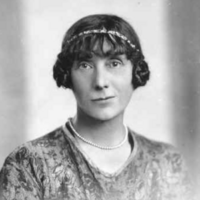
Jessie Pope (18 March 1868– 14 December 1941) was an English poet, writer and journalist, who remains best known for her patriotic motivational poems published during World War I. Wilfred Owen directed his 1917 poem Dulce et Decorum Est at Pope, whose literary reputation has faded into relative obscurity as those of war poets such as Owen and Siegfried Sassoon have grown. Early career Born in Leicester, she was educated at North London Collegiate School. She was a regular contributor to Punch, The Daily Mail and The Daily Express, also writing for Vanity Fair, Pall Mall Magazine and the Windsor. Prose editor A lesser-known literary contribution was Pope’s discovery of Robert Tressell’s novel The Ragged Trousered Philanthropists, when his daughter mentioned the manuscript to her after his death. Pope recommended it to her publisher, who commissioned her to abridge it before publication. This, a partial bowdlerisation, moulded it to a standard working-class tragedy while greatly downgrading its socialist political content. Verse Other works include Paper Pellets (1907), an anthology of humorous verse. She also wrote verses for children’s books, such as The Cat Scouts (Blackie, 1912) and the following eulogy to her friend, Bertram Fletcher Robinson (published in the Daily Express on Saturday 26 January 1907): Good Bye, kind heart; our benisons preceding, Shall shield your passing to the other side. The praise of your friends shall do your pleading In love and gratitude and tender pride. To you gay humorist and polished writer, We will not speak of tears or startled pain. You made our London merrier and brighter, God bless you, then, until we meet again! War poetry Pope’s war poetry was originally published in The Daily Mail; it encouraged enlistment and handed a white feather to youths who would not join the colours. Nowadays, this poetry is considered to be jingoistic, consisting of simple rhythms and rhyme schemes, with extensive use of rhetorical questions to persuade (and sometimes pressure) young men to join the war. This extract from Who’s for the Game? is typical in style: Who’s for the game, the biggest that’s played, The red crashing game of a fight? Who’ll grip and tackle the job unafraid? And who thinks he’d rather sit tight? Other poems, such as The Call (1915)– “Who’s for the trench– Are you, my laddie?”– expressed similar sentiments. Pope was widely published during the war, apart from newspaper publication producing three volumes: Jessie Pope’s War Poems (1915), More War Poems (1915) and Simple Rhymes for Stirring Times (1916). Criticism Her treatment of the subject is markedly in stark contrast to the anti-war stance of soldier poets such as Owen and Siegfried Sassoon. Many of these men found her work distasteful, Owen in particular. His poem Dulce et Decorum Est was a direct response to her writing, originally dedicated “To Jessie Pope etc.”. A later draft amended this as “To a certain Poetess”, later being removed completely to turn the poem into a general reproach on anyone sympathetic to the war. Pope is prominently remembered first for her pro-war poetry, but also as a representative of homefront female propagandists such as Mrs Humphry Ward, May Wedderburn Cannan, Emma Orczy, and entertainers such as Vesta Tilley. In particular, the poem “War Girls”, similar in structure to her pro-war poetry, states how "No longer caged and penned up/They’re going to keep their end up/Until the khaki soldier boys come marching back". Though largely unknown at the time, the War poets like Nichols, Sassoon and Owen, as well as later writers such as Edmund Blunden, Robert Graves, and Richard Aldington, have come to define the experience of the First World War. Reappraisal Pope’s work is today often presented in schools and anthologies as a counterpoint to the work of the War Poets, a comparison by which her pro-war work suffers both technically and politically. Some writers have attempted a partial re-appraisal of her work as an early pioneer of English women in the workforce, while still critical of both the content and artistic merit of her war poetry. Reminded that Pope was primarily a humourist and writer of light verse, her success in publishing and journalism during the pre-war era, when she was described as the “foremost woman humourist” of her day has been overshadowed by her propagandistic war poems. Her verse has been mined for sympathetic portrayals of the poor and powerless, of women urged to be strong and self-reliant. Her portrayal of the Suffragettes in a pair of counterpointed 1909 poems makes a case both for and against their actions. Later life After the war, Pope continued to rewrite, penning a short novel, poems—many of which continued to reflect upon the war and its aftermath—and books for children. She married a widower bank manager in 1929, when she was 61, and moved from London to Fritton, near Great Yarmouth. She died on 14 December 1941 in Devon.
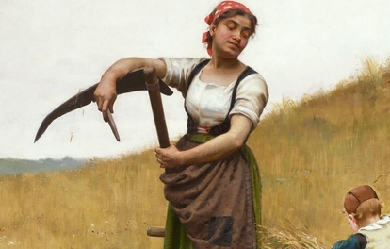

Isabella Valancy Crawford (25 December 1846– 12 February 1887) was an Irish-born Canadian writer and poet. She was one of the first Canadians to make a living as a freelance writer. “Crawford is increasingly being viewed as Canada’s first major poet.” She is the author of “Malcolm’s Katie,” a poem that has achieved “a central place in the canon of nineteenth-century Canadian poetry.” Life Isabella Valancy Crawford was the last surviving daughter of Dr. Stephen Crawford. She was born in Dublin, Ireland on Christmas Day, 1846. The family emigrated to Canada when she was ten years of age. Much of Isabella Crawford’s early life is unknown. By her own account she was born in Dublin, Ireland, the sixth daughter of Dr. Stephen Dennis Crawford and Sydney Scott; but “No record has been found of that marriage or of the birthdates and birthplaces of at least six children, of whom Isabella wrote that she was the sixth.” The family was in Canada by 1857; in that year, Dr. Crawford applied for a license to practice medicine in Paisley, Canada West. “In a few years, disease had taken nine of the twelve children, and a small medical practice had reduced the family to semi-poverty.” Dr. Crawford served as Treasurer of Paisley Township, but "a scandal of a missing $500 in misappropriated Township funds and the subsequent suicide of one of his bondsmen" caused the family to leave Paisley in 1861. By chance Dr. Crawford met Richard Strickland of Lakefield. Strickland invited the Crawfords to live at his home, out of charity, and because Lakefield did not have a doctor. There the family became acquainted with Strickland’s sisters, writers Susanna Moodie and Catherine Parr Traill. Isabella Crawford reportedly began writing at that time. She was also thought to be a close companion of Mrs. Traill’s daughter, Katharine (Katie). In 1869 the family moved to Peterborough, and Crawford began to write and publish poems and stories. Her first published poem, “A Vesper Star”, appeared in The Toronto Mail on Christmas Eve, 1873. "When Dr. Crawford died, on 3 July 1875, the three women"– Isabella, her mother, and her sister Emma, all who were left in the household– “became dependent on Isabella’s literary earnings.” After Emma died of tuberculosis, "Isabella and her mother moved in 1876 to Toronto, which was the centre of the publishing world in Canada.” “Although Isabella had been writing while still living in Lakefield... and had published poems in Toronto newspapers and stories in American magazines while living in Peterborough, when she moved to Toronto she turned her attention in earnest to the business of writing.” “During this productive period she contributed numerous serialized novels and novellas to New York and Toronto publications,” “including the Mail, the Globe, the National, and the Evening Telegram. She also contributed ”a quantity of 'occasional’ verse to the Toronto papers... and articles for the Fireside Monthly. In 1886 she became the first local writer to have a novel, A little Bacchante, serialized in the Evening Globe. In her lifetime Crawford published only one book, Old Spookses’ Pass, Malcolm’s Katie and Other Poems in 1884. It was privately printed and sold poorly. Crawford paid for the printing of 1,000 copies, and presumably sent out many review copies; “there were notices in such London journals as the Spectator, the Graphic, the Leisure Hour, and the Saturday Review. These articles pointed to ‘versatility of talent,’ and to such qualities as ‘humour, vivacity, and range of power,’ which were impressive and promising despite her extravagance of incident and ‘untrained magniloquence.’” However, only 50 books sold. “Crawford was understandably disappointed and felt she had been neglected by 'the High Priests of Canadian Periodical Literature’” (Arcturus 84).” Crawford died on 12 February 1887 in Toronto. She was buried in Peterborough’s Little Lake Cemetery near the Otonabee River. She had died in poverty and for years her body lay in an unmarked grave. A fundraising campaign was begun in 1899, and on 2 November 1900, a six-foot Celtic Cross was raised above her grave, inscribed: "Isabella Valancy Crawford / Poet / By the Gift of God.” Writing Crawford was a prolific writer. “For the most part Crawford’s prose followed the fashion of the feuilleton of the day.” Her magazine writing “displays a skilful and energetic use of literary conventions made popular by Dickens, such as twins and doubles, mysterious childhood disappearances, stony-hearted fathers, sacrificial daughters, wills and lost inheritances, recognition scenes, and, to quote one of her titles, 'A kingly restitution’.” As a whole, though, it “was romantic-Gothic ‘formula fiction.’” It is her poetry that has endured. Just two years after her death, W.D. Lighthall included generous selections from her book in his groundbreaking 1889 anthology, Songs of the Great Dominion, bringing it to a wider audience. “In the 20th century critics have given the work increasing respect and appreciation." "Crawford’s Collected Poems were edited (Toronto 1905) by J.W. Garvin, with an introduction by Ethelwyn Wetherald," a popular Canadian poet. Wetherald called Crawford “purely a genius, not a craftswoman, and a genius who has patience enough to be an artist.” In his 1916 anthology, Canadian Poets, Garvin stated that Crawford was “one of the greatest of women poets.” Poet Katherine Hale, Garvin’s wife, published a volume on Isabella Valancy Crawford in the 1920s Makers of Canada series. All of this helped Crawford’s poetry become more widely known. . A "serious critical assessment began in the mid-1940s with A.J.M. Smith, Northrop Frye, and E.K. Brown, who called her ‘the only Canadian woman poet of real importance in the last century.’" "Recognition of Isabella Valancy Crawford’s extraordinary mythopoeic power, and her structural use of images, came... in James Reaney’s lecture 'Isabella Valancy Crawford’ in Our living tradition (series 3, 1959)." Then a “renewed interest in Crawford resulted in the publication of forgotten manuscripts and critical articles” in the 1970s. "A reprint of the collected poems in 1972, with an introduction by poet James Reaney, made Crawford’s work generally available; six of her short stories, edited by Penny Petrone, appeared in 1975; and in 1977 the Borealis Press published a book of fairy stories and a long unfinished poem, ‘Hugh and Ion.’.” Crawford wrote a wide variety of poems, ranging from the Walter Scott-like doggerel (pun intended) of “Love Me, Love My Dog”, to the eerie mysticism of “The Camp of Souls” to the eroticism of The Lily Bed. But it is mainly Crawford’s "long narrative poems [that] have received particular attention." “Old Spookses’ Pass” is a dialect poem, set in the Rocky Mountains, concerning a dream vision of a midnight cattle stampede towards a black abyss that is stilled by a whirling lariat; “The helot” makes use of the Spartans’ practice of intoxicating their helots to teach their own children not to drink, as the starting-point for a highly incantatory and hypnotic poem that ends in Bacchic possession and death; and “Gisli the Chieftain” fuses mythic elements, such as the Russian spring goddess Lada and the Icelandic Brynhild, into a narrative of love, betrayal, murder, and reconciliation. These poems follow a pattern of depicting the world as a battleground of opposites– light and dark, good and evil– reconciled by sacrificial love.” Malcolm’s Katie The bulk of critical attention has gone to “Malcolm’s Katie.” That poem is a long narrative in blank verse, dealing mainly with the love and trials of young Max and Katie in the 19th-century Canadian bush, but containing a second running narrative recounting the war between the North and South Winds (Winter and Summer personified as First Nations warriors), and also a collection of love songs in different stanza forms. Many of those lauding the poem have seen their own interests reflected in it. For instance, socialist Livesay gave a reading that made the poem sound like a manifesto of Utopian socialism: Crawford presents a new myth of great significance to Canadian literature: the Canadian frontier as creating ‘the conditions for a new Eden,’ not a golden age or a millennium, but ‘a harmonious community, here and now.’ Crawford’s social consciousness and concern for humanity’s future committed her, far ahead of her time and milieu, to write passionate pleas for brotherhood, pacifism, and the preservation of a green world. Her deeply felt belief in a just society wherein men and women would have equal status in a world free from war, class hatred, and racial prejudice dominates all her finest poetry.” Others have similarly seen their concerns reflected in the poem. “Malcolm’s Katie has been given a nationalistic reading by Robin Mathews, a feminist reading by Clara Thomas, a biographical reading by Dorothy Farmiloe and a Marxian reading by Kenneth Hughes, as well as various literary-historical readings by Dorothy Livesay, Elizabeth Waterston, John Ower, Robert Alan Burns and others.” Not just interpretations on the poem’s meaning, but evaluations of its worth, have varied widely. Its detractors have included poet Louis Dudek, who called Crawford “'a failed poet’ of 'hollow convention... counterfeit feeling... and fake idealism’”; and Roy Daniells, who in The Literary History of Canada (1965) called “Malcolm’s Katie” “a preposterously romantic love story on a Tennysonian model in which a wildly creaking plot finally delivers true love safe and triumphant.” Some of the poem’s supporters concede the Tennyson influence but point out that there is much more to it: “While appearing on the surface melodramatic and stereotyped, Crawford’s love story is compelling and powerful; what seems at first a conventional conflict between rival suitors for the hand of the heroine becomes a serious, even profound, account of philosophical, social and ideological confrontations.” “In ‘Malcolm’s Katie’ Crawford adapted to the setting of pioneer Canada the domestic idyll as she learned it from Tennyson. Striking and new, however, is Crawford’s location of Max and Katie’s conventional love story within a context of Native legends—Indian Summer and the battle of the North and South Winds.” This myth telling (however accurate it was as a portrayal of First Nations beliefs) is what many of its supporters see as giving the poem its power. For instance, writing about “Malcolm’s Katie, critic Northrop Frye pronounced Crawford ”the most remarkable mythopoeic imagination in Canadian poetry": the “framework’ of Isabella Crawford is that of an intelligent and industrious female songbird of the kind who filled so many anthologies in the last century. Yet the ”South Wind" passage from Malcolm’s Katie is only the most famous example of the most remarkable mythopoeic imagination in Canadian poetry. She puts her myth in an Indian form, which reminds us of the resemblance between white and Indian legendary heroes in the New World, between Paul Bunyan and Davy Crockett on the one hand and Glooscap on the other. The white myths are not necessarily imitated from the Indian ones, but they may have sprung from an unconscious feeling that the primitive myth expressed the imaginative impact of the country as more artificial literature could never do.” Frye believed, and thought Crawford’s “poetic sense” told her, “that the most obvious development in the romantic landscape is toward the mythological”; and he saw Crawford’s attempt at an indigenous Canadian myth as the intellectual equivalent of the simultaneous pioneer exploration and settlement: “In the long mythopoeic passage from Isabella Crawford’s Malcolm’s Katie, beginning ‘The South Wind laid his moccasins aside,’ we see how the poet is, first, taming the landscape imaginatively, as settlement tames it physically, by animating the lifeless scene with humanized figures, and, second, integrating the literary tradition of the country by deliberately re-establishing the broken cultural link with Indian civilization.” Hugh and Ion Dorothy Livesay, researching Crawford’s life for the Dictionary of Canadian Biography in 1977, discovered the manuscript of an uncompleted narrative poem in the Crawford fonds at Kingston, Ontario’s Queen’s University. Called Hugh and Ion, it deals with "Hugh and Ion, two friends who have fled the noxious city—probably contemporary Toronto—for purification in the primal wilderness [and] carry on a sustained dialogue, Hugh arguing for hope, light, and redemption and Ion pointing out despair, darkness, and intractable human perversity." Perhaps due to Crawford’s Toronto experiences, this last poem marked a significant change in her views, showing the city as “a demonic, urban world of isolation and blindness which has wilfully cut itself off from the regenerative power of the wildernese. The confident innocence and romantic idealism, which account for much of the inner fire of Malcolm’s Katie, have simply ceased to be operative.... Nowhere else in nineteenth-century Canadian literature, with the exception of Lampman’s ”the End of Things", is there another example of the creative imagination being brought to bear, in so Blakean a manner, on the nascent social evils of the ‘infant city.’” Recognition Isabella Valancy Crawford was designated a Person of National Historic Significance in 1947. A small garden park in downtown Toronto, at Front and John Streets (near the CN Tower), has been named Isabella Valancy Crawford Park.

hi I'm Allison. "Some of us get dipped in flat, some in satin, some in gloss.... But every once in a while, you find someone who's iridescent, and when you do, nothing will ever compare.” “My heart stopped. It just stopped beating. And for the first time in my life, I had that feeling. You know, like the world is moving all around you, all beneath you, all inside you, and you're floating. Floating in midair. And the only thing keeping you from drifting away is the other person's eyes. They're connected to yours by some invisible physical force, and they hold you fast while the rest of the world swirls and twirls and falls completely away.”

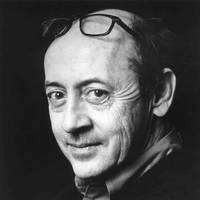
William James “Billy” Collins (born March 22, 1941) is an American poet, appointed as Poet Laureate of the United States from 2001 to 2003. He is a Distinguished Professor at Lehman College of the City University of New York and is the Senior Distinguished Fellow of the Winter Park Institute, Florida. Collins was recognized as a Literary Lion of the New York Public Library (1992) and selected as the New York State Poet for 2004 through 2006. He is (in 2015) a teacher in the MFA program at Stony Brook Southampton. Early years Collins was born in Manhattan to William and Katherine Collins and grew up in Queens and White Plains. Collins was a very late child who parents were both 39 at the time, which was very late back then. William, his dad was from a big family from Ireland and Katherine his mom was from Canada. Katherine Collins was a nurse who stopped working to raise the couple’s only child. Mrs. Collins had the ability to recite verses on almost any subject, which she often did, and cultivated in her young son the love of words, both written and spoken. Billy Collins attended Archbishop Stepinac High School in White Plains and received a B.A. in English from the College of the Holy Cross in 1963; he received his M.A. and Ph.D in Romantic Poetry from the University of California, Riverside. His professors at Riverside included Victorian scholar and poet Robert Peters. In 1975 Collins founded The Mid-Atlantic Review with his friend Walter Blanco and Steve Bailey. As a kid in middle school Collins was writing dark, Gothic-poetry. Collins started to get more into poetry because his dad would bring Poetry magazine home from his work. There he came under the influence of contemporary poets like Karl Shapiro, Howard Nemerov and Reed Whittemore.During his adolescence he was influence by Beat Generation with poems like “Howl”; who were a group of authors around the 50’s after WWII who would write about materialism, human condition and religion. Career Collins is a Distinguished Professor of English at Lehman College in the Bronx, where he joined the faculty in 1968. Additionally, he is a founding Advisory Board member of the CUNY Institute for Irish-American Studies at Lehman College. He also has taught and served as a visiting writer at Sarah Lawrence College in Bronxville, New York as well as teaching workshops across the U.S. and in Ireland. Collins is a member of the faculty of SUNY Stony Brook Southampton, where (2015) he teaches poetry workshops. Collins was named U.S. Poet Laureate in 2001 and held the title until 2003. Collins served as Poet Laureate for the State of New York from 2004 until 2006. Collins enjoyed a stint with the Winter Park Institute in Winter Park, Florida, an affiliate of Rollins College. Named the Senior Distinguished Fellow at the Winter Park Institute, his affiliation that began in 2008 ended in 2015 when the college’s interim president, Craig MacAllaster, emailed Collins saying his contract would not be renewed because of budget issues. Collins invited friends of his to be guests at the Institute, including such luminaries as Pulitzer Prize winners Jules Feiffer and Marsha Norman, Paul Simon, Sir Paul McCartney, and Jane Pauley. In 2012, Collins became Poetry Consultant for Smithsonian Magazine. During the summer of 2013, Collins guest hosted Garrison Keillor’s popular daily radio broadcast, The Writer’s Alamanac, on NPR. Collins has been invited to read at The White House three times—in 2001, 2011, and 2014. In 2014 he traveled to Russia as a cultural emissary of the U.S. State Department. In 2013 and 2015, Collins toured with the singer-songwriter Aimee Mann, performing on stage with her in a music-poetry-conversation format. Collins and Paul Simon have engaged in four onstage conversations about poetry, music, and lyrics, starting in 2008. The conversations were held in 2008 at New York’s 92nd Street Y and The Winter Park Institute, in 2013 at the Chautauqua Institution, and in 2013 at Emory University as part of the Richard Ellman Lectures in Modern Literature, where Simon was the 2013 Richard Ellman Lecturer. Collins presented a TED talk, Everyday moments, caught in time at TED 2012. Collins, as one of the Favorite 100 TED speakers of all time, was invited to give another TED talk at TED 2014 in Vancouver, Canada. As U.S. Poet Laureate, Collins read his poem The Names at a special joint session of the United States Congress on September 6, 2002, held to remember the victims of the 9/11 attacks. Though, unlike their British counterparts, U.S. poets laureate are not asked or expected to write occasional poetry, Collins was asked by the Librarian of Congress to write a poem especially for that event. Collins initially refused to read “The Names” in public, though he has read it two times in public since 2002. He vowed not to include it in any of his books, refusing to capitalize on the 9/11 attacks. However, “The Names” was included in the The Poets Laureate Anthology put out by the Library of Congress, for which Collins wrote the foreword. The only book-published version of “The Names”, it contains a number of regrettable typographical errors. The poem also appeared in the New York Times, September 6, 2002. Collins finally agreed to include “The Names” in his new and selected volume Aimless Love in 2013. As Poet Laureate, Collins instituted the program Poetry 180 for high schools. Collins chose 180 poems for the program and the accompanying book, Poetry 180: A Turning Back to Poetry—one for each day of the school year. Collins edited a second anthology, 180 More Extraordinary Poems for Every Day to refresh the supply of available poems. The program is online, and poems are available there for no charge. In 1997, Collins recorded The Best Cigarette, a collection of 34 of his poems, that would become a bestseller. In 2005, the CD was re-released under a Creative Commons license, allowing free, non-commercial distribution of the recording. He also recorded two of his poems for the audio versions of Garrison Keillor’s collection Good Poems (2002). Collins has appeared on Keillor’s radio show, A Prairie Home Companion, numerous times, where he gained a portion of his large following. In 2005, Collins recorded Billy Collins Live: A Performance in New York City. Collins was introduced by his friend, actor Bill Murray. Billy Collins has been called “The most popular poet in America” by the New York Times. When he moved from the University of Pittsburgh Press to Random House, the advance he received shocked the poetry world—a six-figure sum for a three-book deal, virtually unheard of in poetry. The deal secured for Collins through his literary agent, Chris Calhoun, then of Sterling Lord Literistic, with the editor Daniel Menaker, remained the talk of the poetry world, and indeed the literary world, for quite some time. Over the years, the U.S. magazine Poetry has awarded Collins several prizes in recognition of poems they publish. During the 1990s, Collins won five such prizes. The magazine also selected him as “Poet of the Year” in 1994. In 2005 Collins was the first annual recipient of its Mark Twain Prize for Humor in Poetry. He has received fellowships from the National Endowment for the Arts, the New York Foundation for the Arts and in 1993, from the John Simon Guggenheim Foundation. A major accomplishment of his is in 2002, Collins was asked to write a poem commemorating the first anniversary of the fall of the Twin Towers on September 11. The reading was in front of a joint session of Congress held outside of Washington D.C. One of his most critically acclaimed works, “Fishing on the Susquehanna in July” has been added to the preserved works of the United States Native American literary registry as being deemed a culturally significant poem. The poem has been included on national Advance Placement exams for high school students. In 2012, Collins appeared as himself in an episode of the PBS animated series Martha Speaks. Collins is on the editorial board at The Alaska Quarterly Review. Most recently he contributed to the 30th anniversary edition. He is on the advisory board at the Southern Review, and is similarly named in other journals. Awards and honors 1983 Fellowship from the New York Foundation for the Arts 1986 Fellowship from the National Endowment for the Arts 1991 National Poetry Series publication prize. Winner for Questions About Angels 1992 New York Public Library “Literary Lion” 1993 Fellowship from the John Simon Guggenheim Foundation 1994 Poetry magazine’s “Poet of the Year” 1995 Lenore Marshall Poetry Prize, Academy of American Poets. Shortlist for The Art of Drowning 2001 American Irish Historical Society Cultural Award 2001–2003 United States Poet Laureate 2004–2006 New York State Poet Laureate 2005 Mark Twain Award for Humor in Poetry 2013 Donald Hall-Jane Kenyon Prize in American Poetry 2014 Norman Mailer Prize for Poetry Other Awards include these from Poetry magazine: The Oscar Blumenthal Prize The Bess Hokin Prize The Frederick Bock Prize The Levinson Prize Poetry collections * Pokerface (1977) * Video Poems (1980) * The Apple That Astonished Paris. University of Arkansas Press. 1988. ISBN 978-1-55728-024-4. See also version printed by University of Arkansas Press, 2006, ISBN 978-1-55728-823-3 * The Art of Drowning. University of Pittsburgh Press. 1995. ISBN 978-0-8229-5567-2. * Picnic, Lightning. University of Pittsburgh Press. 1998. ISBN 978-0822956709. * Questions About Angels. University of Pittsburgh Press. 1999. ISBN 978-0822956983. * Taking Off Emily Dickinson’s Clothes. Picador. 2000. ISBN 978-0330376501. * Sailing Alone Around the Room: New and Selected Poems. Random House. 2001–2002. ISBN 978-0-375-75519-4. * Nine Horses. Random House, Inc. 2002. ISBN 978-1-58836-278-0. * The Trouble with Poetry. 2005. ; Random House, Inc., 2007, ISBN 978-0-375-75521-7 * She Was Just Seventeen. Modern Haiku Press. 2006. ISBN 978-0974189420. * Ballistics. 2008. ISBN 978-1-4000-6491-5. * Horoscopes for the Dead. Random House. 2011. ISBN 978-1-4000-6492-2. * Aimless Love. Random House. 2013. ISBN 978-0-6796-4405-7. * Voyage. Bunker Hill Publishing. 2014. ISBN 978-1-59373-154-0. References Wikipedia—https://en.wikipedia.org/wiki/Billy_Collins
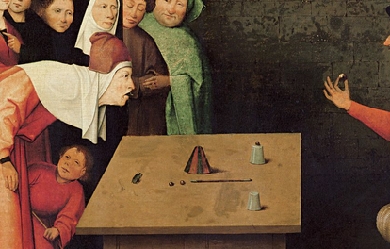

Aleister Crowley (/ˈkroʊli/; born Edward Alexander Crowley; 12 October 1875– 1 December 1947) was an English occultist, ceremonial magician, poet, painter, novelist, and mountaineer. He founded the religion and philosophy of Thelema, identifying himself as the prophet entrusted with guiding humanity into the Æon of Horus in the early 20th century. Born to a wealthy Plymouth Brethren family in Royal Leamington Spa, Warwickshire, Crowley rejected this fundamentalist Christian faith to pursue an interest in Western esotericism. He was educated at the University of Cambridge, where he focused his attentions on mountaineering and poetry, resulting in several publications. Some biographers allege that here he was recruited into a British intelligence agency, further suggesting that he remained a spy throughout his life. In 1898 he joined the esoteric Hermetic Order of the Golden Dawn, where he was trained in ceremonial magic by Samuel Liddell MacGregor Mathers and Allan Bennett. Moving to Boleskine House by Loch Ness in Scotland, he went mountaineering in Mexico with Oscar Eckenstein, before studying Hindu and Buddhist practices in India. He married Rose Edith Kelly and in 1904 they honeymooned in Cairo, Egypt, where Crowley claimed to have been contacted by a supernatural entity named Aiwass, who provided him with The Book of the Law, a sacred text that served as the basis for Thelema. Announcing the start of the Æon of Horus, The Book declared that its followers should adhere to the code of “Do what thou wilt” and seek to align themselves with their Will through the practice of magick. After an unsuccessful attempt to climb Kanchenjunga and a visit to India and China, Crowley returned to Britain, where he attracted attention as a prolific author of poetry, novels, and occult literature. In 1907, he and George Cecil Jones co-founded a Thelemite order, the A∴A∴, through which they propagated the religion. After spending time in Algeria, in 1912 he was initiated into another esoteric order, the German-based Ordo Templi Orientis (O.T.O.), rising to become the leader of its British branch, which he reformulated in accordance with his Thelemite beliefs. Through the O.T.O., Thelemite groups were established in Britain, Australia, and North America. Crowley spent the First World War in the United States, where he took up painting and campaigned for the German war effort against Britain, later revealing that he had infiltrated the pro-German movement to assist the British intelligence services. In 1920 he established the Abbey of Thelema, a religious commune in Cefalù, Sicily where he lived with various followers. His libertine lifestyle led to denunciations in the British press, and the Italian government evicted him in 1923. He divided the following two decades between France, Germany, and England, and continued to promote Thelema until his death. Crowley gained widespread notoriety during his lifetime, being a recreational drug experimenter, bisexual and an individualist social critic. He was denounced in the popular press as “the wickedest man in the world” and a Satanist. Crowley has remained a highly influential figure over Western esotericism and the counter-culture, and continues to be considered a prophet in Thelema. In 2002, a BBC poll ranked him as the seventy-third greatest Briton of all time. Early life Youth: 1875–94 Crowley was born as Edward Alexander Crowley at 30 Clarendon Square in Royal Leamington Spa, Warwickshire, on 12 October 1875. His father, Edward Crowley (1834–87), was trained as an engineer, but his share in a lucrative family brewing business, Crowley’s Alton Ales, had allowed him to retire before his son was born. His mother, Emily Bertha Bishop (1848–1917), came from a Devonshire-Somerset family and had a strained relationship with her son; she described him as “the Beast”, a name that he revelled in. The couple had been married at London’s Kensington Registry Office in November 1874, and were evangelical Christians. Crowley’s father had been born a Quaker, but had converted to the Exclusive Brethren, a faction of a Christian fundamentalist group known as the Plymouth Brethren, with Emily joining him upon marriage. Crowley’s father was particularly devout, spending his time as a travelling preacher for the sect and reading a chapter from the Bible to his wife and son after breakfast every day. Following the death of their baby daughter in 1880, in 1881 the Crowleys moved to Redhill, Surrey. At the age of 8, Crowley was sent to H.T. Habershon’s evangelical Christian boarding school in Hastings, and then to Ebor preparatory school in Cambridge, run by the Reverend Henry d’Arcy Champney, whom Crowley considered a sadist. In March 1887, when Crowley was 11, his father died of tongue cancer. Crowley described this as a turning point in his life, and he always maintained an admiration of his father, describing him as “his hero and his friend”. Inheriting a third of his father’s wealth, he began misbehaving at school and was harshly punished by Champney; Crowley’s family removed him from the school when he developed albuminuria. He then attended Malvern College and Tonbridge School, both of which he despised and left after a few terms. He became increasingly sceptical regarding Christianity, pointing out inconsistencies in the Bible to his religious teachers, and went against the Christian morality of his upbringing by smoking, masturbating, and having sex with prostitutes from whom he contracted gonorrhea. Sent to live with a Brethren tutor in Eastbourne, he undertook chemistry courses at Eastbourne College. Crowley developed interests in chess, poetry, and mountain climbing, and in 1894 climbed Beachy Head before visiting the Alps and joining the Scottish Mountaineering Club. The following year he returned to the Bernese Alps, climbing the Eiger, Trift, Jungfrau, Mönch, and Wetterhorn. Cambridge University: 1895–98 Having adopted the name of Aleister over Edward, in October 1895 Crowley began a three-year course at Trinity College, Cambridge, where he was entered for the Moral Science Tripos studying philosophy. With approval from his personal tutor, he changed to English literature, which was not then part of the curriculum offered. Crowley spent much of his time at university engaged in his pastimes, becoming president of the chess club and practising the game for two hours a day; he briefly considered a professional career as a chess player. Crowley also embraced his love of literature and poetry, particularly the works of Richard Francis Burton and Percy Bysshe Shelley. Many of his own poems appeared in student publications such as The Granta, Cambridge Magazine, and Cantab. He continued his mountaineering, going on holiday to the Alps to climb every year from 1894 to 1898, often with his friend Oscar Eckenstein, and in 1897 he made the first ascent of the Mönch without a guide. These feats led to his recognition in the Alpine mountaineering community. Crowley had his first significant mystical experience while on holiday in Stockholm in December 1896. Several biographers, including Lawrence Sutin, Richard Kaczynski, and Tobias Churton, believed that this was the result of Crowley’s first same-sex sexual experience, which enabled him to recognise his bisexuality. At Cambridge, Crowley maintained a vigorous sex life, largely with female prostitutes, from one of whom he caught syphilis, but eventually he took part in same-sex activities, despite their illegality. In October 1897, Crowley met Herbert Charles Pollitt (1871-1942), president of the Cambridge University Footlights Dramatic Club, and the two entered into a relationship. They broke apart because Pollitt did not share Crowley’s increasing interest in Western esotericism, a breakup that Crowley would regret for many years. Pollitt, collector and connoisseur, assumed the Christian name Jerome. He began to correspond with Oscar Wilde in 1898; Aubrey Beardsley designed him a bookplate for his use. In 1897, Crowley travelled to St Petersburg in Russia, later claiming that he was trying to learn Russian as he was considering a future diplomatic career there. Biographers Richard Spence and Tobias Churton suggested that Crowley had done so as an intelligence agent under the employ of the British secret service, speculating that he had been enlisted while at Cambridge. In October 1897, a brief illness triggered considerations of mortality and “the futility of all human endeavour”, and Crowley abandoned all thoughts of a diplomatic career in favour of pursuing an interest in the occult. In March 1898, he obtained A.E. Waite’s The Book of Black Magic and of Pacts (1898), and then Karl von Eckartshausen’s The Cloud Upon the Sanctuary (1896), furthering his occult interests. In 1898 Crowley privately published 100 copies of his poem Aceldama: A Place to Bury Strangers In, but it was not a particular success. That same year he published a string of other poems, including White Stains, a Decadent collection of erotic poetry that was printed abroad lest its publication be prohibited by the British authorities. In July 1898, he left Cambridge, not having taken any degree at all despite a “first class” showing in his 1897 exams and consistent “second class honours” results before that. The Golden Dawn: 1898–99 In August 1898, Crowley was in Zermatt, Switzerland, where he met the chemist Julian L. Baker, and the two began discussing their common interest in alchemy. Back in London, Baker introduced Crowley to George Cecil Jones, Baker’s brother in-law, and a fellow member of the occult society known as the Hermetic Order of the Golden Dawn, which had been founded in 1888. Crowley was initiated into the Outer Order of the Golden Dawn on 18 November 1898 by the group’s leader, Samuel Liddell MacGregor Mathers. The ceremony took place in the Golden Dawn’s Isis-Urania Temple held at London’s Mark Masons Hall, where Crowley took the magical motto and name “Frater Perdurabo”, which he interpreted as “I shall endure to the end”. Biographers Richard Spence and Tobias Churton have suggested that Crowley joined the Order under the command of the British secret services to monitor the activities of Mathers, who was known to be a Carlist. Crowley moved into his own luxury flat at 67–69 Chancery Lane and soon invited a senior Golden Dawn member, Allan Bennett, to live with him as his personal magical tutor. Bennett taught Crowley more about ceremonial magic and the ritual use of drugs, and together they performed the rituals of the Goetia, until Bennett left for South Asia to study Buddhism. In November 1899, Crowley purchased Boleskine House in Foyers on the shore of Loch Ness in Scotland. He developed a love of Scottish culture, describing himself as the “Laird of Boleskine”, and took to wearing traditional highland dress, even during visits to London. He continued writing poetry, publishing Jezebel and Other Tragic Poems, Tales of Archais, Songs of the Spirit, Appeal to the American Republic, and Jephthah in 1898–99; most gained mixed reviews from literary critics, although Jephthah was considered a particular critical success. Crowley soon progressed through the lower grades of the Golden Dawn, and was ready to enter the group’s inner Second Order. He was unpopular in the group; his bisexuality and libertine lifestyle had gained him a bad reputation, and he had developed feuds with some of the members, including W.B. Yeats. When the Golden Dawn’s London lodge refused to initiate Crowley into the Second Order, he visited Mathers in Paris, who personally admitted him into the Adeptus Minor Grade. A schism had developed between Mathers and the London members of the Golden Dawn, who were unhappy with his autocratic rule. Acting under Mathers’ orders, Crowley– with the help of his mistress and fellow initiate Elaine Simpson– attempted to seize the Vault of the Adepts, a temple space at 36 Blythe Road in West Kensington, from the London lodge members. When the case was taken to court, the judge ruled in favour of the London lodge, as they had paid for the space’s rent, leaving both Crowley and Mathers isolated from the group. Spence suggested that the entire scenario was part of an intelligence operation to undermine Mathers’ authority. Mexico, India, Paris, and marriage: 1900–03 In 1900, Crowley travelled to Mexico via the United States, settling in Mexico City and taking a local woman as his mistress. Developing a love of the country, he continued experimenting with ceremonial magic, working with John Dee’s Enochian invocations. He later claimed to have been initiated into Freemasonry while there, and he wrote a play based on Richard Wagner’s Tannhäuser as well as a series of poems, published as Oracles (1905). Eckenstein joined him later that year, and together they climbed several mountains, including Iztaccihuatl, Popocatepetl, and Colima, the latter of which they had to abandon owing to a volcanic eruption. Spence has suggested that the purpose of the trip might have been to explore Mexican oil prospects for British intelligence. Leaving Mexico, Crowley headed to San Francisco before sailing for Hawaii aboard the Nippon Maru. On the ship he had a brief affair with a married woman named Mary Alice Rogers; saying he had fallen in love with her, he wrote a series of poems about the romance, published as Alice: An Adultery (1903). Briefly stopping at Japan and Hong Kong, Crowley reached Ceylon, where he met with Allan Bennett, who was there studying Shaivism. The pair spent some time in Kandy before Bennett decided to become a Buddhist monk in the Theravada tradition, travelling to Burma to do so. Crowley decided to tour India, devoting himself to the Hindu practice of raja yoga, from which he claimed to have achieved the spiritual state of dhyana. He spent much of this time studying at the Meenakshi Amman Temple in Madura, and also wrote poetry which was published as The Sword of Song (1904). He contracted malaria, and had to recuperate from the disease in Calcutta and Rangoon. In 1902, he was joined in India by Eckenstein and several other mountaineers: Guy Knowles, H. Pfannl, V. Wesseley, and Jules Jacot-Guillarmod. Together the Eckenstein-Crowley expedition attempted K2, which had never been climbed. On the journey, Crowley was afflicted with influenza, malaria, and snow blindness, and other expedition members were also struck with illness. They reached an altitude of 20,000 feet (6,100 m) before turning back. Arriving in Paris in November 1902, he hung out with his friend and future brother-in-law, the painter Gerald Kelly, and through him became a fixture of the Parisian arts scene, authoring a series of poems on the work of an acquaintance, the sculptor Auguste Rodin, published as Rodin in Rime (1907). One of those frequenting this milieu was W. Somerset Maugham, who after briefly meeting Crowley later used him as a model for the character of Oliver Haddo in his novel The Magician (1908). Returning to Boleskine in April 1903, in August Crowley wed Gerald’s sister Rose Edith Kelly in a “marriage of convenience” to prevent her entering an arranged marriage; the marriage appalled the Kelly family and damaged his friendship with Gerald. Heading on a honeymoon to Paris, Cairo, and then Ceylon, Crowley fell in love with Rose and worked to prove his affections. While on his honeymoon, he wrote her a series of love poems, published as Rosa Mundi and other Love Songs (1906), as well as authoring the religious satire Why Jesus Wept (1904). Developing Thelema Egypt and The Book of the Law: 1904 In February 1904, Crowley and Rose arrived in Cairo. Claiming to be a prince and princess, they rented an apartment in which Crowley set up a temple room and began invoking ancient Egyptian deities, while studying Islamic mysticism and Arabic. According to Crowley’s later account, Rose regularly became delirious and informed him “they are waiting for you”. On 18 March, she explained that “they” were the god Horus, and on 20 March proclaimed that “the Equinox of the Gods has come”. She led him to a nearby museum, where she showed him a seventh-century BCE mortuary stele known as the Stele of Ankh-ef-en-Khonsu; Crowley thought it important that the exhibit’s number was 666, the number of the beast in Christian belief, and in later years termed the artefact the “Stele of Revealing.” According to Crowley’s later statements, on 8 April he heard a disembodied voice that claimed to be that of Aiwass, the messenger of Horus, or Hoor-Paar-Kraat. Crowley said that he wrote down everything the voice told him over the course of the next three days, and titled it Liber L vel Legis or The Book of the Law. The book proclaimed that humanity was entering a new Aeon, and that Crowley would serve as its prophet. It stated that a supreme moral law was to be introduced in this Aeon, “Do what thou wilt shall be the whole of the Law,” and that people should learn to live in tune with their Will. This book, and the philosophy that it espoused, became the cornerstone of Crowley’s religion, Thelema. Crowley said that at the time he had been unsure what to do with The Book of the Law. Often resenting it, he said that he ignored the instructions which the text commanded him to perform, which included taking the Stele of Revealing from the museum, fortifying his own island, and translating the book into all the world’s languages. According to his account, he instead sent typescripts of the work to several occultists he knew, putting the manuscript away and ignoring it. Kangchenjunga and China: 1905–06 Returning to Boleskine, Crowley came to believe that Mathers had begun using magic against him, and the relationship between the two broke down. On 28 July 1905, Rose gave birth to Crowley’s first child, a daughter named Lilith, with Crowley authoring the pornographic Snowdrops From a Curate’s Garden to entertain his recuperating wife. He also founded a publishing company through which to publish his poetry, naming it the Society for the Propagation of Religious Truth in parody of the Society for Promoting Christian Knowledge. Among its first publications were Crowley’s Collected Works, edited by Ivor Back. His poetry often received strong reviews (either positive or negative), but never sold well. In an attempt to gain more publicity, he issued a reward of £100 for the best essay on his work. The winner of this was J. F. C. Fuller, a British Army officer and military historian, whose essay, The Star in the West (1907), heralded Crowley’s poetry as some of the greatest ever written. Crowley decided to climb Kangchenjunga in the Himalayas of Nepal, widely recognised as the world’s most treacherous mountain. Assembling a team consisting of Jacot-Guillarmod, Charles Adolphe Reymond, Alexis Pache, and Alcesti C. Rigo de Righi, the expedition was marred by much argument between Crowley and the others, who thought that he was reckless. They eventually mutinied against Crowley’s control, with the other climbers heading back down the mountain as nightfall approached despite Crowley’s warnings that it was too dangerous. Subsequently, Pache and several porters were killed in an accident, something for which Crowley was widely blamed by the mountaineering community. Spending time in Moharbhanj, where he took part in big game hunting and wrote the homoerotic work The Scented Garden, Crowley met up with Rose and Lilith in Calcutta before being forced to leave India after shooting dead a native man who tried to mug him. Briefly visiting Bennett in Burma, Crowley and his family decided to tour Southern China, hiring porters and a nanny for the purpose. Spence has suggested that this trip to China was orchestrated as part of a British intelligence scheme to monitor the region’s opium trade. Crowley smoked opium throughout the journey, which took the family from Tengyueh through to Yungchang, Tali, Yunnanfu, and then Hanoi. On the way he spent much time on spiritual and magical work, reciting the “Bornless Ritual”, an invocation to his Holy Guardian Angel, on a daily basis. While Rose and Lilith returned to Europe, Crowley headed to Shanghai to meet old friend Elaine Simpson, who was fascinated by The Book of the Law; together they performed rituals in an attempt to contact Aiwass. Crowley then sailed to Japan and Canada, before continuing to New York City, where he unsuccessfully solicited support for a second expedition up Kangchenjunga. Upon arrival in Britain, Crowley learned that his daughter Lilith had died of typhoid in Rangoon, something he later blamed on Rose’s increasing alcoholism. Under emotional distress, his health began to suffer, and he underwent a series of surgical operations. He began short-lived romances with actress Vera “Lola” Neville (née Snepp) and author Ada Leverson, while Rose gave birth to Crowley’s second daughter, Lola Zaza, in February 1907. The A∴A∴ and the Holy Books of Thelema: 1907–09 With his old mentor George Cecil Jones, Crowley continued performing the Abramelin rituals at the Ashdown Park Hotel in Coulsdon, Surrey. Crowley claimed that in doing so he attained samadhi, or union with Godhead, thereby marking a turning point in his life. Making heavy use of hashish during these rituals, he wrote an essay on “The Psychology of Hashish” (1909) in which he championed the drug as an aid to mysticism. He also claimed to have been contacted once again by Aiwass in late October and November 1907, adding that Aiwass dictated two further texts to him, “Liber VII” and “Liber Cordis Cincti Serpente”, both of which were later classified in the corpus of Holy Books of Thelema. Crowley wrote down more Thelemic Holy Books during the last two months of the year, including “Liber LXVI”, “Liber Arcanorum”, “Liber Porta Lucis, Sub Figura X”, “Liber Tau”, “Liber Trigrammaton” and “Liber DCCCXIII vel Ararita”, which he again claimed to have received from a preternatural source. Crowley stated that in June 1909, when the manuscript of The Book of the Law was rediscovered at Boleskine, he developed the opinion that Thelema represented objective truth. Crowley’s inheritance was running out. Trying to earn money, he was hired by George Montagu Bennett, the Earl of Tankerville, to help protect him from witchcraft; recognising Bennett’s paranoia as being based in his cocaine addiction, Crowley took him on holiday to France and Morocco to recuperate. In 1907, he also began taking in paying students, whom he instructed in occult and magical practice. Victor Neuburg, whom Crowley met in February 1907, became his sexual partner and closest disciple; in 1908 the pair toured northern Spain before heading to Tangier, Morocco. The following year Neuburg stayed at Boleskine, where he and Crowley engaged in sadomasochism. Crowley continued to write prolifically, producing such works of poetry as Ambergris, Clouds Without Water, and Konx Om Pax, as well as his first attempt at an autobiography, The World’s Tragedy. Recognising the popularity of short horror stories, Crowley wrote his own, some of which were published, and he also published several articles in Vanity Fair, a magazine edited by his friend Frank Harris. He also wrote Liber 777, a book of magical and Qabalistic correspondences that borrowed from Mathers and Bennett. In November 1907, Crowley and Jones decided to found an occult order to act as a successor to the Hermetic Order of the Golden Dawn, being aided in doing so by Fuller. The result was the A∴A∴. The group’s headquarters and temple were situated at 124 Victoria Street in central London, and their rites borrowed much from those of the Golden Dawn, but with an added Thelemic basis. Its earliest members included solicitor Richard Noel Warren, artist Austin Osman Spare, Horace Sheridan-Bickers, author George Raffalovich, Francis Henry Everard Joseph Feilding, engineer Herbert Edward Inman, Kenneth Ward, and Charles Stansfeld Jones. In March 1909, Crowley began production of a biannual periodical titled The Equinox. He billed this periodical, which was to become the “Official Organ” of the A∴A∴, as “The Review of Scientific Illuminism”. Crowley had become increasingly frustrated with Rose’s alcoholism, and in November 1909 he divorced her on the grounds of his own adultery. Lola was entrusted to Rose’s care; the couple remained friends and Rose continued to live at Boleskine. Her alcoholism worsened, and as a result she was institutionalised in September 1911. Algeria and the Rites of Eleusis: 1909–11 In November 1909, Crowley and Neuburg travelled to Algeria, touring the desert from El Arba to Aumale, Bou Saâda, and then Dā'leh Addin, with Crowley reciting the Quran on a daily basis. During the trip he invoked the thirty aethyrs of Enochian magic, with Neuburg recording the results, later published in The Equinox as The Vision and the Voice. Following a mountaintop sex magic ritual, Crowley also performed an invocation to the demon Choronzon involving blood sacrifice, considering the results to be a watershed in his magical career. Returning to London in January 1910, Crowley found that Mathers was suing him for publishing Golden Dawn secrets in The Equinox; the court found in favour of Crowley. The case was widely reported on in the press, with Crowley gaining wider fame. Crowley enjoyed this, and played up to the sensationalist stereotype of being a Satanist and advocate of human sacrifice, despite being neither. The publicity attracted new members to the A∴A∴, among them Frank Bennett, James Bayley, Herbert Close, and James Windram. The Australian violinist Leila Waddell soon became Crowley’s lover. Deciding to expand his teachings to a wider audience, Crowley developed the Rites of Artemis, a public performance of magic and symbolism featuring A∴A∴ members personifying various deities. It was first performed at the A∴A∴ headquarters, with attendees given a fruit punch containing peyote to enhance their experience. Various members of the press attended, and reported largely positively on it. In October and November 1910, Crowley decided to stage something similar, the Rites of Eleusis, at Caxton Hall, Westminster; this time press reviews were mixed. Crowley came under particular criticism from West de Wend Fenton, editor of The Looking Glass newspaper, who called him “one of the most blasphemous and cold-blooded villains of modern times”.i Fenton’s articles suggested that Crowley and Jones were involved in homosexual activity; Crowley did not mind, but Jones unsuccessfully sued for libel. Fuller broke off his friendship and involvement with Crowley over the scandal, and Crowley and Neuburg returned to Algeria for further magical workings. The Equinox continued publishing, and various books of literature and poetry were also published under its imprint, like Crowley’s Ambergris, The Winged Beetle, and The Scented Garden, as well as Neuburg’s The Triumph of Pan and Ethel Archer’s The Whirlpool. In 1911, Crowley and Waddell holidayed in Montigny-sur-Loing, where he wrote prolifically, producing poems, short stories, plays, and 19 works on magic and mysticism, including the two final Holy Books of Thelema. In Paris, he met Mary Desti, who became his next “Scarlet Woman”, with the two undertaking magical workings in St. Moritz; Crowley believed that one of the Secret Chiefs, Ab-ul-Diz, was speaking through her. Based on Desti’s statements when in trance, Crowley wrote the two-volume Book 4 (1912–13) and at the time developed the spelling “magick” in reference to the paranormal phenomenon as a means of distinguishing it from the stage magic of illusionists. Ordo Templi Orientis and the Paris Working: 1912–14 In early 1912, Crowley published The Book of Lies, a work of mysticism that biographer Lawrence Sutin described as “his greatest success in merging his talents as poet, scholar, and magus”. The German occultist Theodor Reuss later accused him of publishing some of the secrets of his own occult order, the Ordo Templi Orientis (O.T.O.), within The Book. Crowley convinced Reuss that the similarities were coincidental, and the two became friends. Reuss appointed Crowley as head of the O.T.O’s British branch, the Mysteria Mystica Maxima (MMM), and at a ceremony in Berlin Crowley adopted the magical name of Baphomet and was proclaimed "X° Supreme Rex and Sovereign Grand Master General of Ireland, Iona, and all the Britons". With Reuss’ permission, Crowley set about advertising the MMM and re-writing many O.T.O. rituals, which were then based largely on Freemasonry; his incorporation of Thelemite elements proved controversial in the group. Fascinated by the O.T.O’s emphasis on sex magic, Crowley devised a magical working based on anal sex and incorporated it into the syllabus for those O.T.O. members who had been initiated into the eleventh degree. In March 1913 Crowley acted as producer for The Ragged Ragtime Girls, a group of female violinists led by Waddell, as they performed at London’s Old Tivoli theatre. They subsequently performed in Moscow for six weeks, where Crowley had a sadomasochistic relationship with the Hungarian Anny Ringler. In Moscow, Crowley continued to write plays and poetry, including “Hymn to Pan”, and the Gnostic Mass, a Thelemic ritual that became a key part of O.T.O. liturgy. Churton suggested that Crowley had travelled to Moscow on the orders of British intelligence to spy on revolutionary elements in the city. In January 1914 Crowley and Neuburg settled in to an apartment in Paris, where the former was involved in the controversy surrounding Jacob Epstein’s new monument to Oscar Wilde. Together Crowley and Neuburg performed the six-week “Paris Working”, a period of intense ritual involving strong drug use in which they invoked the gods Mercury and Jupiter. As part of the ritual, the couple performed acts of sex magic together, at times being joined by journalist Walter Duranty. Inspired by the results of the Working, Crowley authored Liber Agapé, a treatise on sex magic. Following the Paris Working, Neuburg began to distance himself from Crowley, resulting in an argument in which Crowley cursed him. United States: 1914–19 By 1914 Crowley was living a hand-to-mouth existence, relying largely on donations from A∴A∴ members and dues payments made to O.T.O. In May he transferred ownership of Boleskine House to the MMM for financial reasons, and in July he went mountaineering in the Swiss Alps. During this time the First World War broke out. After recuperating from a bout of phlebitis, Crowley set sail for the United States aboard the RMS Lusitania in October 1914. Arriving in New York City, he moved into a hotel and began earning money writing for the American edition of Vanity Fair and undertaking freelance work for the famed astrologer Evangeline Adams. In the city, he continued experimenting with sex magic, through the use of masturbation, female prostitutes, and male clients of a Turkish bathhouse; all of these encounters were documented in his diaries. Professing to be of Irish ancestry and a supporter of Irish independence from Great Britain, Crowley began to espouse support for Germany in their war against Britain. He became involved in New York’s pro-German movement, and in January 1915 German spy George Sylvester Viereck employed him as a writer for his propagandist paper, The Fatherland, which was dedicated to keeping the US neutral in the conflict. In later years, detractors denounced Crowley as a traitor to Britain for this action. In reality, Crowley was a double agent, working for the British intelligence services to infiltrate and undermine Germany’s operation in New York. Many of his articles in The Fatherland were hyperbolic, for instance comparing Kaiser Wilhelm II to Jesus Christ; in July 1915 he orchestrated a publicity stunt– reported on by The New York Times– in which he declared independence for Ireland in front of the Statue of Liberty; the real intention was to make the German lobby appear ridiculous in the eyes of the American public. It has been argued that he encouraged the German Navy to destroy the Lusitania, informing them that it would ensure the US stayed out of the war, while in reality hoping that it would bring the US into the war on Britain’s side. Crowley entered into a relationship with Jeanne Robert Foster, with whom he toured the West Coast. In Vancouver, headquarters of the North American O.T.O., he met with Charles Stansfeld Jones and Wilfred Talbot Smith to discuss the propagation of Thelema on the continent. In Detroit he experimented with anhalonium at Parke-Davis, then visited Seattle, San Francisco, Santa Cruz, Los Angeles, San Diego, Tijuana, and the Grand Canyon, before returning to New York. There he befriended Ananda Coomaraswamy and his wife Alice Richardson; Crowley and Richardson performed sex magic in April 1916, following which she became pregnant and then miscarried. Later that year he took a “magical retirement” to a cabin by Lake Pasquaney owned by Evangeline Adams. There, he made heavy use of drugs and undertook a ritual after which he proclaimed himself “Master Therion”. He also wrote several short stories based on J.G. Frazer’s The Golden Bough and a work of literary criticism, The Gospel According to Bernard Shaw. In December he moved to New Orleans, his favourite US city, before spending February 1917 with evangelical Christian relatives in Titusville, Florida. Returning to New York, he moved in with artist and A∴A∴ member Leon Engers Kennedy, in May learning of his mother’s death. After the collapse of The Fatherland, Crowley continued his association with Viereck, who appointed him contributing editor of arts journal The International. Crowley used it to promote Thelema, but it soon ceased publication. He then moved to the studio apartment of Roddie Minor, who became his partner and Scarlet Woman. Through their rituals, Crowley believed that they were contacted by a preternatural entity named Alamantrah. The relationship soon ended. In 1918, Crowley went on a magical retreat in the wilderness of Esopus Island on the Hudson River. Here, he began a translation of the Tao Te Ching, painted Thelemic slogans on the riverside cliffs, and– he later claimed– experienced past life memories of being Ge Xuan, Pope Alexander VI, Alessandro Cagliostro, and Eliphas Levi. Back in New York, he moved to Greenwich Village, where he took Leah Hirsig as his lover and next Scarlet Woman. He took up painting as a hobby, exhibiting his work at the Greenwich Village Liberal Club and attracting the attention of the New York Evening World. With the financial assistance of sympathetic Freemasons, Crowley revived The Equinox with the first issue of volume III, known as “The Blue Equinox”. He spent mid-1919 on a climbing holiday in Montauk before returning to London in December. Abbey of Thelema: 1920–23 Now destitute and back in London, Crowley came under attack from the tabloid John Bull, which labelled him traitorous “scum” for his work with the German war effort; several friends aware of his intelligence work urged him to sue, but he decided not to. When he was suffering from asthma, a doctor prescribed him heroin, to which he soon became addicted. In January 1920, he moved to Paris, renting a house in Fontainebleau with Leah Hirsig; they were soon joined in a ménage à trois by Ninette Shumway, and also by Leah’s newborn daughter Anne “Poupée” Leah. Crowley had ideas of forming a community of Thelemites, which he called the Abbey of Thelema after the Abbaye de Thélème in François Rabelais’ satire Gargantua and Pantagruel. After consulting the I Ching, he chose Cefalù (on Sicily, Italy) as a location, and after arriving there, began renting the old Villa Santa Barbara as his Abbey on 2 April. Moving to the commune with Hirsig, Shumway, and their children Hansi, Howard, and Poupée, Crowley described the scenario as “perfectly happy... my idea of heaven.” They wore robes, and performed rituals to the sun god Ra at set times during the day, also occasionally performing the Gnostic Mass; the rest of the day they were left to follow their own interests. Undertaking widespread correspondences, Crowley continued to paint, wrote a commentary on The Book of the Law, and revised the third part of Book 4. He offered a libertine education for the children, allowing them to play all day and witness acts of sex magic. He occasionally travelled to Palermo to visit rent boys and buy supplies, including drugs; his heroin addiction came to dominate his life, and cocaine began to erode his nasal cavity. There was no cleaning rota, and wild dogs and cats wandered throughout the building, which soon became unsanitary. Poupée died in October 1920, and Ninette gave birth to a daughter, Astarte Lulu Panthea, soon afterwards. New followers continued to arrive at the Abbey to be taught by Crowley. Among them was film star Jane Wolfe, who arrived in July 1920, where she was initiated into the A∴A∴ and became Crowley’s secretary. Another was Cecil Frederick Russell, who often argued with Crowley, disliking the same-sex sexual magic that he was required to perform, and left after a year. More conducive was the Australian Thelemite Frank Bennett, who also spent several months at the Abbey. In February 1922, Crowley returned to Paris for a retreat in an unsuccessful attempt to kick his heroin addiction. He then went to London in search of money, where he published articles in The English Review criticising the Dangerous Drugs Act 1920 and wrote a novel, Diary of a Drug Fiend, completed in July. On publication, it received mixed reviews; he was lambasted by the Sunday Express, which called for its burning and used its influence to prevent further reprints. Subsequently, a young Thelemite named Raoul Loveday moved to the Abbey with his wife Betty May; while Loveday was devoted to Crowley, May detested him and life at the commune. She later said that Loveday was made to drink the blood of a sacrificed cat, and that they were required to cut themselves with razors every time they used the pronoun “I”. Loveday drank from a local polluted stream, soon developing a liver infection resulting in his death in February 1923. Returning to London, May told her story to the press. John Bull proclaimed Crowley “the wickedest man in the world” and “a man we’d like to hang”, and although Crowley deemed many of their accusations against him to be slanderous, he was unable to afford the legal fees to sue them. As a result, John Bull continued its attack, with its stories being repeated in newspapers throughout Europe and in North America. The Fascist government of Benito Mussolini learned of Crowley’s activities and in April 1923 he was given a deportation notice forcing him to leave Italy; without him, the Abbey closed. Later life Tunisia, Paris, and London: 1923–29 Crowley and Hirsig went to Tunis, where, dogged by continuing poor health, he unsuccessfully tried again to give up heroin, and began writing what he termed his “autohagiography”, The Confessions of Aleister Crowley. They were joined in Tunis by the Thelemite Norman Mudd, who became Crowley’s public relations consultant. Employing a local boy, Mohammad ben Brahim, as his servant, Crowley went with him on a retreat to Nefta, where they performed sex magic together. In January 1924, Crowley travelled to Nice, France, where he met with Frank Harris, underwent a series of nasal operations, and visited the Institute for the Harmonious Development of Man, and had a positive opinion of its founder, George Gurdjieff. Destitute, he took on a wealthy student, Alexander Zu Zolar, before taking on another American follower, Dorothy Olsen. Crowley took Olsen back to Tunisia for a magical retreat in Nefta, where he also wrote To Man (1924), a declaration of his own status as a prophet entrusted with bringing Thelema to humanity. After spending the winter in Paris, in early 1925 Crowley and Olsen returned to Tunis, where he wrote The Heart of the Master (1938) as an account of a vision he experienced in a trance. In March Olsen became pregnant, and Hirsig was called to take care of her; she miscarried, following which Crowley took Olsen back to France. Hirsig later distanced herself from Crowley, who then denounced her. According to Crowley, Reuss had named him head of the O.T.O. upon his death, but this was challenged by a leader of the German O.T.O., Heinrich Tränker. Tränker called the Hohenleuben Conference in Thuringia, Germany, which Crowley attended. There, prominent members like Karl Germer and Martha Küntzel championed Crowley’s leadership, but other key figures like Albin Grau, Oskar Hopfer, and Henri Birven backed Tränker by opposing it, resulting in a split in the O.T.O. Moving to Paris, where he broke with Olsen in 1926, Crowley went through a large number of lovers over the following years, with whom he experimented in sex magic. Throughout, he was dogged by poor health, largely caused by his heroin and cocaine addictions. In 1928, Crowley was introduced to young Englishman Israel Regardie, who embraced Thelema and became Crowley’s secretary for the next three years. That year, Crowley also met Gerald Yorke, who began organising Crowley’s finances but never became a Thelemite. He also befriended Thomas Driberg; Driberg did not accept Thelema either. It was here that Crowley also published one of his most significant works, Magick in Theory and Practice, which received little attention at the time. In December 1929 Crowley met the Nicaraguan Maria Teresa Sanchez. Crowley was deported from France by the authorities, who disliked his reputation and feared that he was a German agent. So that she could join him in Britain, Crowley married Sanchez in August 1929. Now based in London, Mandrake Press agreed to publish his autobiography in a limited edition six-volume set, also publishing his novel Moonchild and book of short stories The Stratagem. Mandrake went into liquidation in November 1930, before the entirety of Crowley’s Confessions could be published. Mandrake’s owner P.R. Stephenson meanwhile wrote The Legend of Aleister Crowley, an analysis of the media coverage surrounding him. Berlin and London: 1930–38 In April 1930, Crowley moved to Berlin, where he took Hanni Jaegar as his magical partner; the relationship was troubled. In September he went to Lisbon in Portugal to meet the poet Fernando Pessoa. There, he decided to fake his own death, doing so with Pessoa’s help at the Boca do Inferno rock formation. He then returned to Berlin, where he reappeared three weeks later at the opening of his art exhibition at the Gallery Neumann-Nierendorf. Crowley’s paintings fitted with the fashion for German Expressionism; few of them sold, but the press reports were largely favourable. In August 1931, he took Bertha Busch as his new lover; they had a violent relationship, and often physically assaulted one another. He continued to have affairs with both men and women while in the city, and met with famous people like Aldous Huxley and Alfred Adler. After befriending him, in January 1932 he took the communist Gerald Hamilton as a lodger, through whom he was introduced to many figures within the Berlin far left; it is possible that he was operating as a spy for British intelligence at this time, monitoring the communist movement. Crowley left Busch and returned to London, where he took Pearl Brooksmith as his new Scarlet Woman. Undergoing further nasal surgery, it was here in 1932 that he was invited to be guest of honour at Foyles’ Literary Luncheon, also being invited by Harry Price to speak at the National Laboratory of Psychical Research. In need of money, he launched a series of court cases against people whom he believed had libelled him, some of which proved successful. He gained much publicity for his lawsuit against Constable and Co for publishing Nina Hamnett’s Laughing Torso (1932)– a book he thought libelled him– but lost the case. The court case added to Crowley’s financial problems, and in February 1935 he was declared bankrupt. During the hearing, it was revealed that Crowley had been spending three times his income for several years. Crowley developed a platonic friendship with Deidre Patricia O’Doherty; she offered to bear his child, who was born in May 1937. Named Randall Gair, Crowley nicknamed him Aleister Atatürk. Crowley continued to socialise with friends, holding curry parties in which he cooked particularly spicy food for them. In 1936, he published his first book in six years, The Equinox of the Gods, which contained a facsimile of The Book of the Law and was considered to be volume III, number 3, of The Equinox periodical. The work sold well, resulting in a second print run. In 1937 he gave a series of public lectures on yoga in Soho. Crowley was now living largely off contributions supplied by the O.T.O.'s Agape Lodge in California, led by rocket scientist John Whiteside “Jack” Parsons. Crowley was intrigued by the rise of Nazism in Germany, and influenced by his friend Martha Küntzel believed that Adolf Hitler might convert to Thelema; when the Nazis abolished the German O.T.O. and imprisoned Germer, who fled to the US, Crowley then lambasted Hitler as a black magician. Second World War and death: 1939–47 When the Second World War broke out, Crowley wrote to the Naval Intelligence Division offering his services, but they declined. He associated with a variety of figures in Britain’s intelligence community at the time, including Dennis Wheatley, Roald Dahl, Ian Fleming, and Maxwell Knight, and claimed to have been behind the “V for Victory” sign first used by the BBC; this has never been proven. In 1940, his asthma worsened, and with his German-produced medication unavailable, he returned to using heroin, once again becoming addicted. As the Blitz hit London, Crowley relocated to Torquay, where he was briefly hospitalised with asthma, and entertained himself with visits to the local chess club. Tiring of Torquay, he returned to London, where he was visited by American Thelemite Grady McMurtry, to whom Crowley awarded the title of “Hymenaeus Alpha”. He stipulated that though Germer would be his immediate successor, McMurty should succeed Germer as head of the O.T.O. after the latter’s death. With O.T.O. initiate Lady Frieda Harris, Crowley developed plans to produce a tarot card set, designed by him and painted by Harris. Accompanying this was a book, published in a limited edition as The Book of Thoth by Chiswick Press in 1944. To aid the war effort, he wrote a proclamation on the rights of humanity, Liber Oz, and a poem for the liberation of France, Le Gauloise. Crowley’s final publication during his lifetime was a book of poetry, Olla: An Anthology of Sixty Years of Song. Another of his projects, Aleister Explains Everything, was posthumously published as Magick Without Tears. In April 1944 Crowley briefly moved to Aston Clinton in Buckinghamshire, where he was visited by the poet Nancy Cunard, before relocating to Hastings in Sussex, where he took up residence at the Netherwood boarding house. He took a young man named Kenneth Grant as his secretary, paying him in magical teaching rather than wages. He was also introduced to John Symonds, whom he appointed to be his literary executor; Symonds thought little of Crowley, later publishing negative biographies of him. Corresponding with the illusionist Arnold Crowther, it was through him that Crowley was introduced to Gerald Gardner, the future founder of Gardnerian Wicca. They became friends, with Crowley authorising Gardner to revive Britain’s ailing O.T.O. Another visitor was Eliza Marian Butler, who interviewed Crowley for her book The Myth of the Magus. Other friends and family also spent time with him, among them Doherty and Crowley’s son Aleister Atatürk. On 1 December 1947, Crowley died at Netherwood of chronic bronchitis aggravated by pleurisy and myocardial degeneration, aged 72. His funeral was held at a Brighton crematorium on 5 December; about a dozen people attended, and Louis Wilkinson read excerpts from the Gnostic Mass, The Book of the Law, and “Hymn to Pan”. The funeral generated press controversy, and was labelled a Black Mass by the tabloids. Crowley’s ashes were sent to Germer in the US, who buried them in his garden in Hampton, New Jersey. Beliefs and thought Crowley’s thought was not always cohesive, and was influenced by a variety of sources, ranging from eastern religious movements and practices like Hindu yoga and Buddhism, scientific naturalism, and various currents within Western esotericism, among them ceremonial magic, alchemy, astrology, Rosicrucianism, Kabbalah, and the Tarot. Philosopher John Moore opined that Crowley’s thought was rooted in Romanticism and the Decadent movement, an assessment shared by historian Alex Owen, who noted that Crowley adhered to the “modus operandi” of the decadent movement throughout his life. Crowley believed that the twentieth century marked humanity’s entry to the Aeon of Horus, a new era in which humans would take increasing control of their destiny. He believed that this Aeon follows on from the Aeon of Osiris, in which paternalistic religions like Christianity, Islam, and Buddhism dominated the world, and that this in turn had followed the Aeon of Isis, which had been maternalistic and dominated by goddess worship. Thelema revolves around the idea that human beings each have their own True Will that they should discover and pursue, and that this exists in harmony with the Cosmic Will that pervades the universe. The moral code of “Do What Thou Wilt” is believed by Thelemites to be the faith’s ethical law, although academic Marco Pasi noted that this was not anarchistic or libertarian in structure, as Crowley saw individuals as part of a wider societal organism. Crowley believed in the objective existence of magic, which he chose to spell “Magick”. In his book Magick in Theory and Practice, Crowley defined Magick as “the Science and Art of causing change to occur in conformity with Will”. He also told his disciple Karl Germer that “Magick is getting into communication with individuals who exist on a higher plane than ours. Mysticism is the raising of oneself to their level.” Crowley saw Magick as a third way between religion and science, giving The Equinox the subtitle of “The Method of Science; the Aim of Religion”. Both during his life and after it, Crowley has been widely described as a Satanist, usually by detractors. Crowley stated he did not consider himself a Satanist, nor did he worship Satan, as he did not accept the Christian world view in which Satan was believed to exist. He was also accused of advocating human sacrifice, largely because of a passage in Book 4 in which he stated that “A male child of perfect innocence and high intelligence is the most satisfactory victim”. This was intended as a veiled reference to male masturbation. Personal life Crowley biographer Martin Booth asserted that Crowley was “self-confident, brash, eccentric, egotistic, highly intelligent, arrogant, witty, wealthy, and, when it suited him, cruel”. Similarly, Richard Spence noted that Crowley was “capable of immense physical and emotional cruelty”. Biographer Lawrence Sutin noted that Crowley exhibited “courage, skill, dauntless energy, and remarkable focus of will” while at the same time showing a "blind arrogance, petty fits of bile, [and] contempt for the abilities of his fellow men". The Thelemite Lon Milo DuQuette noted that Crowley “was by no means perfect” and “often alienated those who loved him dearest.” Crowley enjoyed being outrageous and flouting conventional morality, with John Symonds noting that he “was in revolt against the moral and religious values of his time”. Crowley’s political thought was subjected to an in-depth study by academic Marco Pasi, who noted that for Crowley, socio-political concerns were subordinate to metaphysical and spiritual ones. Pasi argued that it was difficult to classify Crowley as being either on the political left or right, but he was perhaps best categorised as a “conservative revolutionary” despite not being affiliated with the German-based conservative revolutionary movement. Pasi noted that Crowley sympathised with extreme ideologies like Nazism and Marxism-Leninism, in that they wished to violently overturn society, and hoped that both Nazi Germany and the Soviet Union might adopt Thelema. Crowley described democracy as an “imbecile and nauseating cult of weakness”, and commented that The Book of the Law proclaimed that “there is the master and there is the slave; the noble and the serf; the 'lone wolf’ and the herd”. In this attitude he was influenced by the work of Friedrich Nietzsche and by Social Darwinism. Crowley also saw himself as an aristocrat, describing himself as Laird Boleskine; he had contempt for most of the British aristocracy, and once described his ideology as “aristocratic communism”. Crowley was bisexual, and exhibited a sexual preference for women. In particular he had an attraction toward “exotic women”, and claimed to have fallen in love on multiple occasions; Kaczynski stated that “when he loved, he did so with his whole being, but the passion was typically short-lived”. Even in later life, he was able to attract young bohemian women to be his lovers, largely due to his charisma. During same-sex anal intercourse, he usually played the passive role, which Booth believed “appealed to his masochistic side”. Crowley argued that gay and bisexual people should not suppress their sexual orientation, commenting that a person “must not be ashamed or afraid of being homosexual if he happens to be so at heart; he must not attempt to violate his own true nature because of public opinion, or medieval morality, or religious prejudice which would wish he were otherwise.” On other issues he adopted a more conservative attitude; he opposed abortion on moral grounds, believing that no woman following her True Will would ever desire one. Views on race and gender Biographer Lawrence Sutin stated that “blatant bigotry is a persistent minor element in Crowley’s writings”. Sutin thought Crowley “a spoiled scion of a wealthy Victorian family who embodied many of the worst John Bull racial and social prejudices of his upper-class contemporaries”, noting that he “embodied the contradiction that writhed within many Western intellectuals of the time: deeply held racist viewpoints courtesy of their culture, coupled with a fascination with people of colour”. Crowley insulted his close Jewish friend Victor Neuburg using anti-Semitic slurs, and he had mixed opinions about Jews as a group. Although he praised their “sublime” poetry and stated that their “imagination, romance, loyalty, probity and humanity”, he also thought that centuries of persecution had led some Jews to exhibit “avarice, servility, falseness, cunning and the rest”. He was also known to praise various ethnic and cultural groups, for instance he thought that the Chinese people exhibited a “spiritual superiority” to the English, and praised Muslims for exhibiting “manliness, straightforwardness, subtlety, and self-respect”. Crowley also exhibited a “general misogyny” that Booth believed arose from his bad relationship with his mother. Sutin noted that Crowley “largely accepted the notion, implicitly embodied in Victorian sexology, of women as secondary social beings in terms of intellect and sensibility”. Crowley described women as “moral inferiors” who had to be treated with “firmness, kindness and justice”. Legacy and influence Crowley has remained an influential figure, both amongst occultists and in popular culture, particularly that of Britain, but also of other parts of the world. In 2002, a BBC poll placed Crowley seventy-third in a list of the 100 Greatest Britons. Richard Cavendish has written of him that “In native talent, penetrating intelligence and determination, Aleister Crowley was the best-equipped magician to emerge since the seventeenth century.” Wouter Hanegraaff asserted that Crowley was an extreme representation of “the dark side of the occult”, while philosopher John Moore opined that Crowley stood out as a “Modern Master” when compared with other prominent occult figures like George Gurdjieff, P.D. Ouspensky, Rudolf Steiner, or Helena Blavatsky, also describing him as a “living embodiment” of Oswald Spengler’s “Faustian Man”. Biographer Tobias Churton considered Crowley “a pioneer of consciousness research”, and Sutin thought that he had made “distinctly original contributions” to the study of yoga in the West. Thelema continued to develop and spread following Crowley’s death. In 1969, the O.T.O. was reactivated in California under the leadership of Grady Louis McMurtry; in 1985 its right to the title was unsuccessfully challenged in court by a rival group, the Society Ordo Templi Orientis, led by Brazilian Thelemite Marcelo Ramos Motta. Another American Thelemite was the filmmaker Kenneth Anger, who had been influenced by Crowley’s writings from a young age. In the United Kingdom, Kenneth Grant propagated a tradition known as Typhonian Thelema through his organisation, the Typhonian O.T.O., later renamed the Typhonian Order. Also in Britain, an occultist known as Amado Crowley claimed to be Crowley’s son; this has been refuted by academic investigation. Amado argued that Thelema was a false religion created by Crowley to hide his true esoteric teachings, which Amado claimed to be propagating. Several Western esoteric traditions other than Thelema were also influenced by Crowley. Gerald Gardner, founder of Gardnerian Wicca, made use of much of Crowley’s published material when composing the Gardnerian ritual liturgy, and the Australian witch Rosaleen Norton was also heavily influenced by Crowley’s ideas. L. Ron Hubbard, the American founder of Scientology, was involved in Thelema in the early 1940s (with Jack Parsons), and it has been argued that Crowley’s ideas influenced some of Hubbard’s work. Two prominent figures in religious Satanism, Anton LaVey and Michael Aquino, were also influenced by Crowley’s work. Crowley also had a wider influence in British popular culture. He was included as one of the figures on the cover art of The Beatles’ album Sgt. Pepper’s Lonely Hearts Club Band (1967), and his motto of “Do What Thou Wilt” was inscribed on the vinyl of Led Zeppelin’s album Led Zeppelin III (1970). Led Zeppelin co-founder Jimmy Page bought Boleskine in 1971, and part of the band’s film The Song Remains the Same was filmed in the grounds. He sold it in 1992. David Bowie made reference to Crowley in the lyrics of his song “Quicksand” (1971), while Ozzy Osbourne and his lyricist Bob Daisley wrote a song titled “Mr Crowley” (1980). Bibliography References Wikipedia—https://en.wikipedia.org/wiki/Aleister_Crowley
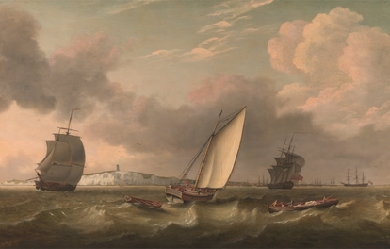
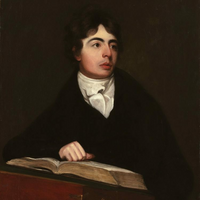
Robert Southey (August 12, 1774 in Bristol– March 21, 1843 in London) was an English poet of the Romantic school, one of the so-called “Lake Poets”, and Poet Laureate for 30 years from 1813 to his death in 1843. Although his fame has long been eclipsed by that of his contemporaries and friends William Wordsworth and Samuel Taylor Coleridge, Southey’s verse still enjoys some popularity.

I will get better, Making love, Disagreements, talks later into the night , Hugs, promises made but not kept, fun nights out. Missing intimacy, Struggling to find the problem, pain, bargaining, tears , moving away , talks, tears, overwhelming grief , missing you, seeing you, hugs, tears a few kisses, avoiding , hardly talking, waiting, hoping, despair, realization, More tears, grieving, hopelessness, loneliness ,trying so hard to forget. One last kiss, me dying inside

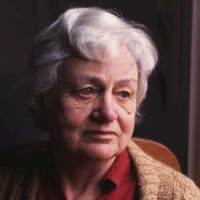
Judith Arundell Wright (31 May 1915 – 25 June 2000) was an Australian poet, environmentalist and campaigner for Aboriginal land rights. She was born in Armidale, New South Wales. The eldest child of Phillip Wright and his first wife, Ethel, she spent most of her formative years in Brisbane and Sydney. Wright was of Cornish ancestry. After the early death of her mother, she lived with her aunt and then boarded at New England Girls’ School after her father’s remarriage in 1929. After graduating, Wright studied Philosophy, English, Psychology and History at the University of Sydney. At the beginning of World War II, she returned to her father’s station to help during the shortage of labour caused by the war.

my life is not completely bad I just love whrighting these sad and very deep poems for some reason but some are very true plus people think i am a strange girl btw you know I had a picture that I drew well it won't let me change it back sadly. I am just looking for a good place To truly express my self in poetry I feel that I can just let all my pain and suffering out.


Thomas Bailey Aldrich (November 11, 1836– March 19, 1907) was an American literary figure notable for his long editorship of The Atlantic, during which he published works by Charles Chesnutt and for his poetry, including “The Unguarded Gates.” Biography Early life and education Thomas Bailey Aldrich was born in Portsmouth, New Hampshire on November 11, 1836. When Aldrich was a child, his father moved to New Orleans. After 10 years, Aldrich was sent back to Portsmouth to prepare for college. This period of his life is partly described in his semi-autobiographical novel The Story of a Bad Boy (1870), in which “Tom Bailey” is the juvenile hero. Career Aldrich abandoned college preparations after his father’s death in 1849. At age 16, he entered his uncle’s business office in New York in 1852 and became a constant contributor to the newspapers and magazines. Aldrich befriended other young poets, artists and wits of the metropolitan bohemia of the early 1860s, including Edmund Clarence Stedman, Richard Henry Stoddard, Fitz Hugh Ludlow, Bayard Taylor and Walt Whitman. From 1856 to 1859, Aldrich was on the staff of the Home Journal, then edited by Nathaniel Parker Willis. During the Civil War, he was the editor of the New York Illustrated News. In 1865 Aldrich returned to New England, where he was editor in Boston for ten years for Ticknor and Fields—then at the height of their prestige—of the eclectic weekly Every Saturday. It was discontinued in 1875. From 1881 to 1890, Aldrich was editor of the important Atlantic Monthly. As editor, he created tension with his publisher Henry Houghton by refusing to publish commissioned articles by his friends, including Woodrow Wilson and Marion Crawford. When Houghton chastised Aldrich for turning down submissions from his friend Daniel Coit Gilman, Aldrich threatened to resign and finally did so in June 1890. Meanwhile Aldrich continued his private writing, both in prose and verse. His talent was many-sided. He was well known for his form in poetry. His successive volumes of verse, chiefly The Ballad of Babie Bell (1856), Pampinea, and Other Poems (1861), Cloth of Gold (1874), Flower and Thorn (1876), Friar Jerome’s Beautiful Book (1881), Mercedes and Later Lyrics (1883), Wyndham Towers (1889), and the collected editions of 1865, 1882, 1897 and 1900, showed him to be a poet of lyrical skill and light touch. Critics believed him to show the influence of Robert Herrick. Aldrich’s longer narrative or dramatic poems were not as successful. Notable work includes such lyrics as “Hesperides,” “When the Sultan Goes to Ispahan,” “Before the Rain,” “Nameless Pain,” “The Tragedy,” “Seadrift,” “Tiger Lilies,” “The One White Rose,” “Palabras Cariñosas,” “Destiny,” or the eight-line poem “Identity.” Beginning with the collection of stories entitled Marjorie Daw and Other People (1873), Aldrich wrote works of realism and quiet humor. His novels Prudence Palfrey (1874), The Queen of Sheba (1877), and The Stillwater Tragedy (1880) had more dramatic action. The first portrayed Portsmouth with the affectionate touch shown in the shorter humorous tale, A Rivermouth Romance (1877). In An Old Town by the Sea (1893), Aldrich commemorated his birthplace again. Travel and description are the theme of From Ponkapog to Pesth (1883). Marriage and later life Aldrich married Lillian Woodman and had two sons. Mark Twain apparently detested Aldrich’s wife, writing in 1893: “Lord, I loathe that woman so! She is an idiot—an absolute idiot—and does not know it... and her husband, the sincerest man that walks... tied for life to this vacant hellion, this clothes-rack, this twaddling, blethering, driveling blatherskite!” The Aldriches were close friends of Henry L. Pierce, former mayor of Boston and chocolate magnate. At his death in 1896, he willed them his estate at Canton, Massachusetts. In 1901, Aldrich’s son Charles, married the year before, was diagnosed with tuberculosis. Aldrich built two houses, one for his son and one for him and his family, in Saranac Lake, New York, then the leading treatment center for the disease. On March 6, 1904, Charles Aldrich died of tuberculosis, age thirty-four. The family left Saranac Lake and never returned. Aldrich died in Boston on March 19, 1907. His last words were recorded as, “In spite of it all, I am going to sleep; put out the lights.” His Life was written by Ferris Greenslet (1908). In 1920, Aldrich’s widow Lillian Woodman Aldrich wrote her memoirs under the title Crowding Memories. References Wikipedia—https://en.wikipedia.org/wiki/Thomas_Bailey_Aldrich
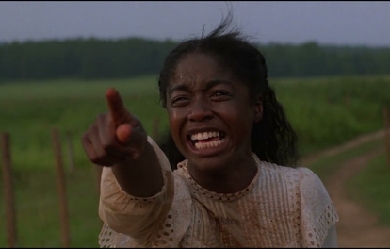
Alice Walker is a poetese, essayist, and novelist born on February 9, 1944, in Eatonton, Georgia, the eighth and last child of sharecroppers Willie Lee and Minnie Lou Grant Walker. She attended Spelman College and received a B.A. from Sarah Lawrence College. In 1982, she wrote The Color Purple, which won the Pulitzer Prize.
#Americans #Blacks #PulitzerPrize #Women #XIXCentury #XXCentury
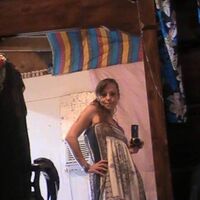
About Me: Please leave a comment on my poetry and stories thank you Blessed Be 37, Mother of 2 gorgeous daughters 13 n 10, Found my high school sweetheart after 15 years and now we celebrated our 1yr anniversary aug-27-13. Ill never let him go no matter what. I Love writing poetry and short stories. Its my way to relieve my over stuffed mind that is always stuck on play. I write because that is the only way I know how to express myself. I'm horrible talking face to face because of my Social Anxiety. I hate it but i have friends and family who love me and help me thru it. My Hobbies: Horseback riding,biking,roller skating, coloring,taking walks,writing poetry and more My Achievements: People in our life are not strangers just friends we haven't met yet :-) Please add me toYOUR favorites and a friend.. as i will be happy to do the same :-) Blessed Be Published In Pocono Record: Eastern Pocono Community News *Your Page: *So High And Free -January-26-2001 *The Day YouBEGIN To Live..June-8-2001 Awards:-------------------------------------------------------- *Poetry.com: & the International Library of Poetry: Awarded Prestigious Editor's Choice Award, >Outstanding Achievement in Poetry: *VIP# P6125073- Rain- 2004 *VIP# P612507- You're- June 2005 *VIP#P1854496- The Day You Begin To Live -December 2000 Awaking To Sunshine (book- Natures of Echoes) *Award of MeritCERTIFICATE : from John Campbell: Editor & Publisher, Eddie-Lou Cole : Poetry Editor, Rank Honorable Mention In Appreciation December-15-1991 World of Poetry: *Winter Is

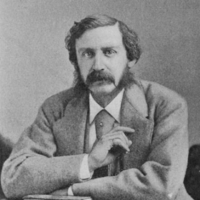
Francis Brett Hart, known as Bret Harte (August 25, 1836 – May 5, 1902), was an American short story writer and poet, best remembered for his short fiction featuring miners, gamblers, and other romantic figures of the California Gold Rush. In a career spanning more than four decades, he wrote poetry, plays, lectures, book reviews, editorials, and magazine sketches in addition to fiction. As he moved from California to the eastern U.S. to Europe, he incorporated new subjects and characters into his stories, but his Gold Rush tales have been most often reprinted, adapted, and admired. Biography Early life Harte was born in the capital city of Albany, New York. He was named Francis Brett Hart after his great-grandfather, Francis Brett. When he was young, his father, Henry, changed the spelling of the family name from Hart to Harte. Henry’s father was Bernard Hart, an Orthodox Jewish immigrant who flourished as a merchant, becoming one of the founders of the New York Stock Exchange. Later, Francis preferred to be known by his middle name, but he spelled it with only one “t”, becoming Bret Harte.An avid reader as a boy, Harte published his first work at age 11, a satirical poem titled “Autumn Musings”, now lost. Rather than attracting praise, the poem garnered ridicule from his family. As an adult, he recalled to a friend, “Such a shock was their ridicule to me that I wonder that I ever wrote another line of verse”. His formal schooling ended when he was 13, in 1849. Career in California Harte moved to California in 1853, later working there in a number of capacities, including miner, teacher, messenger, and journalist. He spent part of his life in the northern California coastal town of Union (now Arcata), a settlement on Humboldt Bay that was established as a provisioning center for mining camps in the interior.The Wells Fargo Messenger of July 1916, relates that, after an unsuccessful attempt to make a living in the gold camps, Harte signed on as a messenger with Wells Fargo & Co. Express. He guarded treasure boxes on stagecoaches for a few months, then gave it up to become the schoolmaster at a school near the town of Sonora, in the Sierra foothills. He created his character Yuba Bill from his memory of an old stagecoach driver. Among Harte’s first literary efforts, a poem was published in The Golden Era in 1857, and, in October of that same year, his first prose piece on “A Trip Up the Coast”. He was hired as editor of The Golden Era in the spring of 1860, which he attempted to make into a more literary publication. Mark Twain later recalled that, as an editor, Harte struck “a new and fresh and spirited note” which “rose above that orchestra’s mumbling confusion and was recognizable as music”. Among his writings were parodies and satires of other writers, including The Stolen Cigar-Case featuring ace detective “Hemlock Jones”, which Ellery Queen praised as “probably the best parody of Sherlock Holmes ever written”.The 1860 massacre of between 80 and 200 Wiyot Indians at the village of Tuluwat (near Eureka in Humboldt County, California) was reported by Harte in San Francisco and New York. While serving as assistant editor of the Northern Californian, Harte was left in charge of the paper during the temporary absence of his boss, Stephen G. Whipple. Harte published a detailed account condemning the slayings, writing: “a more shocking and revolting spectacle never was exhibited to the eyes of a Christian and civilized people. Old women wrinkled and decrepit lay weltering in blood, their brains dashed out and dabbled with their long grey hair. Infants scarcely a span long, with their faces cloven with hatchets and their bodies ghastly with wounds.”After he published the editorial, Harte’s life was threatened, and he was forced to flee one month later. Harte quit his job and moved to San Francisco, where an anonymous letter published in a city paper is attributed to him, describing widespread community approval of the massacre. In addition, no one was ever brought to trial, despite the evidence of a planned attack and references to specific individuals, including a rancher named Larabee and other members of the unofficial militia called the Humboldt Volunteers. Harte married Anna Griswold on August 11, 1862 in San Rafael, California. From the start, the marriage was rocky. Some suggested that she was handicapped by extreme jealousy, while early Harte biographer Henry C. Merwin privately concluded that she was “almost impossible to live with”.The well-known minister Thomas Starr King recommended Harte to James Thomas Fields, editor of the prestigious magazine, The Atlantic Monthly, which published Harte’s first short story in October 1863. In 1864, Harte joined with Charles Henry Webb in starting a new literary journal called The Californian. He became friends with and mentored poet Ina Coolbrith.In 1865 Harte was asked by bookseller Anton Roman to edit a book of California poetry; it was to be a showcase of the finest California writers. When the book, called Outcroppings, was published, it contained only nineteen poets, many of them Harte’s friends (including Ina Coolbrith and Charles Warren Stoddard). The book caused some controversy, as Harte used the preface as a vehicle to attack California’s literature, blaming the state’s “monotonous climate” for its bad poetry. While the book was widely praised in the East, many newspapers and poets in the West took umbrage at his remarks.In 1868, Harte became editor of The Overland Monthly, another new literary magazine, published by Roman Anton with the intention of highlighting local writings. The Overland Monthly was more in tune with the pioneering spirit of excitement in California. Harte’s short story “The Luck of Roaring Camp” appeared in the magazine’s second issue, propelling him to nationwide fame.When word of Charles Dickens’s death reached Harte in July 1870, he immediately sent a dispatch across the bay to San Francisco to hold back the forthcoming issue of the Overland Monthly for 24 hours so that he could compose the poetic tribute, “Dickens in Camp”. Harte’s fame increased with the publication of his satirical poem “Plain Language from Truthful James” in the September 1870 issue of the Overland Monthly. The poem became better known by its alternate title, “The Heathen Chinee”, after being republished in a Boston newspaper in 1871. It was also quickly republished in a number of other newspapers and journals, including the New York Evening Post, the New York Tribune, the Boston Evening Transcript, the Providence Journal, the Hartford Courant, Prairie Farmer, and the Saturday Evening Post. Harte was chagrined, however, to find that the popularity of the poem, which he had written to criticize the prevalence of anti-Chinese sentiment among the white population of California, was largely the result of its being taken literally by the very people he had lampooned, who completely misconstrued the ironic intent of Harte’s words. Leaving the West He was determined to pursue his literary career and traveled back East with his family in 1871 to New York and eventually to Boston where he contracted with the publisher of The Atlantic Monthly for an annual salary of $10,000, “an unprecedented sum at the time”. His popularity waned, however, and by the end of 1872 he was without a publishing contract and increasingly desperate. He spent the next few years struggling to publish new work or republish old, and delivering lectures about the gold rush. The winter of 1877–1878 was particularly hard for Harte and his family. He later recalled it as a “hand-to-mouth life” and wrote to his wife Anna, “I don’t know—looking back—what ever kept me from going down, in every way, during that awful December and January”.After months of soliciting for such a role, Harte accepted the position of United States Consul in the town of Krefeld, Germany in May 1878. Mark Twain had been a friend and supporter of Harte’s until a substantial falling out, and he had previously tried to block any appointment for Harte. In a letter to William Dean Howells, he complained that Harte would be an embarrassment to the United States because, as he wrote, “Harte is a liar, a thief, a swindler, a snob, a sot, a sponge, a coward, a Jeremy Diddler, he is brim full of treachery... To send this nasty creature to puke upon the American name in a foreign land is too much”. Eventually, Harte was given a similar role in Glasgow in 1880. In 1885, he settled in London. Throughout his time in Europe, he regularly wrote to his wife and children and sent monthly financial contributions. He declined, however, to invite them to join him, nor did he return to the United States to visit them. His excuses were usually related to money. During the 24 years that he spent in Europe, he never abandoned writing and maintained a prodigious output of stories that retained the freshness of his earlier work. He died in Camberley, England in 1902 of throat cancer, and is buried at Frimley. His wife Anna (née Griswold) Harte died on August 2, 1920. The couple lived together only 16 of the 40 years that they were married. Reception In Round the World, Andrew Carnegie praised Harte as uniquely American:"A whispering pine of the Sierras transplanted to Fifth Avenue! How could it grow? Although it shows some faint signs of life, how sickly are the leaves! As for fruit, there is none. America had in Bret Harte its most distinctively national poet.” Mark Twain, however, characterized him and his writing as insincere. Writing in his autobiography four years after Harte’s death, Twain criticized the miners’ dialect used by Harte, claiming that it never existed outside of his imagination. Additionally, Twain accused Harte of “borrowing” money from his friends with no intention of repaying it and of financially abandoning his wife and children. He referred repeatedly to Harte as “The Immortal Bilk”. Works * Condensed Novels and Other Papers (1867) * Outcroppings (1865), editor * The Luck of Roaring Camp, and Other Sketches (1870) * Poems (1871) * The Tales of the Argonauts (1875) * Flip and Found at Blazing Star (1882) * Gabriel Conroy (1876) * Two Men of Sandy Bar (1876) * Drift from Two Shores (1878) * An Heiress of Red Dog, and Other Tales (1879) * A Millionaire of Rough-And-Ready and Devil’s Ford (1887) * The Crusade of the Excelsior (1887) * The Argonauts of North Liberty (1888) * A First Family of Tasajara (1892) * Colonel Starbottle’s Client, and some other people (1892) * A Protégée of Jack Hamlin’s; and Other Stories (1894) * Barker’s Luck etc. (1896) * Under the Red-Woods (1901) * Her Letter, His Answer, and Her Last Letter (1905) Dramatic and musical adaptations * Several film versions of “The Outcasts of Poker Flat” have been made, including one in 1937 with Preston Foster and another in 1952 with Dale Robertson. * Tennessee’s Partner (1955) with John Payne and Ronald Reagan was based on the story of the same name. * Paddy Chayefsky’s treatment of the film version of Paint Your Wagon seems to borrow from “Tennessee’s Partner”: two close friends – one named “Pardner” – share the same woman. The spaghetti western Four of the Apocalypse is based on “The Outcasts of Poker Flat” and “The Luck of Roaring Camp”. * The Soviet movie Armed and Dangerous (Russian: Вооружён и очень опасен, 1977) is based on Gabriel Conroy and another of Harte’s stories. * Operas based on “The Outcasts of Poker Flat” include those by Samuel Adler and by Stanford Beckler. * The actor Craig Hill was cast as Harte in the 1956 episode, “Year of Destiny”, on the syndicated anthology series Death Valley Days, hosted by Stanley Andrews. The “year of destiny” is 1857, when Harte arrived in California. First a stagecoach guard, then a newspaper editor and schoolteacher, he slowly finds fame as a western writer. Legacy * Bret Harte Memorial in San Francisco * Bret Harte, California, a census-designated place (CDP) in Stanislaus County * Twain Harte, a CDP in Tuolumne County, California, named after both Mark Twain and Bret Harte. * The Mark Twain Bret Harte Historic Trail (Marker Number 431 erected in 1948 by the California Centennial Commission), also named after both writers. * Bret Harte Village in the Gold River community of Sacramento County. Sacramento, California * Bret Harte Court, a street in Sacramento, California * Bret Harte Library, a public library in Long Beach, California * Bret Harte Hall, Roaring Camp Railroads Felton, California * Bret Harte High School in Angels Camp, California is named after him. * Bret Harte Lane in Humboldt Hill, California. * Bret Harte Elementary School in Chicago, Illinois * Bret Harte Preparatory Middle School (Vermont Vista) South Los Angeles, California * Bret Harte Middle School in San Jose, California * Bret Harte Middle School in Oakland, California * Bret Harte Middle School in Hayward, California * Bret Harte High School in Altaville, California is named after him and celebrated its 100th anniversary in 2005 * Bret Harte Elementary in Corcoran, California * Bret Harte Elementary in San Francisco, California * Bret Harte Elementary in Burbank, California * Bret Harte Elementary in Cherry Hill, New Jersey * Bret Harte Elementary in Sacramento, California * Bret Harte Elementary School in Modesto, California * A community called The Shores of Poker Flat, California claims to have been the location of Poker Flat, although it is usually accepted that the story takes place further north. * Bret Harte Road in Frimley (the town in which Harte was buried) is named after him. * Bret Harte Place in San Francisco, California is named after him. * Bret Harte Lane, Bret Harte Road, and Harte Ave in San Rafael, California. * Bret Harte Road in Berkeley, California. * Bret Harte Road in Redwood City, California. * Bret Harte Road in Angels Camp, California. * Bret Harte Road and Bret Harte Drive in Murphys, California. * Bret Harte Avenue in Reno, Nevada. * Bret Harte House, at Humboldt State University in Arcata, California. * Bret Harte Alley in Arcata, California. * Bret Harte Park in Danville, California. * In 1987 Harte appeared on a $5 U.S. Postage stamp, as part of the “Great Americans series” of issues. References Wikipedia—https://en.wikipedia.org/wiki/Bret_Harte


Leonard Norman Cohen (21 September 1934 – 10 November 2016) was a Canadian Juno Award-winning singer-songwriter, musician, poet, and novelist. His work often explores religion, isolation, sexuality, and personal relationships. Cohen has been inducted into the American Rock and Roll Hall of Fame and both the Canadian Music Hall of Fame and the Canadian Songwriters Hall of Fame. He is also a Companion of the Order of Canada, the nation's highest civilian honour. In 2011, Cohen received a Prince of Asturias Award for literature. Cohen's writing process, as he told an interviewer in 1998, is “like a bear stumbling into a beehive or a honey cache: I'm stumbling right into it and getting stuck, and it's delicious and it's horrible and I'm in it and it's not very graceful and it's very awkward and it's very painful and yet there's something inevitable about it”.
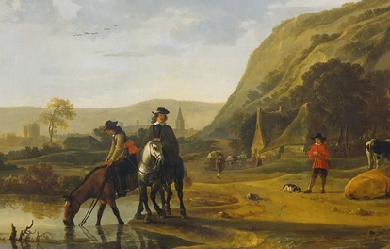
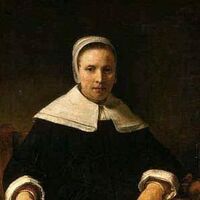
Anne Bradstreet was born in Northampton, England, in the year 1612, daughter of Thomas Dudley and Dorothy Yorke; Dudley, who had been a leader of volunteer soldiers in the English Reformation and Elizabethan Settlement, was then a steward to the Earl of Lincoln; Dorothy was a gentlewoman of noble heritage and she was also well educated. At the age of 16, Anne was married to Simon Bradstreet, a 25 year old assistant in the Massachusetts Bay Company and the son of a Puritan minister, who had been in the care of the Dudleys since the death of his father. Anne and her family emigrated to America in 1630 on the Arabella, one of the first ships to bring Puritans to New England in hopes of setting up plantation colonies. The journey was difficult; many perished during the three month journey, unable to cope with the harsh climate and poor living conditions, as sea squalls rocked the vessel, and scurvy brought on by malnutrition claimed their lives. Anne, who was a well educated girl, tutored in history, several languages and literature, was ill prepared for such rigorous travel, and would find the journey very difficult. Their trials and tribulations did not end upon their arrival, though, and many of those who had survived the journey, either died shortly thereafter, or elected to return to England, deciding they had suffered through enough. Thomas Dudley and his friend John Winthrop made up the Boston settlement's government; Winthrop was Governor, Dudley Deputy-Governor and Bradstreet Chief-Administrator. The colonists' fight for survival had become daily routine, and the climate, lack of food, and primitive living arrangements made it very difficult for Anne to adapt. She turned inwards and let her faith and imagination guide her through the most difficult moments; images of better days back in England, and the belief that God had not abandoned them helped her survive the hardships of the colony. Having previously been afflicted with smallpox, Anne would once again fall prey to illness as paralysis took over her joints; surprisingly, she did not let her predicament dim her passion for living, and she and her husband managed to make a home for themselves, and raise a family. Despite her poor health, she had eight children, and loved them dearly. Simon eventually came to prosper in the new land, and for a while it seemed things would not be so bad. Tragedy struck once more, when one night the Bradstreet home was engulfed in flames; a devastating fire which left the family homeless and devoid of personal belongings. It did not take too long for them to get back on their feet, thanks to their hard work, and to Simon's social standing in the community. While Anne and her husband were very much in love, Simon's political duties kept him traveling to various colonies on diplomatic errands, so Anne would spend her lonely days and nights reading from her father's vast collection of books, and educating her children. The reading would not only keep her from being lonely, but she also learned a great deal about religion, science, history, the arts, and medicine; most of all, reading helped her cope with life in New England. Anne Bradstreet was especially fond of poetry, which she had begun to write herself; her works were kept private though, as it was frowned upon for women to pursue intellectual enlightenment, let alone create and air their views and opinions. She wrote for herself, her family, and close circle of educated friends, and did not intend on publication. One of her closest friends, Anne Hutchinson, who was also a religious and educated woman had made the mistake of airing her views publicly, and was banished from her community. However, Anne's work would not remained unnoticed... Her brother-in-law, John Woodbridge, had secretly copied Anne's work, and would later bring it to England to have it published, albeit without her permission. Woodbridge even admitted to it in the preface of her first collection, "The Tenth Muse Lately Sprung Up in America, By a Gentlewoman of Those Parts", which was published in 1650. The book did fairly well in England, and was to be the last of her poetry to be published during her lifetime. All her other poems were published posthumously. Anne Bradstreet's poetry was mostly based on her life experience, and her love for her husband and family. One of the most interesting aspects of her work is the context in which she wrote; an atmosphere where the search for knowledge was frowned upon as being against God's will, and where women were relegated to traditional roles. Yet, we cAnneot help but feel the love she had for both God, and her husband, and her intense devotion to both, and to her family, despite the fact that she clearly valued knowledge and intellect, and was a free thinker, who could even be considered an early feminist. By Anne Bradstreet's health was slowly failing; she had been through many ailments, and was now afflicted with tuberculosis. Shortly after contracting the disease, she lost her daughter Dorothy to illness as well, but her will was strong, and perhaps, as a reflection of her own acceptance of death, she found solace in thinking of her daughter in a better place. Soon thereafter, Anne Bradstreet's long and difficult battle with illness would be at an end, and she passed away on September 16, 1672, in Andover, Massachusetts, at the age 60.
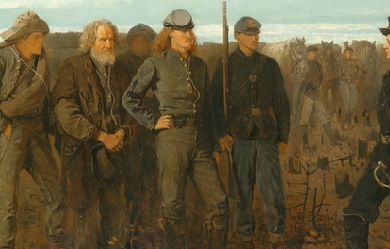
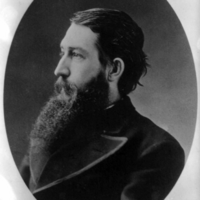
Sidney Clopton Lanier (February 3, 1842– September 7, 1881) was an American musician, poet and author. He served in the Confederate army, worked on a blockade running ship for which he was imprisoned (resulting in his catching tuberculosis), taught, worked at a hotel where he gave musical performances, was a church organist, and worked as a lawyer. As a poet he used dialects. He became a flautist and sold poems to publications. He eventually became a university professor and is known for his adaptation of musical meter to poetry. Many schools, other structures and two lakes are named for him. Biography Sidney Clopton Lanier was born February 3, 1842, in Macon, Georgia, to parents Robert Sampson Lanier and Mary Jane Anderson; he was mostly of English ancestry. His distant French Huguenot ancestors immigrated to England in the 16th century, fleeing religious persecution. He began playing the flute at an early age, and his love of that musical instrument continued throughout his life. He attended Oglethorpe University, which at the time was near Milledgeville, Georgia, and he was a member of the Sigma Alpha Epsilon fraternity. He graduated first in his class shortly before the outbreak of the American Civil War. He fought in the American Civil War (1861–65), primarily in the tidewater region of Virginia, where he served in the Confederate signal corps. Later, he and his brother Clifford served as pilots aboard English blockade runners. On one of these voyages, his ship was boarded. Refusing to take the advice of the British officers on board to don one of their uniforms and pretend to be one of them, he was captured. He was incarcerated in a military prison at Point Lookout in Maryland, where he contracted tuberculosis (generally known as “consumption” at the time). He suffered greatly from this disease, then incurable and usually fatal, for the rest of his life. Shortly after the war, he taught school briefly, then moved to Montgomery, Alabama, where he worked as a desk clerk at The Exchange Hotel and also performed as a musician. He was the regular organist at The First Presbyterian Church in nearby Prattville. He wrote his only novel, Tiger Lilies (1867) while in Alabama. This novel was partly autobiographical, describing a stay in 1860 at his grandfather’s Montvale Springs resort hotel near Knoxville, Tennessee. In 1867, he moved to Prattville, at that time a small town just north of Montgomery, where he taught and served as principal of a school. He married Mary Day of Macon in 1867 and moved back to his hometown, where he began working in his father’s law office. After taking and passing the Georgia bar, Lanier practiced as a lawyer for several years. During this period he wrote a number of poems, using the “cracker” and “negro” dialects of his day, about poor white and black farmers in the Reconstruction South. He traveled extensively through southern and eastern portions of the United States in search of a cure for his tuberculosis. While on one such journey in Texas, he rediscovered his native and untutored talent for the flute and decided to travel to the northeast in hopes of finding employment as a musician in an orchestra. Unable to find work in New York City, Philadelphia, or Boston, he signed on to play flute for the Peabody Orchestra in Baltimore, Maryland, shortly after its organization. He taught himself musical notation and quickly rose to the position of first flautist. He was famous in his day for his performances of a personal composition for the flute called “Black Birds”, which mimics the song of that species. In an effort to support Mary and their three sons, he also wrote poetry for magazines. His most famous poems were “Corn” (1875), “The Symphony” (1875), “Centennial Meditation” (1876), “The Song of the Chattahoochee” (1877), “The Marshes of Glynn”, (1878) and “Sunrise” (1881). The latter two poems are generally considered his greatest works. They are part of an unfinished set of lyrical nature poems known as the “Hymns of the Marshes”, which describe the vast, open salt marshes of Glynn County on the coast of Georgia. (The longest bridge in Georgia is in Glynn County and is named for Lanier.) Later life Late in his life, he became a student, lecturer, and, finally, a faculty member at the Johns Hopkins University in Baltimore, specializing in the works of the English novelists, Shakespeare, the Elizabethan sonneteers, Chaucer, and the Old English poets. He published a series of lectures entitled The English Novel (published posthumously in 1883) and a book entitled The Science of English Verse (1880), in which he developed a novel theory exploring the connections between musical notation and meter in poetry. Lanier finally succumbed to complications caused by his tuberculosis on September 7, 1881, while convalescing with his family near Lynn, North Carolina. He was 39. Lanier is buried in Green Mount Cemetery in Baltimore. Writing style and literary theory With his theory connecting musical notation with poetic meter, and also being described as a deft metrical technical, in his own words ‘daring with his poem ’Special Pleading’ to give myself such freedom as I desired, in my own style’ and also by developing a unique style of poetry written in logaoedic dactyls, which was strongly influenced by the works of his beloved Anglo-Saxon poets. He wrote several of his greatest poems in this meter, including “Revenge of Hamish” (1878), “The Marshes of Glynn” and “Sunrise”. In Lanier’s hands, the logaoedic dactylic meter led to a free-form, almost prose-like style of poetry that was greatly admired by Henry Wadsworth Longfellow, Bayard Taylor, Charlotte Cushman, and other leading poets and critics of the day. A similar poetical meter was independently developed by Gerard Manley Hopkins at about the same time (there is no evidence that they knew each other or that either of them had read any of the other’s works). Lanier also published essays on other literary and musical topics and a notable series of four redactions of literary works about knightly combat and chivalry in modernized language more appealing to the boys of his day: The Boy’s Froissart (1878), a retelling of Jean Froissart’s Froissart’s Chronicles, which tell of adventure, battle and custom in medieval England, France and Spain The Boy’s King Arthur (1880), based on Sir Thomas Malory’s compilation of the legends of King Arthur and the Knights of the Round Table The Boy’s Mabinogion (1881), based on the early Welsh legends of King Arthur, as retold in the Red Book of Hergest. The Boy’s Percy (published posthumously in 1882), consisting of old ballads of war, adventure and love based on Bishop Thomas Percy’s Reliques of Ancient English Poetry. He also wrote two travelogues that were widely read at the time, entitled Florida: Its Scenery, Climate and History (1875) and Sketches of India (1876) (although he never visited India). Legacy and honors The Sidney Lanier Cottage in Macon, Georgia is listed on the National Register of Historic Places. The square, stone Monument to Poets of Georgia, located between 7th & 8th St. in Augusta, lists Lanier as one of Georgia’s four great poets, all of whom saw Confederate service. The southeastern side bears this inscription: "To Sidney Lanier 1842–1880. The catholic man who hath nightly won God out of knowledge and good out of infinite pain and sight out of Blindness and Purity out of stain." The other poets on the monument are James Ryder Randall, Fr. Abram Ryan, and Paul Hayne. Baltimore honored Lanier with a large and elaborate bronze and granite sculptural monument, created by Hans K. Schuler and located on the campus of the Johns Hopkins University. In addition to the monument at Johns Hopkins, Lanier was also later memorialized on the campus of Duke University in Durham, North Carolina. Upon the construction of the iconic Duke Chapel between 1930 and 1935 on the university’s West Campus, a statue of Lanier was included alongside two fellow prominent Southerners, Thomas Jefferson and Robert E. Lee. This statue, which appears to show a Lanier older than the 39 years he actually lived, is situated on the right side of the portico leading into the Chapel narthex. It is prominently featured on the cover of the 2010 autobiographical memoir Hannah’s Child, by Stanley Hauerwas, a Methodist theologian teaching at Duke Divinity School. Lanier’s poem “The Marshes of Glynn” is the inspiration for a cantata by the same name that was created by the modern English composer Andrew Downes to celebrate the Royal Opening of the Adrian Boult Hall in Birmingham, England, in 1986. Piers Anthony used Lanier, his life, and his poetry in his science-fiction novel Macroscope (1969). He quotes from “The Marshes of Glynn” and other references appear throughout the novel. Several entities have been named for Sidney Lanier: Inhabited places Lanier Heights Neighborhood, Washington, D.C. Lanier County, Georgia Indirectly, USS Lanier, which was named for the county. Bodies of water Lake Lanier, operated by the U.S. Army Corps of Engineers northeast of Atlanta, Georgia (The lake was created by the damming of the Chattahoochee River, a river that was the subject of one of Lanier’s poems.) Lake Lanier in Tryon, North Carolina Schools Sidney Lanier High School in Montgomery, Alabama Sidney Lanier School in Gainesville, Florida Lanier University short-lived university, first Baptist, then owned by the Ku Klux Klan, in Atlanta, Georgia The Sidney Lanier Building (previously Sidney Lanier Elementary School) on the campus of Glynn Academy, in Brunswick, Georgia Lanier Middle School in Buford, Georgia Lanier Elementary School in Gainesville, Georgia Sidney Lanier Elementary School in Tulsa, Oklahoma Sidney Lanier High School in Austin, Texas Sidney Lanier Expressive Arts Vanguard Elementary School in Dallas, Texas Lanier Middle School in Houston, Texas Lanier High School in San Antonio, Texas Lanier Middle School in Fairfax, Virginia Sidney Lanier Elementary School in Tampa, Florida Lanier Technical College in Oakwood, Georgia Other Sidney Lanier Cottage, the birthplace of Lanier, in Macon, Georgia Sidney Lanier Bridge over the South Brunswick River in Brunswick, Georgia Lanier’s Oak in Brunswick, Georgia The Lanier Library, Tryon, North Carolina. Lanier’s widow, Mary, donated two of his volumes of poetry to begin the collection when the library was established in 1890. Sidney Lanier Camp, Eliot, Maine. Sidney Lanier Boulevard in Duluth, GA References Wikipedia—https://en.wikipedia.org/wiki/Sidney_Lanier
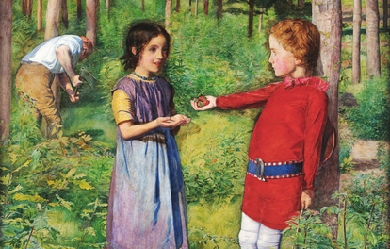
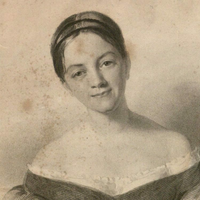
Letitia Elizabeth Landon (14 August 1802– 15 October 1838), English poet and novelist, better known by her initials L. E. L. Born in Chelsea, London to John Landon and Catherine Jane Bishop. A precocious child, Landon learned to read as a toddler. Her reputation, while high in the 19th century, fell during most of the 20th as literary fashions changed and Landon’s poetry was perceived as overly simple and sentimental. In recent years, however, scholars and critics have increasingly studied her work, beginning with Germaine Greer in the 1970s.

I have loved poetry for a number of years but in past 10 years have started to write my own but still a beginner in learning the craft.My favourate poets are Emily Dickinson,William Blake, Robert Frost, Katherine Mansfield and Christina Rossetti. I also like to read ( historical, biographical, Christian), listen to classical music but also like other types of music, watching films on DVD. I am 60 and have been happily married for 24 years to Christine and love to regular attend church, watch films and enjoy the countryside together. MY TESTIMONY I am a Christian and have been for over 30 years, so here's my story. First of all I was adopted at six months of age and have had a severe stammer all of my life although not particularly bad before starting school. I met my first wife Jean when I was in mid 20s, Jean was a Christian who attended the Salvation Army where I first heard the gospel and believed it but only in my head. After a series of decisions made for Jesus which proved to be flawed and false but I started to read the Bible but I was still not willing to accept the gospel offer of salvation. Jean and I got married in 1981 and after less than a year of marriage Jean died suddenly, on that evening of Jean's passing I prayed for God to forgive me of my sins and received Christ becoming a new creature in Christ. Some nine years later having met Christine we got married in 1990 and have been very happily married for 24 years. God has been faithful to us in many ways directing, leading and guiding us in all His ways. We always think on Jeremiah Ch. 29 v. 11-14 which God has used so often in our lives together in giving us a future and a hope in Him for God knows the plans He has for us all. God has been helpful to me so often to fight through my stammer and been able to accept my situation helping me and reminding me so often His love overcomes all things. My favourate text is Hebrews Ch. 13 v.6. 'The Lord is my helper; I will not fear; what can man do to me?’ In august, 2012 I had been made redundant but have great peace in my heart the the Lord Jesus is with me and surrounding me in His love and wisdom for the future and great assurance of His will for me.
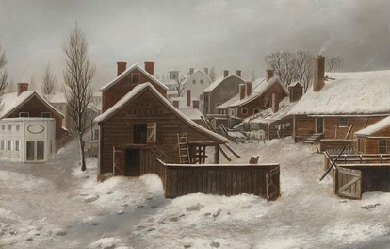
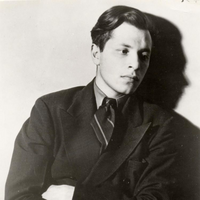
Delmore Schwartz (December 8, 1913– July 11, 1966) was an American poet and short story writer. Biography Schwartz was born in 1913 in Brooklyn, New York, where he also grew up. His parents, Harry and Rose, both Romanian Jews, separated when Schwartz was nine, and their divorce had a profound effect on him. In 1930, Schwartz’s father suddenly died at the age of 49. Though Harry had accumulated a good deal of wealth from his dealings in the real estate business, Delmore only inherited a small amount of that money as the result of the shady dealings of the executor of Harry’s estate. According to Schwartz’s biographer, James Atlas, "Delmore continued to hope that he would eventually receive his legacy [even] as late as 1946.” Schwartz spent time at Columbia University and the University of Wisconsin before finally graduating from New York University in 1935. He then did some graduate work in philosophy at Harvard University, where he studied with the philosopher Alfred North Whitehead, but left and returned to New York without receiving a degree. Soon thereafter, he made his parents’ disastrous marriage the subject of his most famous short story, “In Dreams Begin Responsibilities”, which was published in 1937 in the first issue of Partisan Review. This story and other short stories and poems became his first book, also entitled In Dreams Begin Responsibilities, published in 1938 when Schwartz was only 25 years old. The book was well received, and made him a well-known figure in New York intellectual circles. His work received praise from some of the most respected people in literature, including T. S. Eliot, William Carlos Williams, and Ezra Pound, and Schwartz was considered one of the most gifted and promising young writers of his generation. According to James Atlas, Allen Tate responded to the book by stating that "[Schwartz’s] poetic style marked 'the first real innovation we’ve had since Eliot and Pound.'” In 1937, he also married Gertrude Buckman, a book reviewer for Partisan Review, whom he divorced after six years. For the next couple of decades, he continued to publish stories, poems, plays, and essays, and edited the Partisan Review from 1943 to 1955, as well as The New Republic. Schwartz was deeply upset when his epic poem, Genesis, which he published in 1943 and hoped would stand alongside other Modernist epics like The Waste Land and The Cantos as a masterpiece, received a negative critical response. Later, in 1948, he married the much younger novelist, Elizabeth Pollet. This relationship also ended in divorce. In 1959, he became the youngest-ever recipient of the Bollingen Prize, awarded for a collection of poetry he published that year, Summer Knowledge: New and Selected Poems. His poetry differed from his stories in that it was less autobiographical and more philosophical. His verse also became increasingly abstract in his later years. He taught creative writing at six universities, including Syracuse, Princeton, and Kenyon College. In addition to being known as a gifted writer, Schwartz was considered a great conversationalist and spent much time entertaining friends at the White Horse Tavern in New York City. Much of Schwartz’s work is notable for its philosophical and deeply meditative nature, and the literary critic, R.W. Flint, wrote that Schwartz’s stories were “the definitive portrait of the Jewish middle class in New York during the Depression.” In particular, Schwartz emphasized the large divide that existed between his generation (which came of age during the Depression) and his parents’ generation (who had often come to the United States as first-generation immigrants and whose idealistic view of America differed greatly from his own). In another take on Schwartz’s fiction, Morris Dickstein wrote that “Schwartz’s best stories are either poker-faced satirical takes on the bohemians and outright failures of his generation, as in 'The World Is a Wedding’ and 'New Year’s Eve,' or chronicles of the distressed lives of his parents’ generation, for whom the promise of American life has not panned out.” Schwartz was unable to repeat or build on his early successes later in life as a result of alcoholism and mental illness, and his last years were spent in reclusion at the Columbia Hotel in New York City. In fact, Schwartz was so isolated from the rest of the world that when he died on July 11, 1966, at age 52, of a heart attack, two days passed before his body was identified at the morgue. Schwartz was interred at Cedar Park Cemetery, in Emerson, New Jersey. A selection of his short stories was published posthumously in 1978 under the title In Dreams Begin Responsibilities and Other Stories and was edited by James Atlas who had written a biography of Schwartz, Delmore Schwartz: The Life of An American Poet, two years earlier. Later, another collection of Schwartz’s work, Screeno: Stories & Poems, was published in 2004. This collection contained fewer stories than In Dreams Begin Responsibilities and Other Stories but it also included a selection of some of Schwartz’s best-known poems like “The Heavy Bear Who Goes With Me” and “In The Naked Bed, In Plato’s Cave”. Screeno also featured an introduction by the fiction writer and essayist, Cynthia Ozick. Tributes to Schwartz One of the earliest well-known tributes to Schwartz came from Schwartz’s friend, fellow poet Robert Lowell, who published the poem “To Delmore Schwartz” in 1959 (while Schwartz was still alive) in the book Life Studies. In it Lowell reminisces about the time that the two poets lived together in Cambridge, Massachusetts in 1946, writing that they were "underseas fellows, nobly mad,/ we talked away our friends.” One year following Schwartz’s death, in 1967, his former student at Syracuse University, the rock musician Lou Reed, dedicated his song “European Son” to Schwartz (although the lyrics themselves made no direct reference to Schwartz). Then, in 1968, Schwartz’s friend and peer, fellow poet John Berryman, dedicated his book His Toy, His Dream, His Rest “to the sacred memory of Delmore Schwartz,” including 12 elegiac poems about Schwartz in the book. In "Dream Song #149," Berryman wrote of Schwartz, In the brightness of his promise, unstained, I saw him thro’ the mist of the actual blazing with insight, warm with gossip thro’ all our Harvard years when both of us were just becoming known I got him out of a police-station once, in Washington, the world is tref and grief too astray for tears. The most ambitious literary tribute to Schwartz came in 1975 when Saul Bellow, a one-time protégé of Schwartz’s, published his Pulitzer Prize-winning novel Humboldt’s Gift which was based on his relationship with Schwartz. Although the character of Von Humboldt Fleischer is Bellow’s portrait of Schwartz during Schwartz’s declining years, the book is actually a testament to Schwartz’s lasting artistic influence on Bellow. Although he is a genius, the Fleischer/Schwartz character struggles financially and has trouble finding a secure university teaching position. He becomes increasingly paranoid and jealous of the success of the main character, Charlie Citrine (who is based upon Bellow himself), becoming isolated and descending into alcoholism and madness. Lou Reed’s 1982 album The Blue Mask included his second Schwartz homage with the song “My House”. The song is a more direct tribute to Schwartz than the above-mentioned “European Son” in that the lyrics of “My House” are about Reed’s relationship with Schwartz. In the song, Reed writes that Schwartz “was the first great man that I ever met”. Much later, in the June 2012 issue of Poetry magazine, Lou Reed published a short prose tribute to Schwartz entitled “O Delmore How I Miss You.” In the piece, Reed quotes and references a number of Schwartz’s short stories and poems including “In Dreams Begin Responsibilities,” “The World is a Wedding,” and “The Heavy Bear Who Goes With Me.” “O Delmore How I Miss You” was re-published as the preface to the New Directions 2012 reissue of Schwartz’s posthumously published story collection In Dreams Begin Responsibilities and Other Stories. In John A. McDermott’s poetry collection, The Idea of God in Tennessee, he includes a poem written for and referencing Schwartz, titled The Poet’s Body, Unclaimed in the Manhattan Morgue. The poem makes mention of Schwartz’s writing, daily habits, and death. Cultural references Scott Spencer uses the final six lines of Schwartz’s poem “I Am a Book I Neither Wrote nor Read” as an epigraph for his National Book Award nominated novel, Endless Love. The words “endless love” are the final two words of that poem. In the film Star Trek Generations, the villain Tolian Soran quotes from Schwartz’s poem, “Calmly We Walk Through This April’s Day”, telling Captain Jean-Luc Picard, “They say time is the fire in which we burn.” Playwright Philip Ridley uses the same line as one of the epigraphs for his 2012 play Shivered. The German symphonic metal band Agathodaimon uses the line “Time is the fire” as the title to one of the songs on the album Phoenix. Grant Morrison named a story in his DC Comics miniseries Multiversity, Pax Americana, after the same line as well as quoting it on the cover. In 1996, Donald Margulies wrote the play Collected Stories, in which the aging writer and teacher Ruth Steiner (a fictional character) reveals that she once had a great affair in her youth with Delmore Schwartz in Greenwich Village (during the period of time when Schwartz was in declining health from alcoholism and mental illness) to her young student, Lisa. Lisa then controversially uses the affair revelation as the basis for a successful novel. The play was produced twice off-Broadway and once on Broadway. Published works The Poets’ Pack (Rudge, New York, 1932), school anthology including four poems by Schwartz. In Dreams Begin Responsibilities. (New Directions, 1938), ISBN 978-0-8112-0680-8, a collection of short stories and poems. Shenandoah and Other Verse Plays (New Directions, 1941). Genesis: Book One (New Directions, 1943), book-length poem about the growth of a human being. The World Is a Wedding (New Directions, 1948), a collection of short stories. Vaudeville for a Princess and Other Poems (New Directions, 1950). Summer Knowledge: New and Selected Poems. (New Directions, 1959; reprinted 1967), ISBN 978-0-8112-0191-9. Successful Love and Other Stories (Corinth Books, 1961; Persea Books, 1985), ISBN 978-0-89255-094-4 Published posthumously Donald Dike, David Zucker (ed.) Selected Essays (1970; University of Chicago Press, 1985), ISBN 978-0-226-74214-4 In Dreams Begin Responsibilities and Other Stories (New Directions, 1978), a short story collection. Letters of Delmore Schwartz, ed. Robert Phillips (1984) ISBN 978-0-86538-048-6 The Ego Is Always at the Wheel: Bagatelles, ed. Robert Phillips (1986), a collection of humorously whimsical short essays Last and Lost Poems. ed. Robert Phillips (New Directions, 1989) ISBN 978-0-8112-1096-6 Screeno: Stories & Poems. New Directions. 2004. ISBN 978-0-8112-1573-2. References Wikipedia—https://en.wikipedia.org/wiki/Delmore_Schwartz

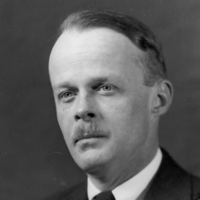
John Orley Allen Tate (November 19, 1899– February 9, 1979) was an American poet, essayist, social commentator, and Poet Laureate Consultant in Poetry to the Library of Congress from 1943 to 1944. Life Early years Tate was born near Winchester, Kentucky, to John Orley Tate, a businessman, and Eleanor Parke Custis Varnell. In 1916 and 1917 Tate studied the violin at the Cincinnati Conservatory of Music. Vanderbilt University, Kenyon College and The Fugitives He began attending Vanderbilt University in 1918, where he met fellow poet Robert Penn Warren. Warren and Tate were invited to join an informal literary group of young Southern poets under the leadership of John Crowe Ransom; the group were known as the Fugitives. Tate contributed to the group’s magazine The Fugitive. The aim of the group, according to the critic J. A. Bryant, was "to demonstrate that a group of southerners could produce important work in the medium [of poetry], devoid of sentimentality and carefully crafted," and they wrote in the formalist tradition that valued the skillful use of meter and rhyme. Tate also joined Ransom to teach at Kenyon College in Gambier, Ohio. Some of his notable students there included the poets Robert Lowell and Randall Jarrell. Lowell’s early poetry was particularly influenced by Tate’s formalist brand of Modernism. 1920s In 1924, Tate moved to New York City where he met poet Hart Crane, with whom he had been exchanging correspondence for some time. Over a four-year period, he worked freelance for The Nation, contributed to the Hound & Horn, Poetry magazine, and others. To make ends meet, he worked as a janitor. (Some years later, he would also contribute articles to the conservative National Review.) During a summer visit with the poet Robert Penn Warren in Kentucky, he began a relationship with writer Caroline Gordon. The two lived together in Greenwich Village, but moved to “Robber Rocks”, a house in Patterson, New York, with friends Slater Brown and his wife Sue, Hart Crane, and Malcolm Cowley. Tate married Gordon in New York in May 1925. Their daughter Nancy was born in September. In 1928, along with others New York City friends, he went to Europe. In London, he visited with T. S. Eliot, whose poetry and criticism he greatly admired, and he also visited Paris. In 1928, Tate published his first book of poetry, Mr. Pope and Other Poems, which contained his most famous poem, “Ode to the Confederate Dead” (not to be confused with “Ode to the Confederate Dead at Magnolia Cemetery” by the Civil War poet Henry Timrod). That same year, Tate also published a biography Stonewall Jackson: The Good Soldier. Just before leaving for Europe in 1928, Tate described himself to John Gould Fletcher as “an enforced atheist”. He later told Fletcher, “I am an atheist, but a religious one—which means that there is no organization for my religion.” He regarded secular attempts to develop a system of thought for the modern world as misguided. “Only God,” he insisted, “can give the affair a genuine purpose.” In his essay “The Fallacy of Humanism” (1929), he criticized the New Humanists for creating a value system without investing it with any identifiable source of authority. “Religion is the only technique for the validation of values,” he wrote. Although he was attracted to Roman Catholicism, he deferred converting. Louis D. Rubin, Jr. observes that Tate may have waited “because he realized that for him at this time it would be only a strategy, an intellectual act”. In 1929, Tate published a second biography Jefferson Davis: His Rise and Fall. 1930s After two years abroad, he returned to the United States, and in 1930 was back in Tennessee. Here he took up residence in an antebellum mansion with an 85-acre estate attached, that had been bought for him by one of his brothers, “who had made a lot of northern money out of coal.” He resumed his senior position with the Fugitives. Along with fellow Fugitives, Warren and Ransom, as well as nine other Southern writers, Tate also joined the conservative political group known as the Southern Agrarians. The group was made up of 12 members who published essays on their political philosophy in the book I’ll Take My Stand published in 1930. Tate contributed the essay, “Remarks on the Southern Religion” to I’ll Take My Stand. This book was followed in 1938 by Who Owns America?, the Southern Agrarians’ response to The New Deal. During this time, Tate also became the de facto associate editor of The American Review, which was published and edited by Seward Collins. Tate believed The American Review could popularize the work of the Southern Agrarians. He objected to Collins’s open support of Fascists Benito Mussolini and Adolf Hitler, and condemned fascism in an article in The New Republic in 1936. Much of Tate’s major volumes of poetry were published in the 1930s, and the scholar David Havird describes this publication history in poetry as follows: By 1937, when he published his first Selected Poems, Tate had written all of the shorter poems upon which his literary reputation came to rest. This collection—which brought together work from two recent volumes, Poems: 1928-1931 (1932) and the privately printed The Mediterranean and Other Poems (1936), as well as the early Mr. Pope—included “Mother and Son,” “Last Days of Alice,” “The Wolves,” “The Mediterranean,” “Aeneas at Washington,” “Sonnets at Christmas,” and the final version of “Ode to the Confederate Dead.” In 1938 Tate published his only novel, The Fathers, which drew upon knowledge of his mother’s ancestral home and family in Fairfax County, Virginia. 1940s Tate and Gordon were divorced in 1945 and remarried in 1946. Though devoted to one another for life, they could not get along and later divorced again. Tate was a poet-in-residence at Princeton University until 1942. He founded the Creative Writing program at Princeton, and mentored Richard Blackmur, John Berryman, and others. In 1942, Tate assisted novelist and friend Andrew Lytle in transforming The Sewanee Review, America’s oldest literary quarterly, from a modest journal into one of the most prestigious in the nation. Tate and Lytle had attended Vanderbilt together prior to collaborating at The University of the South. 1950s In 1950, Tate converted to Roman Catholicism. He also married the poet Isabella Gardner in the early 1950s. 1960s While teaching at the University of Minnesota in Minneapolis, he met Helen Heinz, a nun enrolled in one of his courses and began an affair with her. Tate divorced Gardner and married Heinz in 1966. They moved to Sewanee, Tennessee. In 1967, Tate became the father of twin sons. The youngest died at eleven months from an accident. A third son was born in 1969. Tate died in Nashville, Tennessee ten years later. His papers are collected at the Firestone Library at Princeton University. Attitudes on race Literary scholars have questioned the relationship between the cultural attitudes of Modernist poets on issue such as race and the writing produced by these poets. The decade of the 1930s saw Tate’s most notable stances on matters that may or may not be connected to literary craft. For example, though Tate spoke well of the work of fellow Modernist poet Langston Hughes, in 1931, Tate pressured his colleague Thomas Mabry into canceling a reception for Hughes, comparing the idea of socializing with the black poet to meeting socially with his black cook. From the 1930s until as late as the 1960s, Tate held prejudices against both African-Americans and Jews. He expressed views against interracial marriage and miscegenation and refused to associate with African-American writers (like the aforementioned Langston Hughes). Up until the 1960s, Tate also believed in white supremacy. In 1933, Tate wrote a letter for Hound & Horn explaining his views on interracial sex. “The negro race is an inferior race....miscegenation due to a white woman and a negro man” threatened the white family. “Our purpose..is to keep the negro blood from passing into the white race.” According to the critic Ian Hamilton, Tate and his co-agrarians had been more than ready at the time to overlook the anti-Semitism and pro-Hitlerism of the American Review in order to promote their 'spiritual’ defence of the Deep South’s traditions. In a 1934 review, “A View of the Whole South” Tate reviews W. T. Couch’s “Culture in The South: A Symposium by Thirty-one Authors” and defends racial hegemony: “I argue it this way: the white race seems determined to rule the Negro race in its midst; I belong to the white race; therefore I intend to support white rule. Lynching is a symptom of weak, inefficient rule; but you can’t destroy lynching by fiat or social agitation; lynching will disappear when the white race is satisfied that its supremacy will not be questioned in social crises.” According to the poetry editor of The New Criterion, David Yezzi, Tate held the conventional social views of a white Southerner in 1934: an “inherited racism, a Southern legacy rooted in place and time that Tate later renounced.” Tate was born of a Scotch-Irish lumber manager whose business failures required moving several times per year, Tate said of his upbringing ""we might as well have been living, and I been born, in a tavern at a crossroads." However, his views on race were not passively incorporated; Thomas Underwood documents Tate’s pursuit of racist ideology: “Tate also drew ideas from nineteenth-century proslavery theorists such as Thomas Roderick Dew, a professor at The College of William and Mary, and William Harper, of the University of South Carolina—”We must revive these men, he said.” Bibliography References Wikipedia—https://en.wikipedia.org/wiki/Allen_Tate
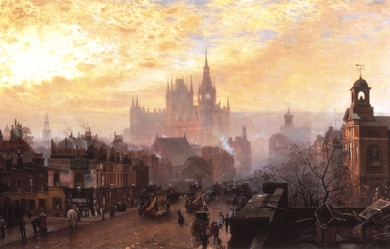
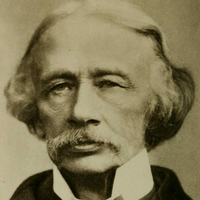
Coventry Kersey Dighton Patmore (23 July 1823 – 26 November 1896) was an English poet and critic best known for The Angel in the House, his narrative poem about an ideal happy marriage. The eldest son of author Peter George Patmore, Coventry Patmore was born at Woodford in Essex and was privately educated. He was his father’s intimate and constant companion and inherited from him his early literary enthusiasm. It was Coventry’s ambition to become an artist. He showed much promise, earning the silver palette of the Society of Arts in 1838. In 1839 he was sent to school in France for six months, where he began to write poetry. On his return, his father planned to publish some of these youthful poems; Coventry however had become interested in science, and poetry was set aside.

I welcome you to my place where you'll find my inter most feelings expressed through my poetry. And through my writings I invite you to enjoy and discover a little more about my life. I started writing when I was in my early teens, without having previous knowledge of life's challenges. I found out very early that if one really wants to progress, you will discover answers for yourself. To me my style of writing is unique, mainly because it comes from deep within my heart. I consider my words a mixture of emotions and thoughts of my spirit and life, written in the form of poetry. Through this web site I hope to share with you a little of the pleasures I enjoy so much. And through my poetry I hope to capture a bit of your interest. When I write I try to portrait my inspirations and my feelings and through my poetry I find answers. If I'm really lucky my poetry finds it's way to paper. For this reason I invite you to share with me a walk through my words.


Washington Irving (April 3, 1783– November 28, 1859) was an American short story writer, essayist, biographer, historian, and diplomat of the early 19th century. He is best known for his short stories “Rip Van Winkle” (1819) and “The Legend of Sleepy Hollow” (1820), both of which appear in his book The Sketch Book of Geoffrey Crayon, Gent. His historical works include biographies of George Washington, Oliver Goldsmith, and Muhammad, and several histories of 15th-century Spain dealing with subjects such as Christopher Columbus, the Moors and the Alhambra. Irving served as the U.S. ambassador to Spain from 1842 to 1846. He made his literary debut in 1802 with a series of observational letters to the Morning Chronicle, written under the pseudonym Jonathan Oldstyle. After moving to England for the family business in 1815, he achieved international fame with the publication of The Sketch Book of Geoffrey Crayon, Gent. in 1819–20. He continued to publish regularly—and almost always successfully—throughout his life, and just eight months before his death (at age 76, in Tarrytown, New York), completed a five-volume biography of George Washington. Irving, along with James Fenimore Cooper, was among the first American writers to earn acclaim in Europe, and Irving encouraged American authors such as Nathaniel Hawthorne, Herman Melville, Henry Wadsworth Longfellow, and Edgar Allan Poe. Irving was also admired by some European writers, including Walter Scott, Lord Byron, Thomas Campbell, Francis Jeffrey, and Charles Dickens. As America’s first genuine internationally best-selling author, Irving advocated for writing as a legitimate profession and argued for stronger laws to protect American writers from copyright infringement. Biography Early years Washington Irving’s parents were William Irving, Sr., originally of Quholm, Shapinsay, Orkney, and Sarah (née Sanders), Scottish-English immigrants. They married in 1761 while William was serving as a petty officer in the British Navy. They had eleven children, eight of whom survived to adulthood. Their first two sons, each named William, died in infancy, as did their fourth child, John. Their surviving children were: William, Jr. (1766), Ann (1770), Peter (1771), Catherine (1774), Ebenezer (1776), John Treat (1778), Sarah (1780), and Washington. The Irving family settled in Manhattan, New York City, and was part of the city’s small, vibrant merchant class when Washington Irving was born on April 3, 1783, the same week city residents learned of the British ceasefire that ended the American Revolution; Irving’s mother named him after the hero of the revolution, George Washington. At age six, with the help of a nanny, Irving met his namesake, who was then living in New York after his inauguration as president in 1789. The president blessed young Irving, an encounter Irving later commemorated in a small watercolor painting, which still hangs in his home today. The Irvings lived at 131 William Street at the time of Washington Irving’s birth. The family later moved across the street to 128 William St. Several of Washington Irving’s older brothers became active New York merchants, and they encouraged their younger brother’s literary aspirations, often supporting him financially as he pursued his writing career. An uninterested student, Irving preferred adventure stories and drama and, by age fourteen, was regularly sneaking out of class in the evenings to attend the theater. The 1798 outbreak of yellow fever in Manhattan prompted his family to send him to healthier climes upriver, and Irving was dispatched to stay with his friend James Kirke Paulding in Tarrytown, New York. It was in Tarrytown that Irving became familiar with the nearby town of Sleepy Hollow, with its quaint Dutch customs and local ghost stories. Irving made several other trips up the Hudson as a teenager, including an extended visit to Johnstown, New York, where he passed through the Catskill mountain region, the setting for “Rip Van Winkle”. "[O]f all the scenery of the Hudson", Irving wrote later, “the Kaatskill Mountains had the most witching effect on my boyish imagination”. The 19-year-old Irving began writing letters to the New York Morning Chronicle in 1802, submitting commentaries on the city’s social and theater scene under the name of Jonathan Oldstyle. The name, which purposely evoked the writer’s Federalist leanings, was the first of many pseudonyms Irving would employ throughout his career. The letters brought Irving some early fame and moderate notoriety. Aaron Burr, a co-publisher of the Chronicle, was impressed enough to send clippings of the Oldstyle pieces to his daughter, Theodosia, while writer Charles Brockden Brown made a trip to New York to recruit Oldstyle for a literary magazine he was editing in Philadelphia. Concerned for his health, Irving’s brothers financed an extended tour of Europe from 1804 to 1806. Irving bypassed most of the sites and locations considered essential for the development of an upwardly mobile young man, to the dismay of his brother William. William wrote that, though he was pleased his brother’s health was improving, he did not like the choice to “gallop through Italy... leaving Florence on your left and Venice on your right”. Instead, Irving honed the social and conversational skills that would later make him one of the world’s most in-demand guests. “I endeavor to take things as they come with cheerfulness”, Irving wrote, “and when I cannot get a dinner to suit my taste, I endeavor to get a taste to suit my dinner”. While visiting Rome in 1805, Irving struck up a friendship with the American painter Washington Allston, and nearly allowed himself to be persuaded into following Allston into a career as a painter. “My lot in life, however”, Irving said later, “was differently cast”. First major writings Irving returned from Europe to study law with his legal mentor, Judge Josiah Ogden Hoffman, in New York City. By his own admission, he was not a good student, and barely passed the bar in 1806. Irving began actively socializing with a group of literate young men he dubbed “The Lads of Kilkenny”. Collaborating with his brother William and fellow Lad James Kirke Paulding, Irving created the literary magazine Salmagundi in January 1807. Writing under various pseudonyms, such as William Wizard and Launcelot Langstaff, Irving lampooned New York culture and politics in a manner similar to today’s Mad magazine. Salmagundi was a moderate success, spreading Irving’s name and reputation beyond New York. In its seventeenth issue, dated November 11, 1807, Irving affixed the nickname “Gotham”—an Anglo-Saxon word meaning “Goat’s Town”—to New York City. In late 1809, while mourning the death of his seventeen-year-old fiancée Matilda Hoffman, Irving completed work on his first major book, A History of New-York from the Beginning of the World to the End of the Dutch Dynasty, by Diedrich Knickerbocker (1809), a satire on self-important local history and contemporary politics. Prior to its publication, Irving started a hoax akin to today’s viral marketing campaigns; he placed a series of missing person advertisements in New York newspapers seeking information on Diedrich Knickerbocker, a crusty Dutch historian who had allegedly gone missing from his hotel in New York City. As part of the ruse, Irving placed a notice—allegedly from the hotel’s proprietor—informing readers that if Mr. Knickerbocker failed to return to the hotel to pay his bill, he would publish a manuscript Knickerbocker had left behind. Unsuspecting readers followed the story of Knickerbocker and his manuscript with interest, and some New York city officials were concerned enough about the missing historian that they considered offering a reward for his safe return. Riding the wave of public interest he had created with his hoax, Irving—adopting the pseudonym of his Dutch historian—published A History of New York on December 6, 1809, to immediate critical and popular success. “It took with the public”, Irving remarked, “and gave me celebrity, as an original work was something remarkable and uncommon in America”. Today, the surname of Diedrich Knickerbocker, the fictional narrator of this and other Irving works, has become a nickname for Manhattan residents in general. After the success of A History of New York, Irving searched for a job and eventually became an editor of Analectic Magazine, where he wrote biographies of naval heroes like James Lawrence and Oliver Perry. He was also among the first magazine editors to reprint Francis Scott Key’s poem “Defense of Fort McHenry”, which would later be immortalized as “The Star-Spangled Banner”, the national anthem of the United States. Like many merchants and New Yorkers, Irving originally opposed the War of 1812, but the British attack on Washington, D.C. in 1814 convinced him to enlist. He served on the staff of Daniel Tompkins, governor of New York and commander of the New York State Militia. Apart from a reconnaissance mission in the Great Lakes region, he saw no real action. The war was disastrous for many American merchants, including Irving’s family, and in mid-1815, he left for England to attempt to salvage the family trading company. He remained in Europe for the next seventeen years. Irving was elected a member of the American Antiquarian Society in 1815. Life in Europe The Sketch Book Irving spent the next two years trying to bail out the family firm financially but eventually had to declare bankruptcy. With no job prospects, Irving continued writing throughout 1817 and 1818. In the summer of 1817, he visited Walter Scott, beginning a lifelong personal and professional friendship. Irving continued writing: he composed the short story “Rip Van Winkle” overnight while staying with his sister Sarah and her husband, Henry van Wart in Birmingham, England, a place that also inspired other works. In October 1818, Irving’s brother William secured for Irving a post as chief clerk to the United States Navy, and urged him to return home. Irving turned the offer down, opting to stay in England to pursue a writing career. In the spring of 1819, Irving sent to his brother Ebenezer in New York a set of short prose pieces that he asked be published as The Sketch Book of Geoffrey Crayon, Gent. The first installment, containing “Rip Van Winkle”, was an enormous success, and the rest of the work would be equally successful; it was issued in 1819–1820 in seven installments in New York, and in two volumes in London ("The Legend of Sleepy Hollow" would appear in the sixth issue of the New York edition, and the second volume of the London edition). Like many successful authors of this era, Irving struggled against literary bootleggers. In England, some of his sketches were reprinted in periodicals without his permission, a legal practice as there was no international copyright law at the time. To prevent further piracy in Britain, Irving paid to have the first four American installments published as a single volume by John Miller in London. Irving appealed to Walter Scott for help procuring a more reputable publisher for the remainder of the book. Scott referred Irving to his own publisher, London powerhouse John Murray, who agreed to take on The Sketch Book. From then on, Irving would publish concurrently in the United States and Britain to protect his copyright, with Murray being his English publisher of choice. Irving’s reputation soared, and for the next two years, he led an active social life in Paris and Britain, where he was often feted as an anomaly of literature: an upstart American who dared to write English well. Bracebridge Hall and Tales of a Traveller With both Irving and publisher John Murray eager to follow up on the success of The Sketch Book, Irving spent much of 1821 travelling in Europe in search of new material, reading widely in Dutch and German folk tales. Hampered by writer’s block—and depressed by the death of his brother William—Irving worked slowly, finally delivering a completed manuscript to Murray in March 1822. The book, Bracebridge Hall, or The Humorists, A Medley (the location was based loosely on Aston Hall, occupied by members of the Bracebridge family, near his sister’s home in Birmingham) was published in June 1822. The format of Bracebridge was similar to that of The Sketch Book, with Irving, as Crayon, narrating a series of more than fifty loosely connected short stories and essays. While some reviewers thought Bracebridge to be a lesser imitation of The Sketch Book, the book was well received by readers and critics. “We have received so much pleasure from this book”, wrote critic Francis Jeffrey in the Edinburgh Review, “that we think ourselves bound in gratitude... to make a public acknowledgement of it.” Irving was relieved at its reception, which did much to cement his reputation with European readers. Still struggling with writer’s block, Irving traveled to Germany, settling in Dresden in the winter of 1822. Here he dazzled the royal family and attached himself to Mrs. Amelia Foster, an American living in Dresden with her five children. Irving was particularly attracted to Mrs. Foster’s 18-year-old daughter Emily and vied in frustration for her hand. Emily finally refused his offer of marriage in the spring of 1823. He returned to Paris and began collaborating with playwright John Howard Payne on translations of French plays for the English stage, with little success. He also learned through Payne that the novelist Mary Wollstonecraft Shelley was romantically interested in him, though Irving never pursued the relationship. In August 1824, Irving published the collection of essays Tales of a Traveller—including the short story “The Devil and Tom Walker”—under his Geoffrey Crayon persona. “I think there are in it some of the best things I have ever written”, Irving told his sister. But while the book sold respectably, Traveller was dismissed by critics, who panned both Traveller and its author. “The public have been led to expect better things”, wrote the United States Literary Gazette, while the New-York Mirror pronounced Irving “overrated”. Hurt and depressed by the book’s reception, Irving retreated to Paris where he spent the next year worrying about finances and scribbling down ideas for projects that never materialized. Spanish books While in Paris, Irving received a letter from Alexander Hill Everett on January 30, 1826. Everett, recently the American Minister to Spain, urged Irving to join him in Madrid, noting that a number of manuscripts dealing with the Spanish conquest of the Americas had recently been made public. Irving left for Madrid and enthusiastically began scouring the Spanish archives for colorful material. With full access to the American consul’s massive library of Spanish history, Irving began working on several books at once. The first offspring of this hard work, A History of the Life and Voyages of Christopher Columbus, was published in January 1828. The book was popular in the United States and in Europe and would have 175 editions published before the end of the century. It was also the first project of Irving’s to be published with his own name, instead of a pseudonym, on the title page. Irving was invited to stay at the palace of the Duke of Gor, who gave him unfettered access to his library containing many medieval manuscripts. Chronicle of the Conquest of Granada was published a year later, followed by Voyages and Discoveries of the Companions of Columbus in 1831. Irving’s writings on Columbus are a mixture of history and fiction, a genre now called romantic history. Irving based them on extensive research in the Spanish archives, but also added imaginative elements aimed at sharpening the story. The first of these works is the source of the durable myth that medieval Europeans believed the Earth was flat. (See Myth of the flat earth.) According to the popular book, Columbus proved the Earth was round. In 1829, Irving moved into Granada’s ancient palace Alhambra, “determined to linger here”, he said, “until I get some writings under way connected with the place”. Before he could get any significant writing underway, however, he was notified of his appointment as Secretary to the American Legation in London. Worried he would disappoint friends and family if he refused the position, Irving left Spain for England in July 1829. Secretary to the American legation in London Arriving in London, Irving joined the staff of American Minister Louis McLane. McLane immediately assigned the daily secretary work to another man and tapped Irving to fill the role of aide-de-camp. The two worked over the next year to negotiate a trade agreement between the United States and the British West Indies, finally reaching a deal in August 1830. That same year, Irving was awarded a medal by the Royal Society of Literature, followed by an honorary doctorate of civil law from Oxford in 1831. Following McLane’s recall to the United States in 1831 to serve as Secretary of Treasury, Irving stayed on as the legation’s chargé d’affaires until the arrival of Martin Van Buren, President Andrew Jackson’s nominee for British Minister. With Van Buren in place, Irving resigned his post to concentrate on writing, eventually completing Tales of the Alhambra, which would be published concurrently in the United States and England in 1832. Irving was still in London when Van Buren received word that the United States Senate had refused to confirm him as the new Minister. Consoling Van Buren, Irving predicted that the Senate’s partisan move would backfire. “I should not be surprised”, Irving said, “if this vote of the Senate goes far toward elevating him to the presidential chair”. Return to America Washington Irving arrived in New York, after seventeen years abroad, on May 21, 1832. That September, he accompanied the U.S. Commissioner on Indian Affairs, Henry Leavitt Ellsworth, along with companions Charles La Trobe and Count Albert-Alexandre de Pourtales, on a surveying mission deep in Indian Territory, now known as Oklahoma. At the completion of his western tour, Irving traveled through Washington, D.C. and Baltimore, where he became acquainted with the politician and novelist John Pendleton Kennedy. Frustrated by bad investments, Irving turned to writing to generate additional income, beginning with A Tour on the Prairies, a work which related his recent travels on the frontier. The book was another popular success and also the first book written and published by Irving in the United States since A History of New York in 1809. In 1834, he was approached by fur magnate John Jacob Astor, who convinced Irving to write a history of his fur trading colony in the American Northwest, now known as Astoria, Oregon. Irving made quick work of Astor’s project, shipping the fawning biographical account titled Astoria in February 1836. In 1835, Irving, Astor, and a few others founded the Saint Nicholas Society in the City of New York. During an extended stay at Astor’s, Irving met the explorer Benjamin Bonneville, who intrigued Irving with his maps and stories of the territories beyond the Rocky Mountains. When the two met in Washington, D.C. several months later, Bonneville opted to sell his maps and rough notes to Irving for $1,000. Irving used these materials as the basis for his 1837 book The Adventures of Captain Bonneville. These three works made up Irving’s “western” series of books and were written partly as a response to criticism that his time in England and Spain had made him more European than American. In the minds of some critics, especially James Fenimore Cooper and Philip Freneau, Irving had turned his back on his American heritage in favor of English aristocracy. Irving’s western books, particularly A Tour on the Prairies, were well received in the United States, though British critics accused Irving of “book-making”. In 1835, Irving purchased a “neglected cottage” and its surrounding riverfront property in Tarrytown, New York. The house, which he named Sunnyside in 1841, required constant repair and renovation over the next twenty years. With costs of Sunnyside escalating, Irving reluctantly agreed in 1839 to become a regular contributor to The Knickerbocker magazine, writing new essays and short stories under the Knickerbocker and Crayon pseudonyms. He was regularly approached by aspiring young authors for advice or endorsement, including Edgar Allan Poe, who sought Irving’s comments on “William Wilson” and “The Fall of the House of Usher”. Irving also championed America’s maturing literature, advocating stronger copyright laws to protect writers from the kind of piracy that had initially plagued The Sketch Book. Writing in the January 1840 issue of Knickerbocker, he openly endorsed copyright legislation pending in the U.S. Congress. “We have a young literature”, he wrote, “springing up and daily unfolding itself with wonderful energy and luxuriance, which... deserves all its fostering care”. The legislation did not pass. In 1841, he was elected in the National Academy of Design as an Honorary Academician. Irving at this time also began a friendly correspondence with the English writer Charles Dickens and hosted the author and his wife at Sunnyside during Dickens’s American tour in 1842. Minister to Spain In 1842, after an endorsement from Secretary of State Daniel Webster, President John Tyler appointed Irving as Minister to Spain. Irving was surprised and honored, writing, “It will be a severe trial to absent myself for a time from my dear little Sunnyside, but I shall return to it better enabled to carry it on comfortably”. While Irving hoped his position as Minister would allow him plenty of time to write, Spain was in a state of perpetual political upheaval during most of his tenure, with a number of warring factions vying for control of the twelve-year-old Queen Isabella II. Irving maintained good relations with the various generals and politicians, as control of Spain rotated through Espartero, Bravo, then Narvaez. However, the politics and warfare were exhausting, and Irving—homesick and suffering from a crippling skin condition—grew quickly disheartened: I am wearied and at times heartsick of the wretched politics of this country. . . . The last ten or twelve years of my life, passed among sordid speculators in the United States, and political adventurers in Spain, has shewn me so much of the dark side of human nature, that I begin to have painful doubts of my fellow man; and look back with regret to the confiding period of my literary career, when, poor as a rat, but rich in dreams, I beheld the world through the medium of my imagination and was apt to believe men as good as I wished them to be. With the political situation in Spain relatively settled, Irving continued to closely monitor the development of the new government and the fate of Isabella. His official duties as Spanish Minister also involved negotiating American trade interests with Cuba and following the Spanish parliament’s debates over slave trade. He was also pressed into service by the American Minister to the Court of St. James’s in London, Louis McLane, to assist in negotiating the Anglo-American disagreement over the Oregon border that newly elected president James K. Polk had vowed to resolve. Final years and death Returning from Spain in 1846, Irving took up permanent residence at Sunnyside and began work on an “Author’s Revised Edition” of his works for publisher George Palmer Putnam. For its publication, Irving had made a deal that guaranteed him 12 percent of the retail price of all copies sold. Such an agreement was unprecedented at that time. On the death of John Jacob Astor in 1848, Irving was hired as an executor of Astor’s estate and appointed, by Astor’s will, as first chairman of the Astor library, a forerunner to the New York Public Library. As he revised his older works for Putnam, Irving continued to write regularly, publishing biographies of the writer and poet Oliver Goldsmith in 1849 and the 1850 work about the Islamic prophet Muhammad. In 1855, he produced Wolfert’s Roost, a collection of stories and essays he had originally written for The Knickerbocker and other publications, and began publishing at intervals a biography of his namesake, George Washington, a work which he expected to be his masterpiece. Five volumes of the biography were published between 1855 and 1859. Irving traveled regularly to Mount Vernon and Washington, D.C. for his research, and struck up friendships with Presidents Millard Fillmore and Franklin Pierce. He was elected an Associate Fellow of the American Academy of Arts and Sciences in 1855. He continued to socialize and keep up with his correspondence well into his seventies, and his fame and popularity continued to soar. “I don’t believe that any man, in any country, has ever had a more affectionate admiration for him than that given to you in America”, wrote Senator William C. Preston in a letter to Irving. “I believe that we have had but one man who is so much in the popular heart”. By 1859, author Oliver Wendell Holmes Sr. noted that Sunnyside had become “next to Mount Vernon, the best known and most cherished of all the dwellings in our land”. On the night of November 28, 1859, at 9:00 pm, only eight months after completing the final volume of his Washington biography, Washington Irving died of a heart attack in his bedroom at Sunnyside at the age of 76. Legend has it that his last words were: “Well, I must arrange my pillows for another night. When will this end?” He was buried under a simple headstone at Sleepy Hollow cemetery on December 1, 1859. Irving and his grave were commemorated by Henry Wadsworth Longfellow in his 1876 poem, “In The Churchyard at Tarrytown”, which concludes with: How sweet a life was his; how sweet a death! Living, to wing with mirth the weary hours, Or with romantic tales the heart to cheer; Dying, to leave a memory like the breath Of summers full of sunshine and of showers, A grief and gladness in the atmosphere. Legacy Literary reputation Irving is largely credited as the first American Man of Letters, and the first to earn his living solely by his pen. Eulogizing Irving before the Massachusetts Historical Society in December 1859, his friend, the poet Henry Wadsworth Longfellow, acknowledged Irving’s role in promoting American literature: “We feel a just pride in his renown as an author, not forgetting that, to his other claims upon our gratitude, he adds also that of having been the first to win for our country an honourable name and position in the History of Letters”. Irving perfected the American short story, and was the first American writer to place his stories firmly in the United States, even as he poached from German or Dutch folklore. He is also generally credited as one of the first to write both in the vernacular, and without an obligation to the moral or didactic in his short stories, writing stories simply to entertain rather than to enlighten. Irving also encouraged would-be writers. As George William Curtis noted, there “is not a young literary aspirant in the country, who, if he ever personally met Irving, did not hear from him the kindest words of sympathy, regard, and encouragement”. Some critics, however—including Edgar Allan Poe—felt that while Irving should be given credit for being an innovator, the writing itself was often unsophisticated. “Irving is much over-rated”, Poe wrote in 1838, “and a nice distinction might be drawn between his just and his surreptitious and adventitious reputation—between what is due to the pioneer solely, and what to the writer”. A critic for the New-York Mirror wrote: “No man in the Republic of Letters has been more overrated than Mr. Washington Irving”. Some critics noted especially that Irving, despite being an American, catered to British sensibilities and, as one critic noted, wrote “of and for England, rather than his own country”. Other critics were inclined to be more forgiving of Irving’s style. William Makepeace Thackeray was the first to refer to Irving as the “ambassador whom the New World of Letters sent to the Old”, a banner picked up by writers and critics throughout the 19th and 20th centuries. “He is the first of the American humorists, as he is almost the first of the American writers”, wrote critic H.R. Hawless in 1881, “yet belonging to the New World, there is a quaint Old World flavor about him”. Early critics often had difficulty separating Irving the man from Irving the writer—"The life of Washington Irving was one of the brightest ever led by an author", wrote Richard Henry Stoddard, an early Irving biographer—but as years passed and Irving’s celebrity personality faded into the background, critics often began to review his writings as all style, no substance. “The man had no message”, said critic Barrett Wendell. Yet, critics conceded that despite Irving’s lack of sophisticated themes—Irving biographer Stanley T. Williams could be scathing in his assessment of Irving’s work—most agreed he wrote elegantly. Impact on American culture Irving popularized the nickname “Gotham” for New York City, later used in Batman comics and movies as the name of Gotham City, and is credited with inventing the expression “the almighty dollar”. The surname of his Dutch historian, Diedrich Knickerbocker, is generally associated with New York and New Yorkers, and can still be seen across the jerseys of New York’s professional basketball team, albeit in its more familiar, abbreviated form, reading simply Knicks. In Bushwick, Brooklyn, a neighborhood of New York City, there are two parallel streets named Irving Avenue and Knickerbocker Avenue; the latter forms the core of the neighborhood’s shopping district. One of Irving’s most lasting contributions to American culture is in the way Americans perceive and celebrate Christmas. In his 1812 revisions to A History of New York, Irving inserted a dream sequence featuring St. Nicholas soaring over treetops in a flying wagon—a creation others would later dress up as Santa Claus. In his five Christmas stories in The Sketch Book, Irving portrayed an idealized celebration of old-fashioned Christmas customs at a quaint English manor, that depicted harmonious warm-hearted English Christmas festivities he experienced while staying in Aston Hall, Birmingham, England, that had largely been abandoned. He used text from The Vindication of Christmas (London 1652) of old English Christmas traditions, he had transcribed into his journal as a format for his stories. The book contributed to the revival and reinterpretation of the Christmas holiday in the United States. In his biography of Christopher Columbus, Irving introduced the erroneous idea that Europeans believed the world to be flat prior to the discovery of the New World. Borrowed from Irving, the flat-Earth myth has been taught in schools as fact to many generations of Americans. The American painter John Quidor based many of his paintings on scenes from the works of Irving about Dutch New York, including such paintings as Ichabod Crane Flying from the Headless Horseman (1828), The Return of Rip Van Winkle (1849), and The Headless Horseman Pursuing Ichabod Crane (1858). Works * Letters of Jonathan Oldstyle 1802 * Salmagundi 1807–1808 * A History of New York 1809 * The Sketch Book of Geoffrey Crayon, Gent. 1819–1820 * Bracebridge Hall 1822 * Tales of a Traveller 1824 * A History of the Life and Voyages of Christopher Columbus 1828 * Chronicle of the Conquest of Granada 1829 * Voyages and Discoveries of the Companions of Columbus 1831 * Tales of the Alhambra 1832 * The Crayon Miscellany 1835 * Astoria 1836 * The Adventures of Captain Bonneville 1837 * The Life of Oliver Goldsmith 1840 * Biography and Poetical Remains of the Late Margaret Miller Davidson 1841 * Mahomet and His Successors 1849 * Wolfert's Roost 1855 * The Life of George Washington 1855–1859 References Wikipedia—https://en.wikipedia.org/wiki/Washington_Irving

I love poetry. I write poetry based on my experience in life and love and the songs I listen to. I first started writing for school, but I'm literally addicted to poetry now. It's my escape. I have been through so many things in my life I should not have had to go through, especially since I'm only 14. But it all comes out in my poetry. I love watching crime shows like Criminal Minds and NCIS. I'm obsessed with TV news reports about such things as crime, train derailments, car accidents, and fires. It's just the way I am. They say music, especially rock music, takes away your pain, whether it be physical, emotional, spiritual, or mental. I learned it's not true. It just makes it better temporarily, but then makes it worse.

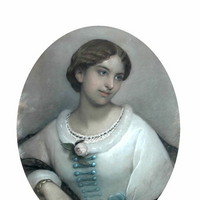
Augusta Webster (30 January 1837 - 5 September 1894) born in Poole, Dorset as Julia Augusta Davies, was an English poetesse, dramatist, essayist, and translator. The daughter of Vice-admiral George Davies and Julia Hume she spent her younger years on board the ship he was stationed, the Griper. She studied Greek at home, taking a particular interest in Greek drama, and went on to study at the Cambridge School of Art. She published her first volume of poetry in 1860 under the pen name Cecil Homes. In 1863 she married Thomas Webster, a fellow at Trinity College, Cambridge. They had a daughter, Augusta Georgiana, who married Reverend George Theobald Bourke, a younger son of the Joseph Bourke, 3rd Earl of Mayo.
twenty-six year old poet from central scotland themes of: insomnia, solipsism, separation, confession, trippy-abstract, four a.m. word-spillage poetry & prose reader for the levatio published by honey & lime, the levatio, women in law @ the university of glasgow, vita brevis press, qmunicate ~ medium: @hollylm twitter: @hollylmckenna instagram: @beltanewean threads: @beltanewean bluesky: @hollylmckenna

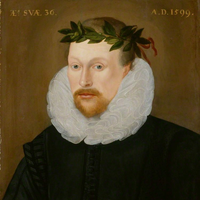
Michael Drayton (1563– 23 December 1631) was an English poet who came to prominence in the Elizabethan era. Early life Drayton was born at Hartshill, near Nuneaton, Warwickshire, England. Almost nothing is known about his early life, beyond the fact that in 1580 he was in the service of Thomas Goodere of Collingham, Nottinghamshire. Nineteenth– and twentieth-century scholars, on the basis of scattered allusions in his poems and dedications, suggested that Drayton might have studied at the University of Oxford, and been intimate with the Polesworth branch of the Goodere family. More recent work has cast doubt on those speculations. Literary career 1591–1602 In 1591 he produced his first book, The Harmony of the Church, a volume of spiritual poems, dedicated to Lady Devereux. It is notable for a version of the Song of Solomon, executed with considerable richness of expression. However, with the exception of forty copies, seized by the Archbishop of Canterbury, the whole edition was destroyed by public order. Nevertheless, Drayton published a vast amount within the next few years. In 1593 appeared Idea: The Shepherd’s Garland, a collection of nine pastorals, in which he celebrated his own love-sorrows under the poetic name of Rowland. The basic idea was expanded in a cycle of sixty-four sonnets, published in 1594, under the title of Idea’s Mirror, by which we learn that the lady lived by the river Ankor in Warwickshire. It appears that he failed to win his “Idea,” and lived and died a bachelor. It has been said Drayton’s sonnets possess a direct, instant, and universal appeal, by reason of their simple straightforward ring and foreshadowed the smooth style of Fairfax, Waller, and Dryden. Drayton was the first to bring the term ode, for a lyrical poem, to popularity in England and was a master of the short, staccato Anacreontics measure. Also in 1593 there appeared the first of Drayton’s historical poems, The Legend of Piers Gaveston, and the next year saw the publication of Matilda, an epic poem in rhyme royal. It was about this time, too, that he brought out Endimion and Phoebe, a volume which he never republished, but which contains some interesting autobiographical matter, and acknowledgments of literary help from Thomas Lodge, if not from Edmund Spenser and Samuel Daniel also. In his Fig for Momus, Lodge reciprocated these friendly courtesies. In 1596 Drayton published his long and important poem Mortimeriados, a very serious production in ottava rima. He later enlarged and modified this poem, and republished it in 1603 under the title of The Barons’ Wars. In 1596 also appeared another historical poem, The Legend of Robert, Duke of Normandy, with which Piers Gaveston was reprinted. In 1597 appeared England’s Heroical Epistles, a series of historical studies, in imitation of those of Ovid. These last poems, written in the heroic couplet, contain some of the finest passages in Drayton’s writings. 1603–1631 By 1597, the poet was resting on his laurels. It seems that he was much favoured at the court of Elizabeth, and he hoped that it would be the same with her successor. But when, in 1603, he addressed a poem of compliment to James I, on his accession, it was ridiculed, and his services rudely rejected. His bitterness found expression in a satire, The Owl (1604), but he had no talent in this kind of composition. Not much more entertaining was his scriptural narrative of Moses in a Map of his Miracles, a sort of epic in heroics printed the same year. In 1605 Drayton reprinted his most important works, his historical poems and the Idea, in a single volume which ran through eight editions during his lifetime. He also collected his smaller pieces, hitherto unedited, in a volume undated, but probably published in 1605, under the title of Poems Lyric and Pastoral; these consisted of odes, eclogues, and a fantastic satire called The Man in the Moon. Some of the odes are extremely spirited. In this volume he printed for the first time the famous Ballad of Agincourt. He had adopted as early as 1598 the extraordinary resolution of celebrating all the points of topographical or antiquarian interest in the island of Great Britain, and on this laborious work he was engaged for many years. At last, in 1613, the first part of this vast work was published under the title of Poly-Olbion, eighteen books being produced, to which the learned Selden supplied notes. The success of this great work, which has since become so famous, was very small at first, and not until 1622 did Drayton succeed in finding a publisher willing to undertake the risk of bringing out twelve more books in a second part. This completed the survey of England, and the poet, who had hoped “to crown Scotland with flowers,” and arrive at last at the Orcades, never crossed the Tweed. In 1627 he published another of his miscellaneous volumes, and this contains some of his most characteristic writing. It consists of the following pieces: The Battle of Agincourt, an historical poem in ottava rima (not to be confused with his ballad on the same subject), and The Miseries of Queen Margaret, written in the same verse and manner; Nimphidia, the Court of Faery, a most joyous and graceful little epic of fairyland; The Quest of Cinthia and The Shepherd’s Sirena, two lyrical pastorals; and finally The Moon Calf, a sort of satire. Nimphidia is the most critically acclaimed, along with his famous ballad on the battle of Agincourt; it is quite unique of its kind and full of rare fantastic fancy. The last of Drayton’s voluminous publications was The Muses’ Elizium in 1630. He died in London, was buried in Poets’ Corner in Westminster Abbey, and had a monument placed over him by the Countess of Dorset, with memorial lines attributed to Ben Jonson. Theatre Like other poets of his era, Drayton was active in writing for the theatre; but unlike Shakespeare, Ben Jonson, or Samuel Daniel, he invested little of his art in the genre. For a period of only five years, from 1597 to 1602, Drayton was a member of the stable of playwrights who supplied material for the theatrical syndicate of Philip Henslowe. Henslowe’s Diary links Drayton’s name with 23 plays from that period, and shows that Drayton almost always worked in collaboration with other Henslowe regulars, like Thomas Dekker, Anthony Munday, and Henry Chettle, among others. Of these 23 plays, only one has survived, that being Part 1 of Sir John Oldcastle, which Drayton composed in collaboration with Munday, Robert Wilson, and Richard Hathwaye. The text of Oldcastle shows no clear signs of Drayton’s hand; traits of style consistent through the entire corpus of his poetry (the rich vocabulary of plant names, star names, and other unusual words; the frequent use of original contractional forms, sometimes with double apostrophes, like “th’adult’rers” or “pois’ned’st”) are wholly absent from the text, suggesting that his contribution to the collaborative effort was not substantial. William Longsword, the one play that Henslowe’s Diary suggests was a solo Drayton effort, was never completed. (Drayton may have preferred the role of impresario to that of playwright; he was one of the lessees of the Whitefriars Theatre, together with Thomas Woodford, nephew of the playwright Thomas Lodge, when it was started in 1608. Around 1606, Drayton was also part of a syndicate that chartered a company of child actors, The Children of the King’s Revels. These may or may not have been the Children of Paul’s under a new name, since the latter group appears to have gone out of existence at about this time. The venture was not a success, dissolving in litigation in 1609.) Friendships Drayton was a friend of some of the most famous men of the age. He corresponded familiarly with Drummond; Ben Jonson, William Browne, George Wither and others were among his friends. There is a tradition that he was a friend of Shakespeare, supported by a statement of John Ward, once vicar of Stratford-on-Avon, that “Shakespear, Drayton and Ben Jonson had a merry meeting, and it seems, drank too hard, for Shakespear died of a feavour there contracted.” In one of his poems, an elegy or epistle to Mr Henry Reynolds, he has left some valuable criticisms on poets whom he had known. That he was a restless and discontented, as well as a worthy, man may be gathered from his own admissions. Editions In 1748 a folio edition of Drayton’s complete works was published under the editorial supervision of William Oldys, and again in 1753 there appeared an issue in four volumes quarto. But these were very unintelligently and inaccurately prepared. A complete edition of Drayton’s works with variant readings was projected by Richard Hooper in 1876, but was never carried to a conclusion; a volume of selections, edited by A. H. Bullen, appeared in 1883. See especially Oliver Elton, Michael Drayton (1906). A complete five-volume edition of Drayton’s work was published by Oxford in 1931-41 (revised 1961), edited by J. William Hebel, K. Tillotson and B. H. Newdigate. That and a two volume edition of Drayton’s poems published at Harvard in 1953, edited by John Buxton, are the only 20th century editions of his poems recorded by the Library of Congress. References Wikipedia—https://en.wikipedia.org/wiki/Michael_Drayton
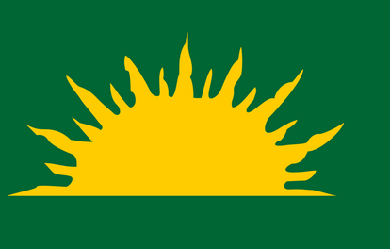
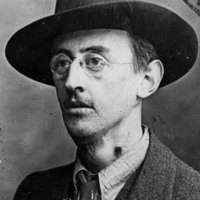
Joseph Mary Plunkett (Irish: Seosamh Máire Pluincéid, 21 November 1887– 12 May 1916) was an Irish nationalist, poet, journalist, and a leader of the 1916 Easter Rising. He was born at 26 Upper Fitzwilliam Street in one of Dublin’s most affluent neighbourhoods. Both his parents came from wealthy backgrounds, and his father, George Noble Plunkett, had been made a papal count. Despite being born into a life of privilege, young Joe Plunkett did not have an easy childhood.

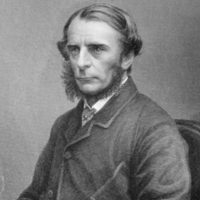
Charles Kingsley (12 June 1819– 23 January 1875) was a broad church priest of the Church of England, a university professor, historian and novelist. He is particularly associated with the West Country and northeast Hampshire. He was a friend and correspondent with Charles Darwin. Kingsley was born in Holne, Devon, the elder of two sons of the Reverend Charles Kingsley and his wife Mary Lucas Kingsley. In 1861 he became a private tutor to the Prince of Wales.

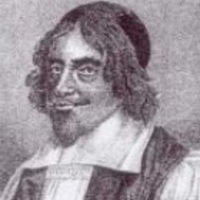
Henry King (1592– 30 September 1669) was an English poet and bishop. Life The older son of John King, Bishop of London, and his wife Joan Freeman, he was baptised at Worminghall, Buckinghamshire, 16 January 1592. He was educated at Lord Williams’s School, Westminster School and in 1608 became a student of Christ Church, Oxford. With his brother John King he matriculated 20 January 1609, and was admitted (19 June 1611 and 7 July 1614) to the degrees of bachelor and master of arts. On 24 January 1616 he was collated to the prebend of St. Pancras in St. Paul’s Cathedral, receiving at the same time the office of penitentiary or confessor in the cathedral, together with the rectory and patronage of Chigwell, Essex. He was made archdeacon of Colchester on 10 April 1617, and soon afterwards received the sinecure rectory of Fulham, in addition to being appointed one of the royal chaplains. All these preferments he held until he was advanced to the episcopal bench. Late in 1617 he preached a sermon at Paul’s Cross. About this time King married Anne, eldest daughter of Robert Berkeley, esq., and granddaughter of Sir Maurice Berkeley. There were four or five children of the marriage, but only two survived. His wife died about 1624, and was buried in St. Paul’s Cathedral, aged just 23. He was a close friend of John Donne, who made him one of his executors, and presented him with his sermons in manuscript, and notes from his reading on over 1400 authors. Other friends were Ben Jonson, George Sandys, Sir Henry Blount, and James Howell. His friendship with Izaak Walton began about 1634, and was lifelong. After his father’s death, on Good Friday 1621, a rumour circulated that he had died in communion with the church of Rome. This was the subject of a two pamphlets attributed to Richard Broughton and George Musket. King preached a sermon refuting this claim on 25 November 1621. He was made canon of Christ Church 3 March 1624, and his brother John was made canon in the following August. On 19 May 1625 they were admitted to the degrees of B.D. and D.D. On 6 February 1639 he was made dean of Rochester, and on 6 February 1642, the day after the House of Lords had passed the bill to deprive the bishops of their votes, he became Bishop of Chichester; he was also presented to the rectory of Petworth in Sussex. He was residing at his episcopal palace when Chichester surrendered to the parliament in 1643, and his library was seized. He was deprived of the rectory of Petworth, which was given by parliament to Francis Cheynell, and by a resolution of the House of Commons, 27 June 1643, his estates were ordered to be sequestrated. From 1643 to 1651 he lived in the house of his brother-in-law, Sir Richard Hobart of Langley, Buckinghamshire. Shortly afterwards King retired to Ritchings, near Langley, the residence of Lady Anne Salter (supposed to be the sister of Brian Duppa, where other members of the King family and John Hales of Eton found refuge. In 1659 King was engaged in negotiations for supplying the vacant bishoprics, and was reinstated at the Restoration, returning to Chichester. On 20 May 1661 he preached at Whitehall, and on 24 April 1662 he delivered an impressive funeral sermon on Bishop Duppa at Westminster Abbey. King died at Chichester 30 September 1669, and was buried in Chichester Cathedral, where the widow of his son John erected a monument to his memory and that of her husband. His second son, Henry, died 21 February 1669; his eldest son, John, died 10 March 1671. Works * King wrote many elegies on royal persons and on his private friends, who included John Donne and Ben Jonson. A selection from his Poems and Psalms was published in 1843. References Wikipedia—https://en.wikipedia.org/wiki/Henry_King_(poet)
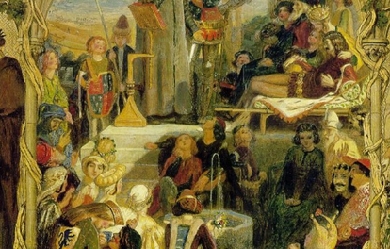
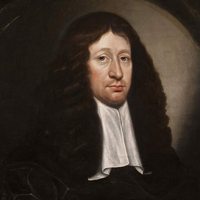
Andrew Marvell (31 March 1621– 16 August 1678) was an English metaphysical poet, satirist and politician who sat in the House of Commons at various times between 1659 and 1678. During the Commonwealth period he was a colleague and friend of John Milton. His poems range from the love-song “To His Coy Mistress”, to evocations of an aristocratic country house and garden in “Upon Appleton House” and “The Garden”, the political address “An Horatian Ode upon Cromwell’s Return from Ireland”, and the later personal and political satires “Flecknoe” and “The Character of Holland”. Early life Marvell was born in Winestead-in-Holderness, East Riding of Yorkshire, near the city of Kingston upon Hull, the son of a Church of England clergyman also named Andrew Marvell. The family moved to Hull when his father was appointed Lecturer at Holy Trinity Church there, and Marvell was educated at Hull Grammar School. A secondary school in the city, the Andrew Marvell Business and Enterprise College, is now named after him. At the age of 13, Marvell attended Trinity College, Cambridge and eventually received a BA degree. A portrait of Marvell attributed to Godfrey Kneller hangs in Trinity College’s collection. Afterwards, from the middle of 1642 onwards, Marvell probably travelled in continental Europe. He may well have served as a tutor for an aristocrat on the Grand Tour, but the facts are not clear on this point. While England was embroiled in the civil war, Marvell seems to have remained on the continent until 1647. It is not known exactly where his travels took him, except that he was in Rome in 1645 and Milton later reported that Marvell had mastered four languages, including French, Italian and Spanish. First poems and Marvell’s time at Nun Appleton Marvell’s first poems, which were written in Latin and Greek and published when he was still at Cambridge, lamented a visitation of the plague and celebrated the birth of a child to King Charles I and Queen Henrietta Maria. He only belatedly became sympathetic to the successive regimes during the Interregnum after Charles I’s execution on 30 January 1649. His “Horatian Ode”, a political poem dated to early 1650, responds with lament to the regicide even as it praises Oliver Cromwell’s return from Ireland. Circa 1650–52, Marvell served as tutor to the daughter of the Lord General Thomas Fairfax, who had recently relinquished command of the Parliamentary army to Cromwell. He lived during that time at Nun Appleton Hall, near York, where he continued to write poetry. One poem, “Upon Appleton House, To My Lord Fairfax”, uses a description of the estate as a way of exploring Fairfax’s and Marvell’s own situation in a time of war and political change. Probably the best-known poem he wrote at this time is “To His Coy Mistress”. Anglo-Dutch War and employment as Latin secretary During the period of increasing tensions leading up to the First Anglo-Dutch War of 1653, Marvell wrote the satirical “Character of Holland,” repeating the then current stereotype of the Dutch as “drunken and profane”: "This indigested vomit of the Sea,/ Fell to the Dutch by Just Propriety.” He became a tutor to Cromwell’s ward, William Dutton, in 1653, and moved to live with his pupil at the house of John Oxenbridge in Eton. Oxenbridge had made two trips to Bermuda, and it is thought that this inspired Marvell to write his poem Bermudas. He also wrote several poems in praise of Cromwell, who was by this time Lord Protector of England. In 1656 Marvell and Dutton travelled to France, to visit the Protestant Academy of Saumur. In 1657, Marvell joined Milton, who by that time had lost his sight, in service as Latin secretary to Cromwell’s Council of State at a salary of £200 a year, which represented financial security at that time. Oliver Cromwell died in 1658. He was succeeded as Lord Protector by his son Richard. In 1659 Marvell was elected Member of Parliament for Kingston-upon-Hull in the Third Protectorate Parliament. He was paid a rate of 6 shillings, 8 pence per day during sittings of parliament, a financial support derived from the contributions of his constituency. He was re-elected MP for Hull in 1660 for the Convention Parliament. After the Restoration The monarchy was restored to Charles II in 1660. Marvell avoided punishment for his own co-operation with republicanism, and he helped convince the government of Charles II not to execute John Milton for his antimonarchical writings and revolutionary activities. The closeness of the relationship between the two former colleagues is indicated by the fact that Marvell contributed an eloquent prefatory poem, entitled “On Mr. Milton’s Paradise Lost”, to the second edition of Milton’s epic Paradise Lost. According to a biographer: “Skilled in the arts of self-preservation, he was not a toady.” In 1661 Marvell was re-elected MP for Hull in the Cavalier Parliament. He eventually came to write several long and bitterly satirical verses against the corruption of the court. Although circulated in manuscript form, some finding anonymous publication in print, they were too politically sensitive and thus dangerous to be published under his name until well after his death. Marvell took up opposition to the 'court party’, and satirised them anonymously. In his longest verse satire, Last Instructions to a Painter, written in 1667, Marvell responded to the political corruption that had contributed to English failures during the Second Anglo-Dutch War. The poem did not find print publication until after the Revolution of 1688–9. The poem instructs an imaginary painter how to picture the state without a proper navy to defend them, led by men without intelligence or courage, a corrupt and dissolute court, and dishonest officials. Of another such satire, Samuel Pepys, himself a government official, commented in his diary, “Here I met with a fourth Advice to a Painter upon the coming in of the Dutch and the End of the War, that made my heart ake to read, it being too sharp and so true.” From 1659 until his death in 1678, Marvell was serving as London agent for the Hull Trinity House, a shipmasters’ guild. He went on two missions to the continent, one to the Dutch Republic and the other encompassing Russia, Sweden, and Denmark. He spent some time living in a cottage on Highgate Hill in north London, where his time in the area is recorded by a bronze plaque that bears the following inscription: Four feet below this spot is the stone step, formerly the entrance to the cottage in which lived Andrew Marvell, poet, wit, and satirist; colleague with John Milton in the foreign or Latin secretaryship during the Commonwealth; and for about twenty years M.P. for Hull. Born at Winestead, Yorkshire, 31st March, 1621, died in London, 18th August, 1678, and buried in the church of St. Giles-in-the-Fields. This memorial is placed here by the London County Council, December, 1898. A floral sundial in the nearby Lauderdale House bears an inscription quoting lines from of his poem “The Garden”. He died suddenly in 1678, while in attendance at a popular meeting of his old constituents at Hull. His health had previously been remarkably good; and it was supposed by many that he was poisoned by some of his political or clerical enemies. Marvell was buried in the church of St Giles in the Fields in central London. His monument, erected by his grateful constituency, bears the following inscription: Near this place lyeth the body of Andrew Marvell, Esq., a man so endowed by Nature, so improved by Education, Study, and Travel, so consummated by Experience, that, joining the peculiar graces of Wit and Learning, with a singular penetration and strength of judgment; and exercising all these in the whole course of his life, with an unutterable steadiness in the ways of Virtue, he became the ornament and example of his age, beloved by good men, feared by bad, admired by all, though imitated by few; and scarce paralleled by any. But a Tombstone can neither contain his character, nor is Marble necessary to transmit it to posterity; it is engraved in the minds of this generation, and will be always legible in his inimitable writings, nevertheless. He having served twenty years successfully in Parliament, and that with such Wisdom, Dexterity, and Courage, as becomes a true Patriot, the town of Kingston-upon-Hull, from whence he was deputed to that Assembly, lamenting in his death the public loss, have erected this Monument of their Grief and their Gratitude, 1688. It may be noted that his epitaph pays more tribute to his political career than his poetry. Prose works Marvell also wrote anonymous prose satires criticizing the monarchy and Catholicism, defending Puritan dissenters, and denouncing censorship. The Rehearsal Transpros’d, an attack on Samuel Parker, was published in two parts in 1672 and 1673. In 1676, Mr. Smirke; or The Divine in Mode, a work critical of intolerance within the Church of England, was published together with a “Short Historical Essay, concerning General Councils, Creeds, and Impositions, in matters of Religion.” Marvell’s pamphlet An Account of the Growth of Popery and Arbitrary Government in England, published in late 1677, alleged that: “There has now for diverse Years, a design been carried on, to change the Lawfull Government of England into an Absolute Tyranny, and to convert the established Protestant Religion into down-right Popery”. John Kenyon described it as “one of the most influential pamphlets of the decade” and G. M. Trevelyan called it: “A fine pamphlet, which throws light on causes provocative of the formation of the Whig party”. A 1678 work published anonymously ("by a Protestant") in defense of John Howe against the attack of his fellow-dissenter, the severe Calvinist Thomas Danson, is also probably by Marvell. Its full title is Remarks upon a late disingenuous discourse, writ by one T.D. under the pretence de causa Dei, and of answering Mr. John Howe’s letter and postscript of God’s prescience, &c., affirming, as the Protestant docrine, that GOd doth by efficacious influence universally move and determine men to all their actions, even to those that are most wicked. Views Although Marvell became a Parliamentarian, he was not a Puritan. He had flirted briefly with Catholicism as a youth, and was described in his thirties (on the Saumur visit) as “a notable English Italo-Machiavellian”. During his lifetime, his prose satires were much better known than his verse. Vincent Palmieri noted that Marvell is sometimes known as the “British Aristides” for his incorruptible integrity in life and poverty at death. Many of his poems were not published until 1681, three years after his death, from a collection owned by Mary Palmer, his housekeeper. After Marvell’s death she laid dubious claim to having been his wife, from the time of a secret marriage in 1667. Marvell’s poetic style T. S. Eliot wrote of Marvell’s style that 'It is more than a technical accomplishment, or the vocabulary and syntax of an epoch; it is, what we have designated tentatively as wit, a tough reasonableness beneath the slight lyric grace’. He also identified Marvell and the metaphysical school with the 'dissociation of sensibility’ that occurred in 17th-century English literature; Eliot described this trend as 'something which... happened to the mind of England... it is the difference between the intellectual poet and the reflective poet’. Poets increasingly developed a self-conscious relationship to tradition, which took the form of a new emphasis on craftsmanship of expression and an idiosyncratic freedom in allusions to Classical and Biblical sources. Marvell’s most celebrated lyric, “To His Coy Mistress”, combines an old poetic conceit (the persuasion of the speaker’s lover by means of a carpe diem philosophy) with Marvell’s typically vibrant imagery and easy command of rhyming couplets. Other works incorporate topical satire and religious themes. References Wikipedia—https://en.wikipedia.org/wiki/Andrew_Marvell

Raised in Summerville, South Carolina, Michelle is the oldest of three children and an Army veteran whose personal interests of study include Feng Shui, Planetary science, Botany, and Buddhism. Hobbies include music theory, poetry, video games, salt-water fishing, and stargazing. Michelle Lalonde has AAS in Horticulture, is a South Carolina certified Nurserymen #408, with the South Carolina Nursery and Landscape Association (SCNLA); focused interests in Residential Landscape Design, Commercial Landscape Design, Landscape Management, and Golf Course Maintenance with over 15 years hands-on experience. Author of "Landscaper’s Guide to the South;" a non-fiction guide to easy landscaping for the student, homeowner and landscape professional, Michelle began this book as a Horticulture student to make the difficult and time-consuming endeavor of planning a landscape simple and guess proof, then added over 15 years of experience and training as a skilled horticulturist and landscape designer to complete the project. Michelle also holds a BA in Creative Writing with a minor in Communications, an AAS in Nursing (Army), and Paralegal Studies.
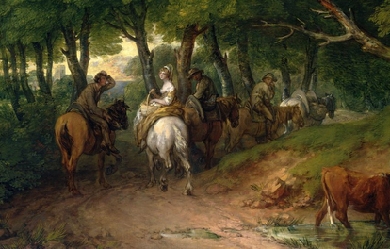

Helen Maria Williams (17 June 1759– 15 December 1827) was a British novelist, poet, and translator of French-language works. A religious dissenter, she was a supporter of abolitionism and of the ideals of the French Revolution; she was imprisoned in Paris during the Reign of Terror, but nonetheless spent much of the rest of her life in France. A controversial figure in her own time, the young Williams was favourably portrayed in a 1787 poem by William Wordsworth, but (especially at the height of the French Revolution) she was portrayed by other writers as irresponsibly politically radical and even as sexually wanton. Life She was born on 17 June 1759 in London to a Scottish mother, Helen Hay, and a Welsh army officer father, Charles Williams. Her father died when she was eight; the remnant of the family moved to Berwick-upon-Tweed, where she had what she herself would describe in the preface to a 1786 book of poems as “a confined education”. In 1781 she moved to London and met Andrew Kippis, who would have great influence on her literary career and political views and brought her into contact with the leading London intellectuals of her time. Her 1786 Poems touch on topics ranging from religion to a critique of Spanish colonial practices. She allied herself with the cult of feminine sensibility, deploying it politically in opposition to war ("Ode on the Peace", a 1786 poem about Peru) and slavery (the abolitionist “Poem on the Bill Lately Passed for Regulating the Slave Trade”, 1788). In the context of the Revolution Controversy, she came down on the side of the revolutionaries in her 1790 novel Julia and defied convention by travelling alone to revolutionary France, where she was hosted by Mme. Du Fossé, who had earlier, in London, given her lessons in French. Her letters from France marked a turn from being primarily a writer of poetry to one of prose. She enthusiastically attended the Fête de la Fédération on the anniversary of the storming of the Bastille and returning briefly to London in 1791 was a staunch, though not completely uncritical, defender of the Revolution. Returning to France in July 1791, she published a poem “A Farewell for two Years to England”; in fact she briefly visited England again in 1792, but only to persuade her mother and her sisters, Cecilia and Persis, to join her in France just as the country was moving toward the more violent phases of its revolution. After the September Massacres of 1792, she allied herself with the Girondists; as a saloniere, she also hosted Mary Wollstonecraft, Francisco de Miranda and Thomas Paine. After the violent downfall of the Gironde and the rise of the Reign of Terror, she and her family were thrown into the Luxembourg prison where she was allowed to continue working on translations of French-language works into English, including what would prove to be a popular translation of Bernardin St. Pierre’s novel Paul et Virginie, to which she appended her own prison sonnets. Upon her release, she travelled with John Hurford Stone to Switzerland. She was harshly criticised for this since Stone, separated from an unfaithful wife, was still legally a married man; the subsequent history of Williams and Stone’s relationship only tended to confirm the rumours. Nonetheless, her few poems from this period continue to express Dissenting piety and were published in volumes with those of other religiously like-minded poets. In 1798, she published A Tour in Switzerland, which included an account of her travels, political commentary, and the poem “A Hymn Written Amongst the Alps”. Williams’ 1801 Sketches of the State of Manners and Opinions in the French Republic showed a continued attachment to the original ideals of the French Revolution but a growing disenchantment with the rise of Napoleon; as emperor, he would declare her ode “The Peace signed between the French and the English” (also known as the “Ode on the Peace of Amiens”) to be treasonable to France. Nonetheless, he proved to be, in this respect, more lenient than the revolutionary government had been to this now-famous international literary figure: she spent a single day in prison and continued to live and write in Paris. After the Bourbon Restoration, she became a naturalised French citizen in 1818; nonetheless, in 1819 she moved to Amsterdam to live with a nephew she had helped raise. However, she was unhappy in Amsterdam and soon returned to Paris, where, until her death in 1827, she continued to be an important interpreter of French intellectual currents for the English-speaking world.

My name is Fatima Nusairat. I've been into poetry for about 2 years now. I must say it's pretty relaxing to read. It helps clear my head. Anyway, I am a proud Jordanian. I am from Amman but right now I lived in USA.I think poetry is the voice of the world. It changes lives. It changes a lot of things.We are all blessed with this groovy gift. God bless.
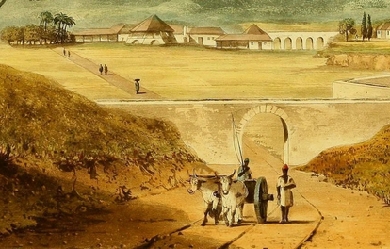
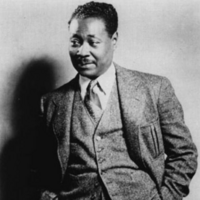
Festus Claudius “Claude” McKay (September 15, 1889– May 22, 1948) was a Jamaican-American writer and poet, who was a seminal figure in the Harlem Renaissance. He wrote four novels: Home to Harlem (1928), a best-seller that won the Harmon Gold Award for Literature, Banjo (1929), Banana Bottom (1933), and in 1941 a manuscript called Amiable With Big Teeth: A Novel of the Love Affair Between the Communists and the Poor Black Sheep of Harlem that has not yet been published. McKay also authored collections of poetry, a collection of short stories, Gingertown (1932), two autobiographical books, A Long Way from Home (1937) and My Green Hills of Jamaica (published posthumously), and a non-fiction, socio-historical treatise entitled Harlem: Negro Metropolis (1940). His 1922 poetry collection, Harlem Shadows, was among the first books published during the Harlem Renaissance. His Selected Poems was published posthumously, in 1953.
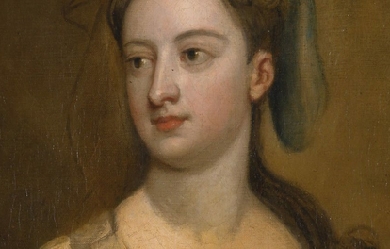
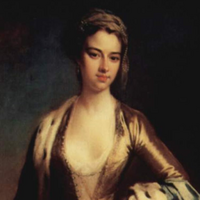
Lady Mary Wortley Montagu (baptized 26 May 1689– 21 August 1762) was an English aristocrat, letter writer and poet. Lady Mary is today chiefly remembered for her letters, particularly her letters from travels to the Ottoman Empire, as wife to the British ambassador to Turkey, which have been described by Billie Melman as “the very first example of a secular work by a woman about the Muslim Orient”. Aside from her writing, Lady Mary is also known for introducing and advocating for smallpox inoculation to Britain after her return from Turkey. Her writings usually address and challenge the hindering contemporary social attitudes towards women and their intellectual and social growth. Early life and education Lady Mary Wortley Montagu, Mary Pierrepont, was born in May 1689; her baptism took place on 26 May, at a few days old, at St. Paul’s Church in Covent Garden. She was the eldest child of Evelyn Pierrepont, 1st Duke of Kingston-upon-Hull, and his first wife, Mary (Fielding) Pierrepont. Her mother had three more children, two girls and a boy, before dying in October 1692. The children were raised by their Pierrepont grandmother until Mary was nine years old. Lady Mary was then passed to the care of her father upon her grandmother’s death. She began her education in her father’s home. Family holdings were extensive, including Thoresby Hall and Holme Pierrepont Hall in Nottinghamshire, and a house in West Dean in Wiltshire. To supplement the instruction of a despised governess, Lady Mary used the library in her father’s mansion, Thoresby Hall in Nottinghamshire, to “steal” her education, teaching herself Latin, a language reserved for men at the time. By 1705, at the age of fourteen or fifteen, Mary Pierrepont had written two albums filled with poetry, a brief epistolary novel, and a prose-and-verse romance modeled after Aphra Behn’s Voyage to the Isle of Love (1684). She also corresponded with two bishops, Thomas Tenison and Gilbert Burnet. Marriage and embassy to Ottoman Empire By 1710 Lady Mary had two possible suitors to choose from: Edward Wortley Montagu and Clotworthy Skeffington. Lady Mary corresponded with Edward Wortley Montagu via letters from 28 March 1710 to 2 May 1711. After May 1711 there was a break in contact between Lady Mary and Edward Wortley Montagu. Mary’s father, now Marquess of Dorchester, rejected Wortley Montagu as a prospect because he refused to entail his estate on a possible heir. Her father pressured her to marry Clotworthy Skeffington, heir to an Irish peerage. In order to avoid marriage to Skeffington, she eloped with Wortley. The marriage license is dated 17 August 1712, the marriage probably took place on 23 August 1712. The early years of Lady Mary Wortley Montagu’s married life were spent in the country. She had a son, Edward Wortley Montagu the younger, on 16 May 1713, in London. A couple of months later, on 1 July 1713 Lady Mary’s brother, aged twenty, died of smallpox and left behind two children. On 13 October 1714, her husband accepted post as Junior Commissioner of Treasury. When Lady Mary joined him in London, her wit and beauty soon made her a prominent figure at court. She was among the society of George I and the Prince of Wales, and counted amongst her friends Molly Skerritt, Lady Walpole, John, Lord Hervey, Mary Astell, Sarah Churchill, Duchess of Marlborough, Alexander Pope, John Gay, and Abbé Antonio Conti. In December 1715, Lady Mary contracted smallpox. She survived, but while she was ill someone circulated the satirical “court eclogues” she had been writing. One of the poems was read as an attack on Caroline, Princess of Wales, in spite of the fact that the “attack” was voiced by a character who was herself heavily satirized. In 1716, Edward Wortley Montagu was appointed Ambassador at Istanbul. In August 1716, Lady Mary accompanied him to Vienna, and thence to Adrianople and Istanbul. He was recalled in 1717, but they remained at Istanbul until 1718. While away from England, the Wortley Montagu’s had a daughter on 19 January 1718, who would grow up to be Mary, Countess of Bute. After an unsuccessful delegation between Austria and Turkey/Ottoman Empire, they set sail for England via the Mediterranean, and reached London on 2 October 1718. The story of this voyage and of her observations of Eastern life is told in Letters from Turkey, a series of lively letters full of graphic descriptions; Letters is often credited as being an inspiration for subsequent female travelers/writers, as well as for much Orientalist art. During her visit she was sincerely charmed by the beauty and hospitality of the Ottoman women she encountered, and she recorded her experiences in a Turkish bath. She also recorded a particularly amusing incident in which a group of Turkish women at a bath in Sofia, horrified by the sight of the stays she was wearing, exclaimed that "the husbands in England were much worse than in the East, for [they] tied up their wives in little boxes, the shape of their bodies". Lady Mary wrote about misconceptions previous travelers, specifically male travelers, had recorded about the religion, traditions and the treatment of women in the Ottoman Empire. Her gender and class status provided her with access to female spaces, that were closed off to males. Her personal interactions with Ottoman women enabled her to provide a more accurate account of Turkish women, their dress, habits, traditions, limitations and liberties. Lady Mary returned to the West with knowledge of the Ottoman practice of inoculation against smallpox, known as variolation. Ottoman smallpox inoculation Lady Mary Wortley Montagu defied convention most memorably by introducing smallpox inoculation to Western medicine after witnessing it during her travels and stay in the Ottoman Empire. In the Ottoman Empire, she visited the women in their segregated zenanas, making friends and learning about Turkish customs. There she witnessed the practice of inoculation against smallpox—variolation—which she called engrafting, and wrote home about it a number of her letters. Variolation used live smallpox virus in the pus taken from a smallpox blister in a mild case of the disease and introduced it into scratched skin of a previously uninfected person to promote immunity to the disease. Lady Mary’s brother had died of smallpox in 1713 and her own famous beauty had been marred by a bout with the disease in 1715. Lady Mary was eager to spare her children, thus, in March 1718 she had her nearly five-year-old son inoculated with the help of Embassy surgeon Charles Maitland. On her return to London, she enthusiastically promoted the procedure, but encountered a great deal of resistance from the medical establishment, because it was an Oriental folk treatment process. In April 1721, when a smallpox epidemic struck England, she had her daughter inoculated by Charles Maitland, the same physician who had inoculated her son at the Embassy in Turkey, and publicized the event. This was the first such operation done in Britain. She persuaded Princess Caroline to test the treatment. In August 1721, seven prisoners at Newgate Prison awaiting execution were offered the chance to undergo variolation instead of execution: they all survived and were released. Controversy over smallpox inoculation intensified, however, Caroline, Princess of Wales was convinced. The Princess’s two daughters were successfully inoculated in April 1722 by French-born surgeon Claudiius Amyand. In response to the general fear of inoculation, Lady Mary, under a pseudonym, wrote and published an article describing and advocating in favor of inoculation in September 1722. In later years, Edward Jenner, who was 13 years old when Lady Mary died, developed the much safer technique of vaccination using cowpox instead of smallpox. As vaccination gained acceptance, variolation gradually fell out of favor. Later years After returning to England, Lady Mary took less interest in court compared to her earlier years. Instead she was more focused on the upbringing of her children, reading, writing and editing her travel letters—which she then chose not to publish. Before starting for the East Lady Mary Wortley Montagu had met Alexander Pope, and during her Embassy travels with her husband, they wrote each other a series of letters. While Pope may have been fascinated by her wit and elegance, Lady Mary’s replies to his letters reveal that she was not equally smitten. Very few letters passed between them after Lady Mary’s return to England, and various reasons have been suggested for the subsequent estrangement. In 1728, Pope attacked Lady Mary in his Dunciad inaugurating a decade in which most of his publications made some sort of allegation against her. Lady Mary went through a series of trials with her children. In 1726 and 1727, Lady Mary’s son ran away from Westminster School several times. He was entrusted to a tutor with strict orders to keep young Edward Montagu abroad. In later years her son managed to return to England without permission and continued to have a strained relationship with both his parents. In August 1736, Lady Mary’s daughter, married John Stuart, 3rd Earl of Bute, despite her parent’s disapproval of the match. The same year Lady Mary met and fell in love with Francesco Algarotti, Count Algarotti, competing with an equally smitten John Hervey for the Count’s affections. Lady Mary wrote many letters to Algarotti in English and in French after his departure from England in September 1736. In July 1739 Lady Mary departed England ostensibly for health reasons declaring her intentions to winter in the south of France. In reality, she left to visit and live with Algarotti in Venice. Their relationship ended in 1741 after Lady Mary and Algarotti were both on diplomatic mission in Turin. Lady Mary stayed abroad and traveled extensively. After traveling to Venice, Florence, Rome, Genoa and Geneva, she finally settled in Avignon in 1742. She left Avignon in 1746 for Brescia, where she fell ill and stayed for nearly a decade, leaving for Lovere in 1754. After August 1756, she resided in Venice and Padua and saw Algarotti again in November. Lady Mary exchanged letters with her daughter, Lady Bute, discussing topics such as philosophy, literature, and the education of girls, as well as conveying details of her geographical and social surroundings. Lady Mary received news of her husband Edward Wortley Montagu’s death in 1761 and left Venice for England. En route to London, she handed her Embassy Letters to the Rev. Benjamin Sowden of Rotterdam, for safe keeping and “to be dispos’d of as he thinks proper”. Lady Mary reached London in January 1762, and died in the year of her return, on 21 August 1762. Important works and literary place Although Lady Mary Wortley Montagu is now best known for her Embassy Letters, she wrote poetry and essays as well. A number of Lady Mary’s poems and essays were printed in her lifetime, either without or with her permission, in newspapers, in miscellanies, and independently. Montagu did not intend to publish her poetry, but it did circulate widely, in manuscript, among members of her own social circle. Lady Mary was highly suspicious of any idealizing literary language. She wrote most often in heroic couplets, a serious poetic form to employ, and, according to Susan Staves,"excelled at “answer poems.”. Some of her widely anthologized poems include “Constantinople” and “Epistle from Mrs. Yonge to her Husband.” “Constantinople,” written January 1718, is a beautiful poem in heroic couplets describing Britain and Turkey through human history, and representing the state of mind “of knaves, coxcombs, the mob, and party zealous—all characteristic of the London of her time.”. “Epistle from Mrs. Yonge to her Husband,” written 1724, stages a letter from Mrs. Yonge to her libertine husband and exposes the social double standard which led to the shaming and distress of Mrs. Yonge after her divorce. In 1737 and 1738, Lady Mary published anonymously a political periodical called the Nonsense of Common-Sense, supporting the Robert Walpole government (the title was a reference to a journal of the liberal opposition entitled Common Sense). She wrote six Town Eclogues. She wrote notable letters describing her travels through Europe and the Ottoman Empire; these appeared after her death in three volumes. Lady Mary corresponded with Anne Wortley and wrote courtship letters to her future husband Edward Wortley Montagu, as well as love letters to Francesco Algarotti. She corresponded with notable writers, intellectuals and aristocrats of her day. She wrote gossip letters and letters berating the vagaries of fashionable people to her sister, Lady Mar, and exchanged intellectual letters with her adult daughter, Lady Bute. Although, not published during her lifetime, her letters from Turkey were clearly intended for print. She revised them extensively and gave a transcript to the Rev. Benjamin Sowden in Rotterdam in 1761. During the twentieth century Lady Mary’s letters were edited separately from her essays, poems and plays. Montagu’s Turkish letters were to prove an inspiration to later generations of European women travelers and writers. In particular, Montagu staked a claim to the authority of women’s writing, due to their ability to access private homes and female-only spaces where men were not permitted. The title of her published letters refers to “Sources that Have Been Inaccessible to Other Travellers”. The letters themselves frequently draw attention to the fact that they present a different (and, Montagu asserts, more accurate) description than that provided by previous (male) travelers: “You will perhaps be surpriz’d at an Account so different from what you have been entertaind with by the common Voyage-writers who are very fond of speaking of what they don’t know.”. Montagu provides an intimate description of the women’s bathhouse in Sofia, in which she derides male descriptions of the bathhouse as a site for unnatural sexual practices, instead insisting that it was “the Women’s coffee house, where all the news of the Town is told, Scandal invented, etc”. However, Montagu’s detailed descriptions of nude Oriental beauties provided inspiration for male artists such as Ingres, who restored the explicitly erotic content that Montagu had denied. In general, Montagu dismisses the quality of European travel literature of the 18th century as nothing more than "trite observations…superficial…[of] boys [who] only remember where they met with the best wine or the prettyest women.". Montagu’s Turkish letters were frequently cited by imperial women travelers, more than a century after her journey. Such writers cited Montagu’s assertion that women travelers could gain an intimate view of Turkish life that was not available to their male counterparts. However, they also added corrections or elaborations to her observations. In 1739 a book was printed by an unknown author under the pseudonym “Sophia, a person of quality”, titled Woman not Inferior to Man. This book is often attributed to Lady Mary. Her Letters and Works were published in 1837. Montagu’s octogenarian granddaughter Lady Louisa Stuart contributed to this, anonymously, an introductory essay called Biographical Anecdotes of Lady M. W. Montagu, from which it was clear that Stuart was troubled by her grandmother’s focus on sexual intrigues and did not see Lady Mary Wortley Montagu’s Account of the Court of George I at his Accession as history. However, Montagu’s historical observations, both in the “Anecdotes” and the “Turkish Embassy Letters,” prove quite accurate when put in context. Despite the availability of her work in print and the revival efforts of Feminist scholars, the complexity and brilliance of Lady Mary Wortley Montagu’s extensive body of work has not yet been recognized to the fullest.










